SAUNDERS
miniata
for Accordion solo, Piano solo, Orchestra and Choir
Full Score


miniata
for Accordion solo, Piano solo, Orchestra and Choir
Full Score

for Accordion solo, Piano solo, Orchestra and Choir
Full Score
miniata rubricate
vermilion
L. coloured with red lead, painted with vermilion or native cinnabar. L. rubricate illuminate (vermilion).
/’ru:bri,keit/ v.tr. 1 mark with red; print or write in red. 2 provide with rubrics. (L rubricare f. rubrica (terra) red (earth or ochre) as writing-material, rel. to rubeus red). a bright red pigment made by grinding cinnabar (cinnabar – a bright red mineral form of mercuric sulphide from which mercury is obtained).
The Concise Oxford Dictionary
The queen of reds is Vermilion. Cinnabar. Mercuris sulphide. Sanguis draconis (dragon’s blood), the alchemic uroboros, the dragon of the philosophers.
Derek Jarman, Chroma: A book of Colour (Vintage, 1995)
Vermilion is a red with a feeling of sharpness, like a glowing steel which can be cooled by water. Vermilion is quenched by blue, for it can support no mixture with a cold colour. The glow of red is within itself.
Wassily Kandinsky, Concerning the Spiritual in Art
Surface, weight and feel are part of the reality of musical performance: the weight of the bow on the string; the differentiation of touch of the finger on the piano key; the expansion of the muscles between the shoulder blades drawing sound out of the accordion; the in-breath preceding the “heard” tone....
Feeling the weight of sound is an integral part of the composing process. The essential materiality of sound is for me of primary importance. Being aware of the grit and noise of an instrument, or a voice, reminds us of the presence of a fallible physical body behind the sound. This physical presence of the musician and his acoustic instrument, and of sound itself, served to inspire the material basis of the work.
Weight refers equally to silence as to sound. The placing of “silence” is at least as important as the actual notes composed. “Silence” is an active compositional tool, since the framing of a gesture creates the space within which sound is heard. To a certain extent, a sound makes silence audible – or at least what we perceive to be “silence”. It is comparable to light making darkness visible. The act of composing sets sound in motion, drawing them out from beneath this surface of “silence”, makes visible.
Two extracts from Samuel Beckett’s Company served to accompany the composing process. The text does not appear in the piece, but it is written here to illuminate certain ideas which accompanied its development:
Now and then. In dark and silence to close as if to light the eyes and hear a sound. Some object moving from its place to its last place. Some soft thing softly stirring soon to stir no more. To darkness visible to close the eyes and hear if only that. Some soft thing stirring soon to stir no more.
By the voice a faint light is shed. Dark lightens while it sounds. Deepens when it ebbs. Lightens with flow back to faint full. Is whole again when it ceases.
Samuel Beckett, Company (London: John Calder, 1979)
Rebecca Saunders Berlin, June 2004
With thanks to Christoph Grund
An ARD and BMW musica viva composition prize commission
Written for frst performance at the Donaueschingen Music Days 2004, performed by Teo Anzellotti, Nie Hodges, SWR Vokalensemble Stuttgart, SWR-Sinfonieorchester and conducted by Hans Zender
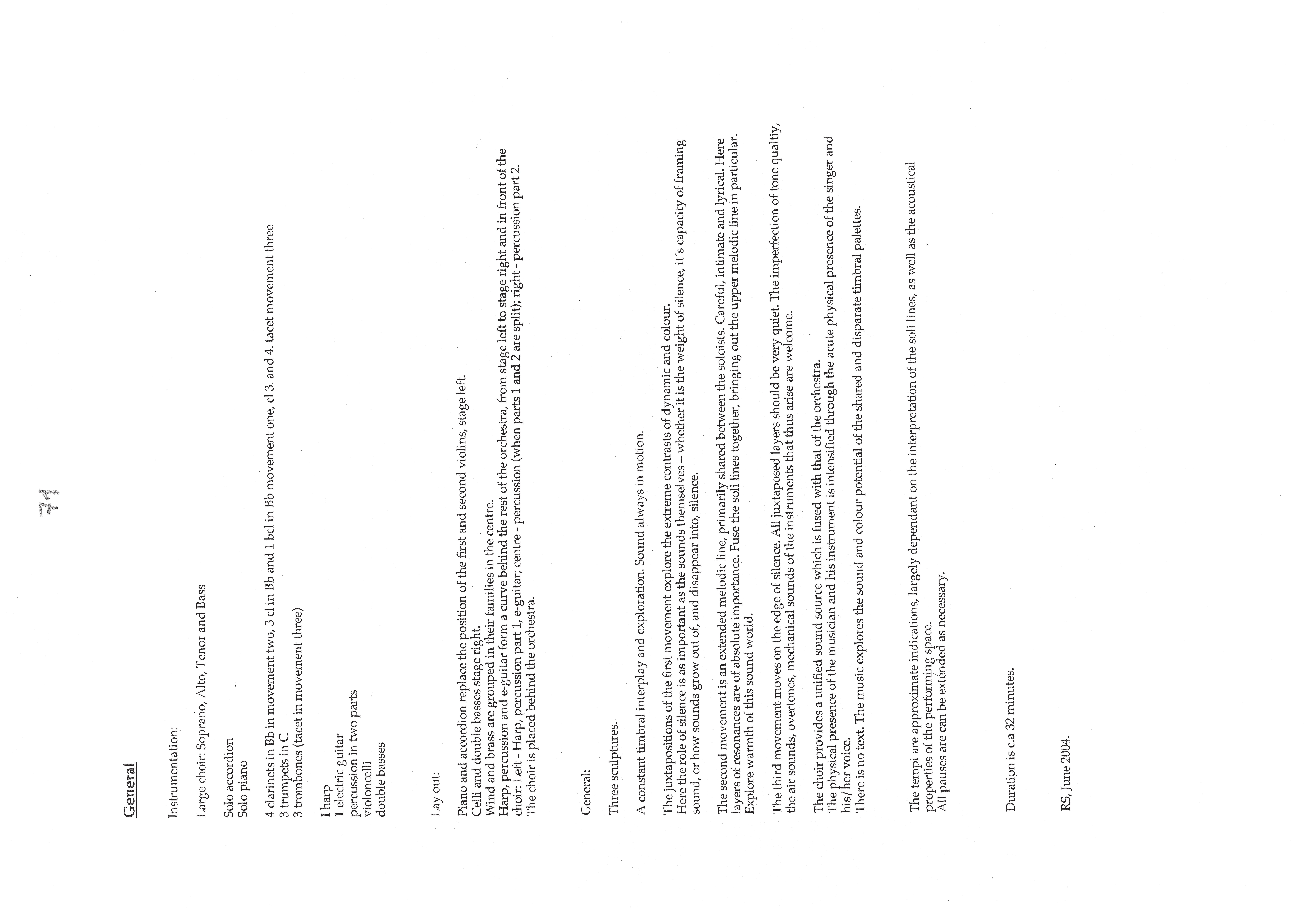
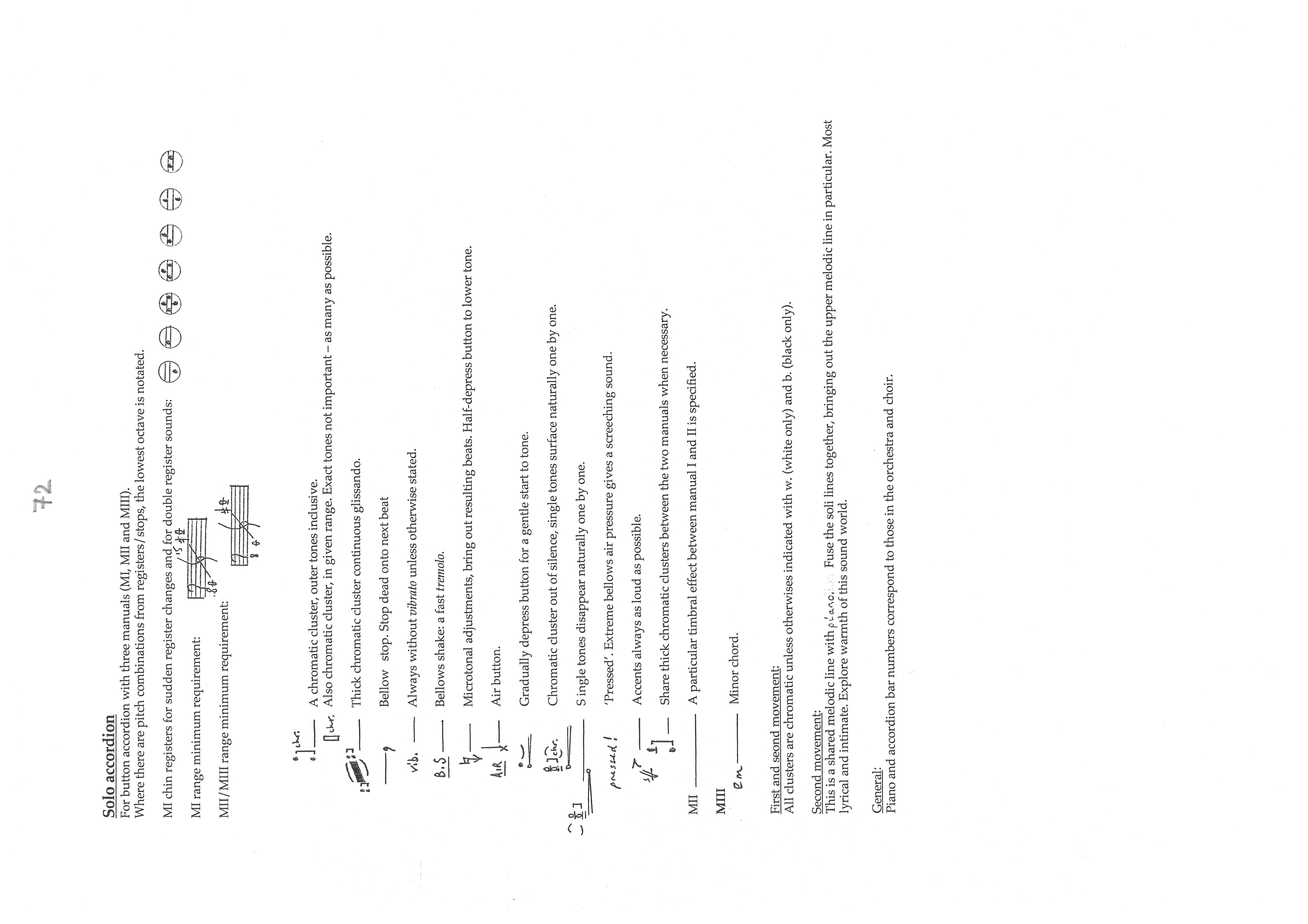
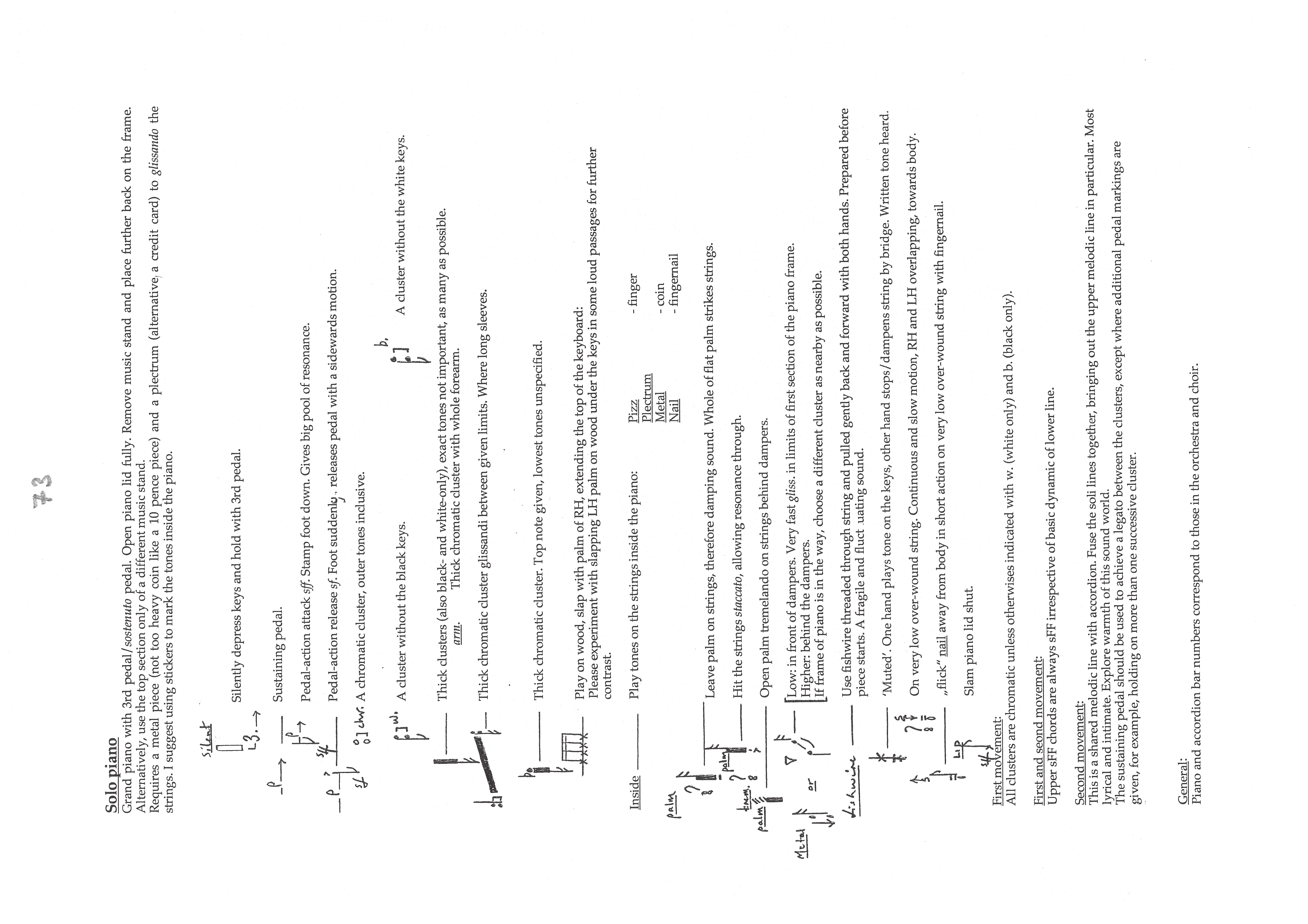
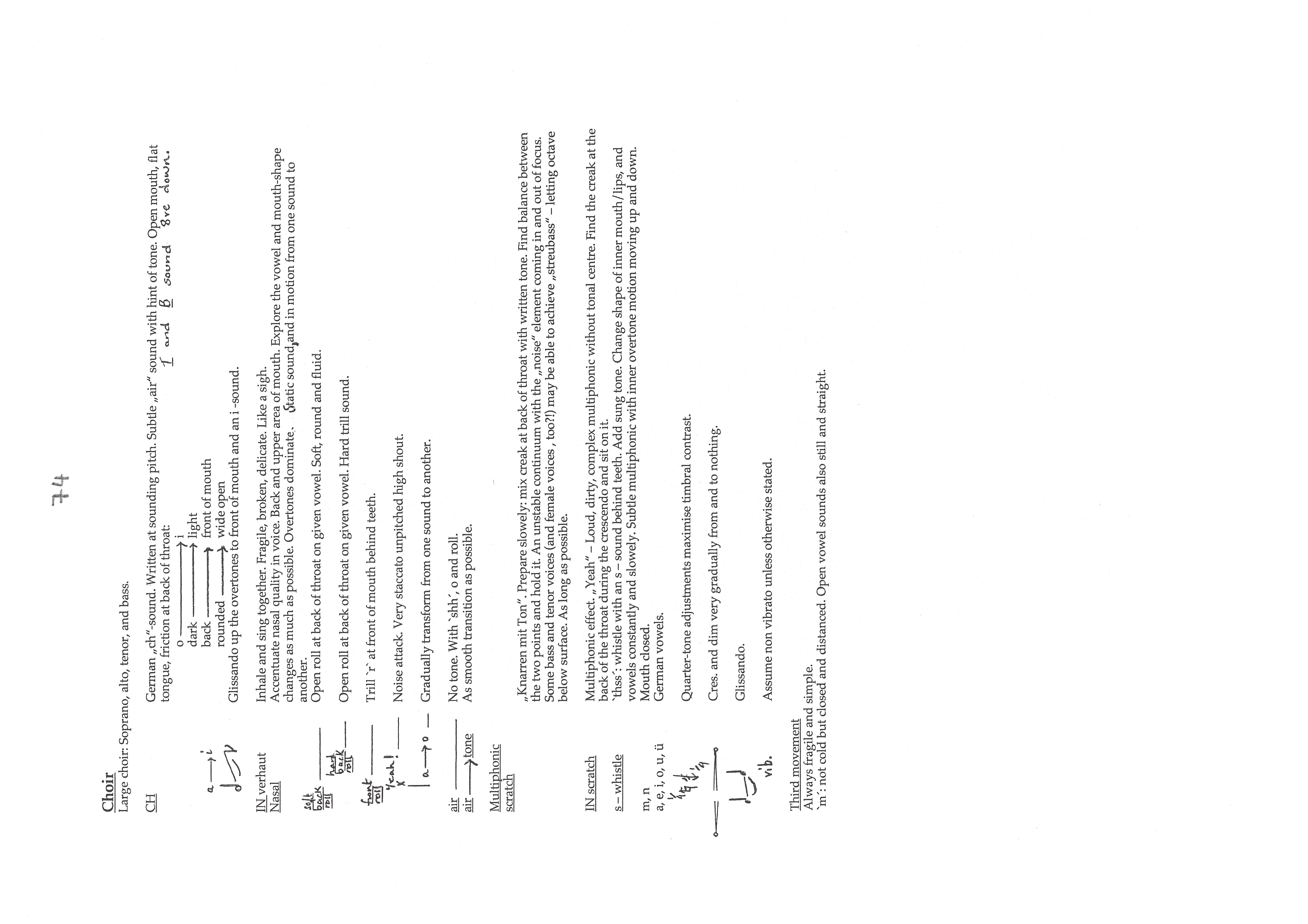
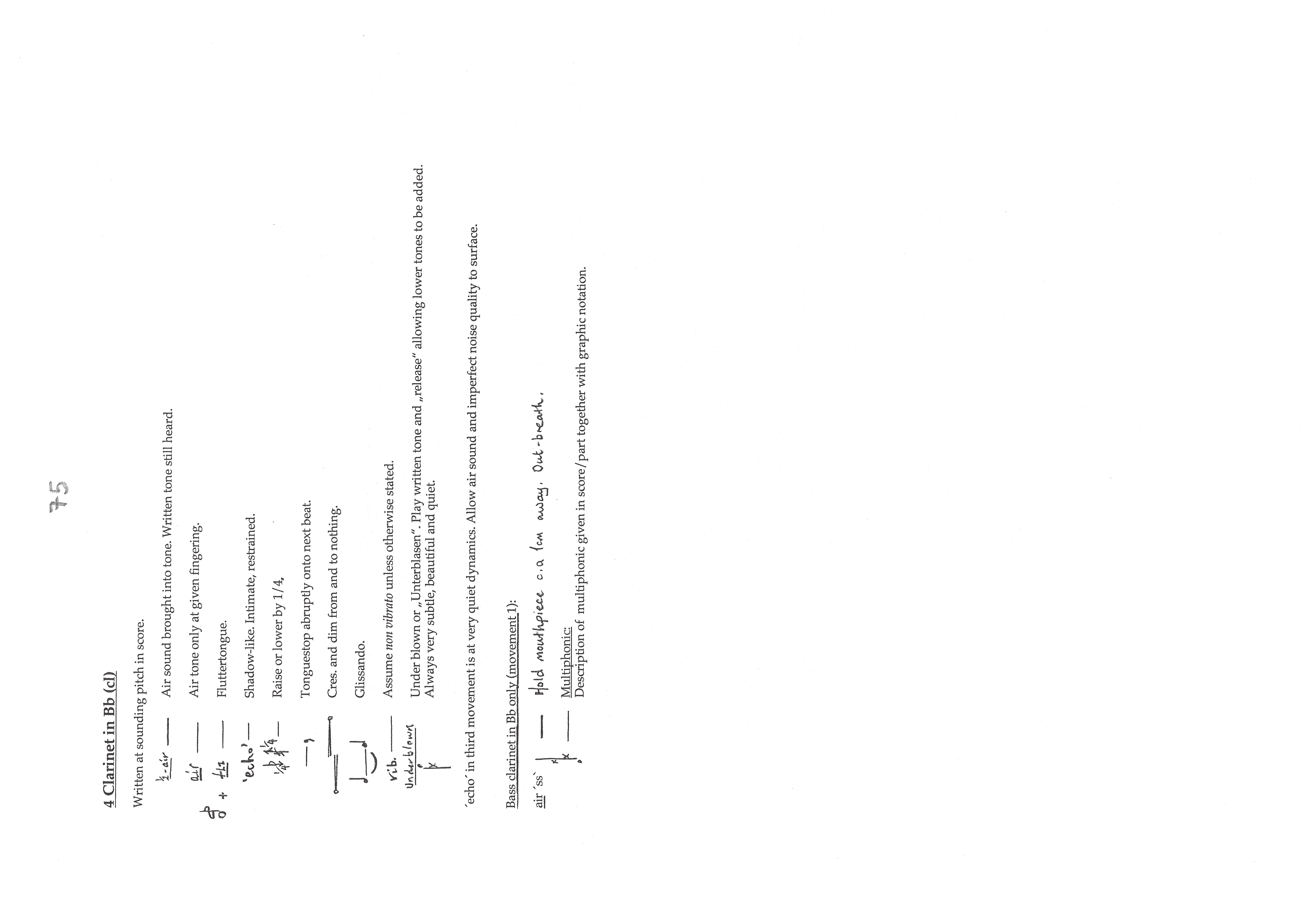
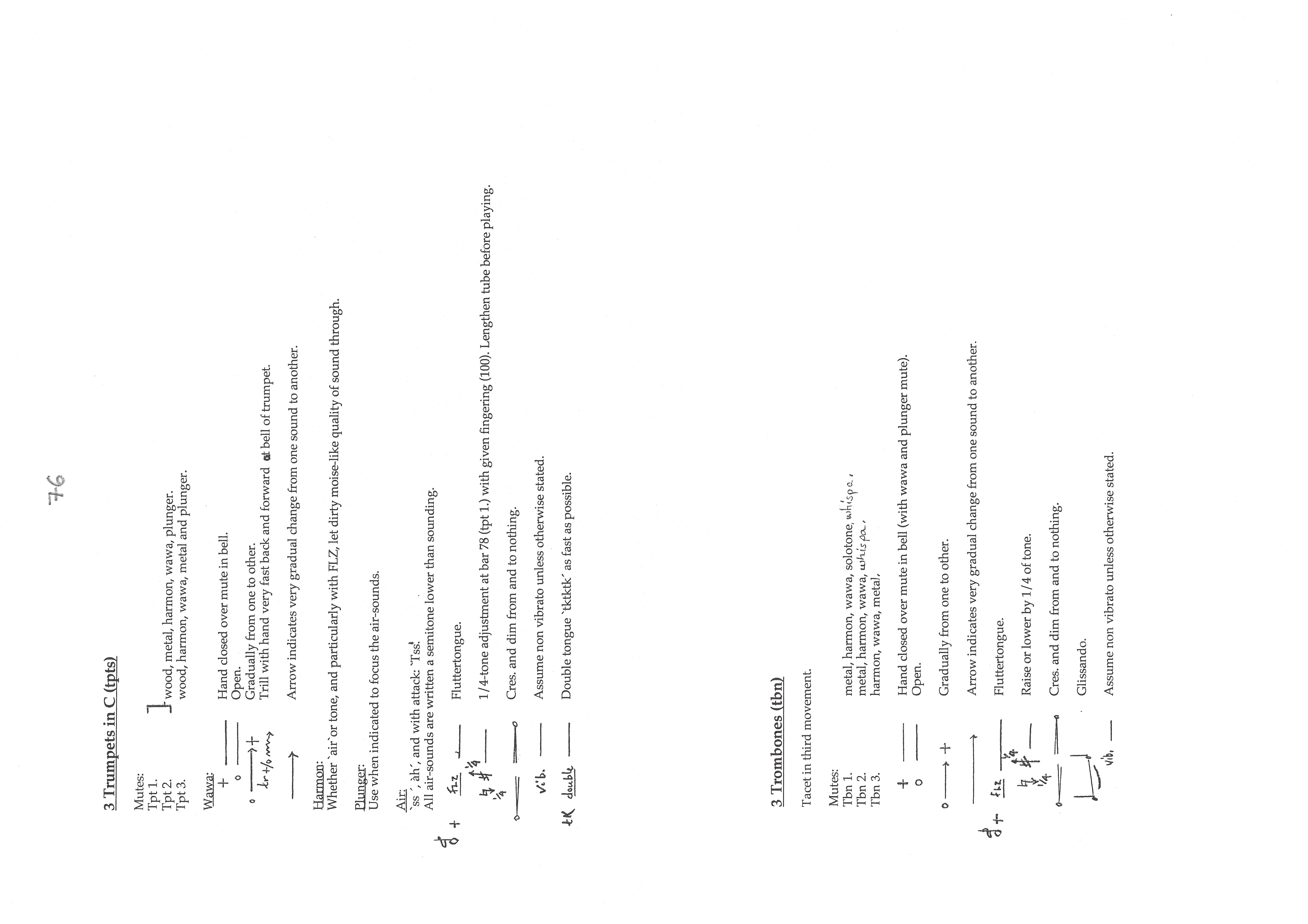
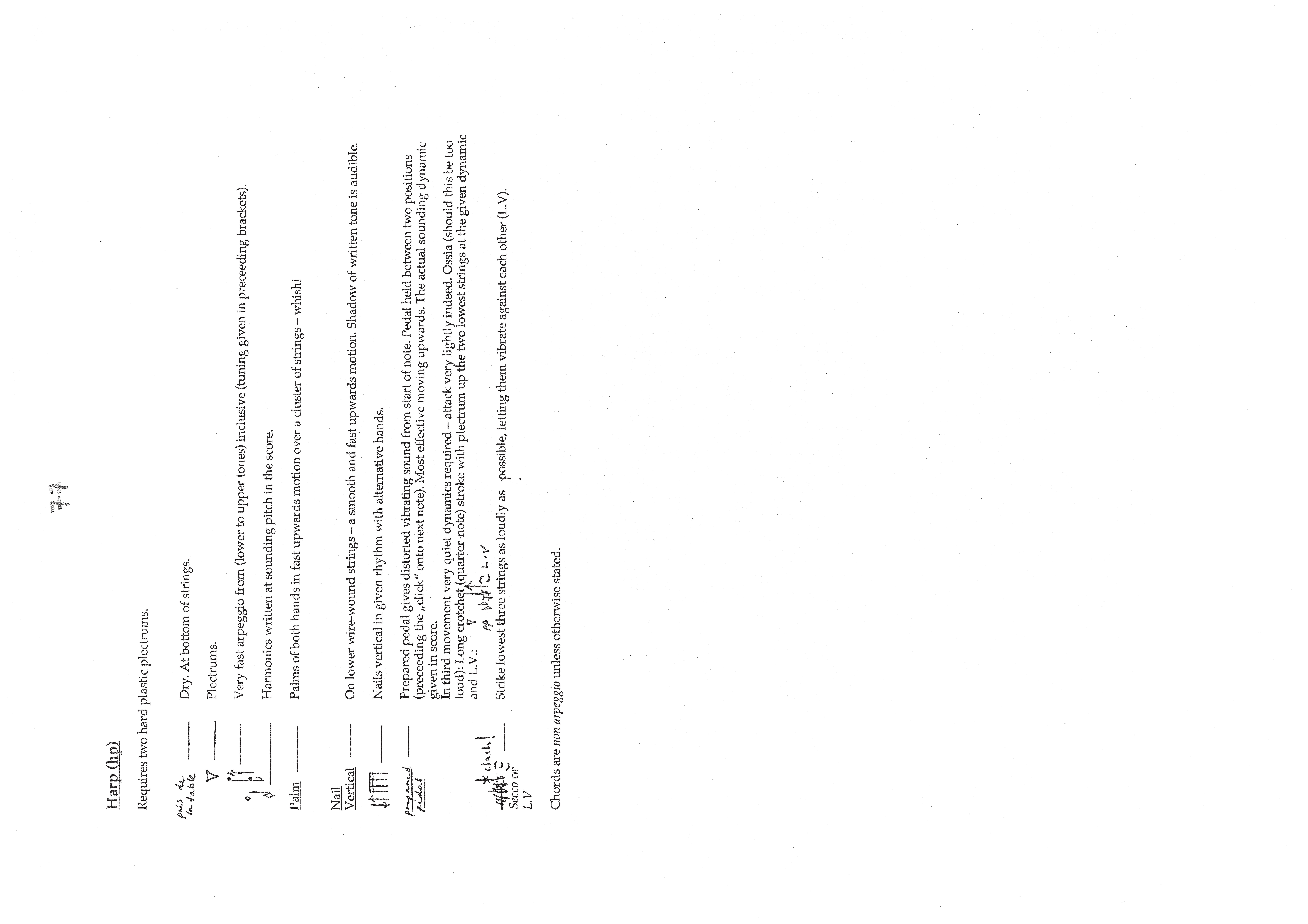
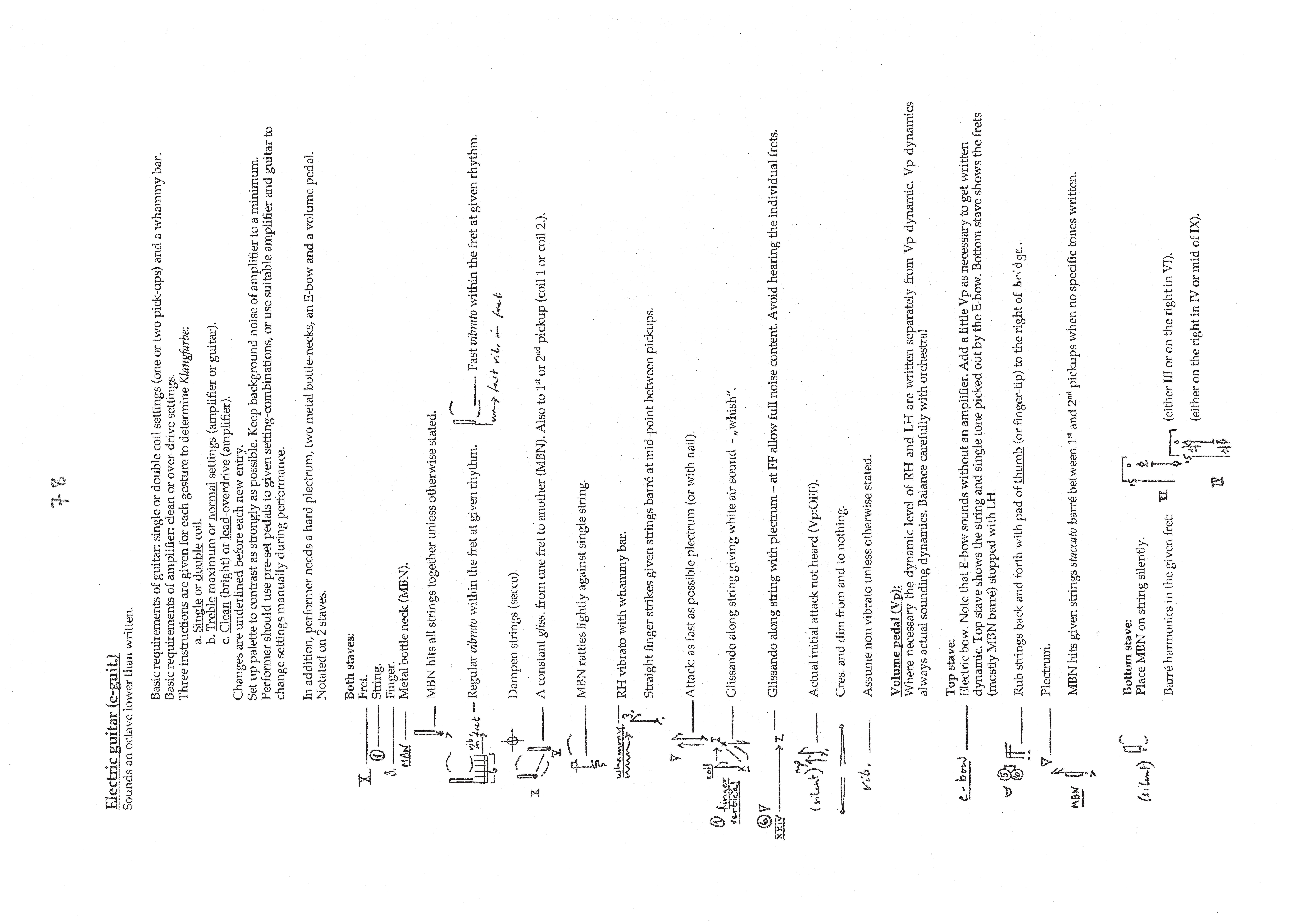

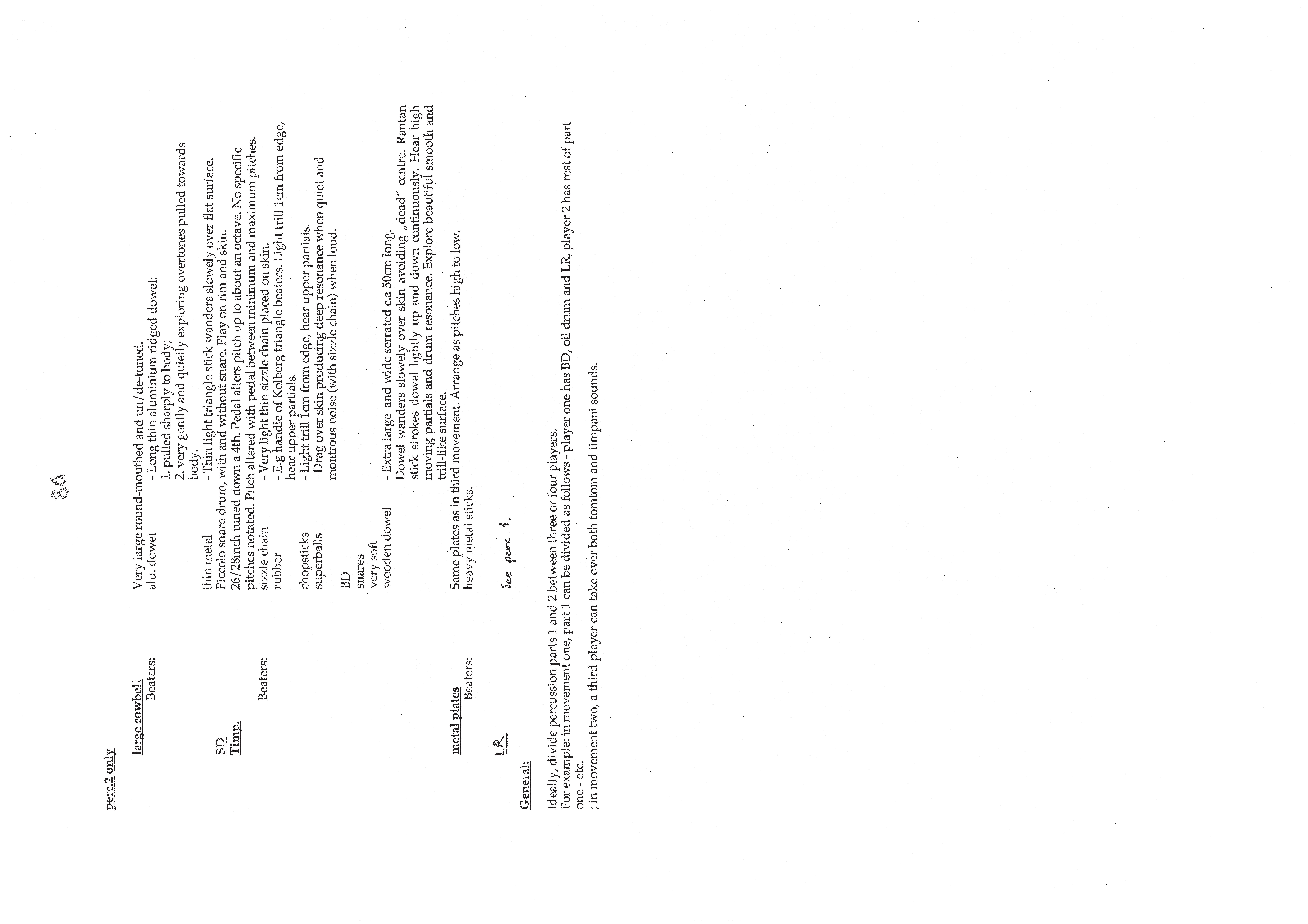
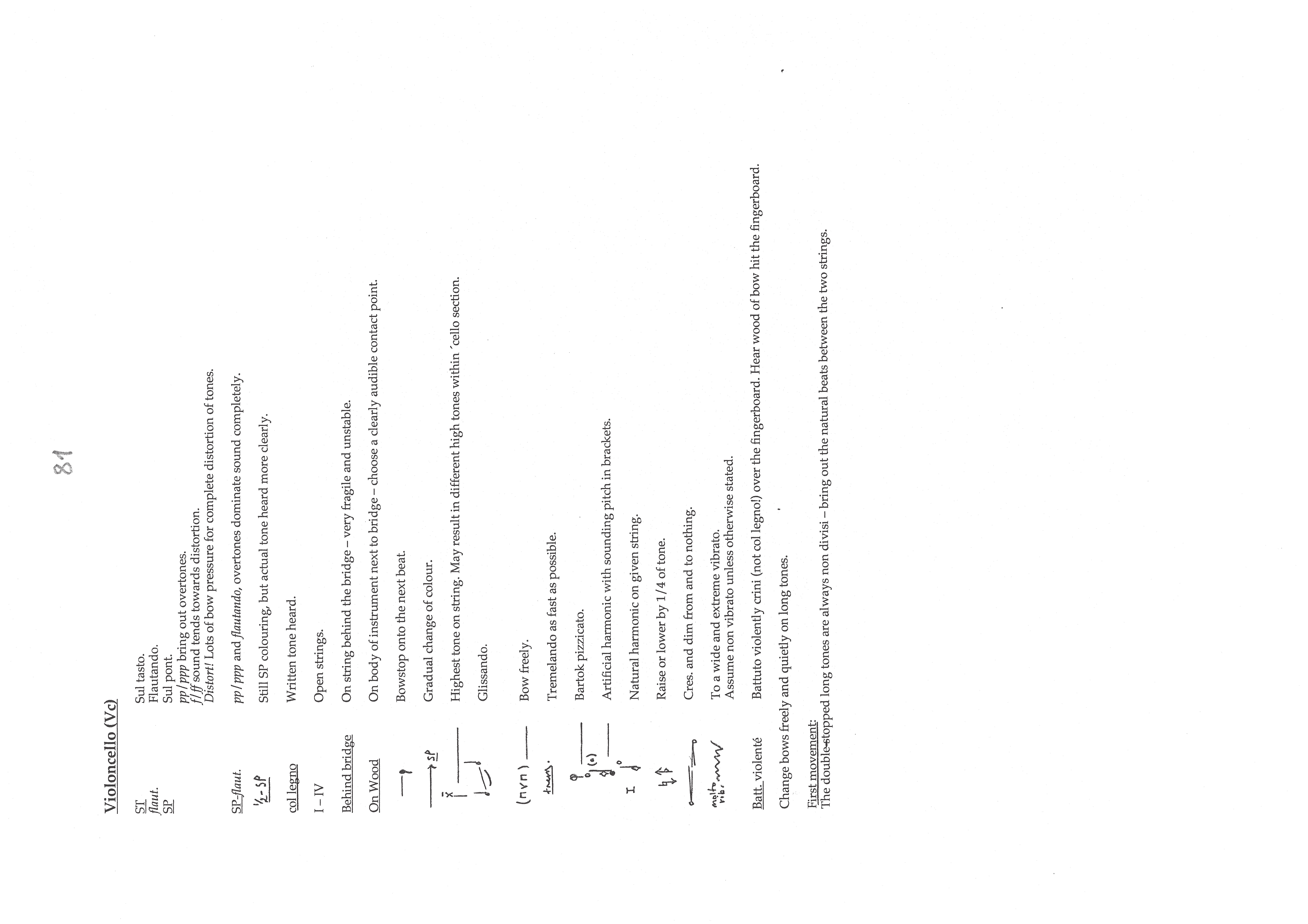
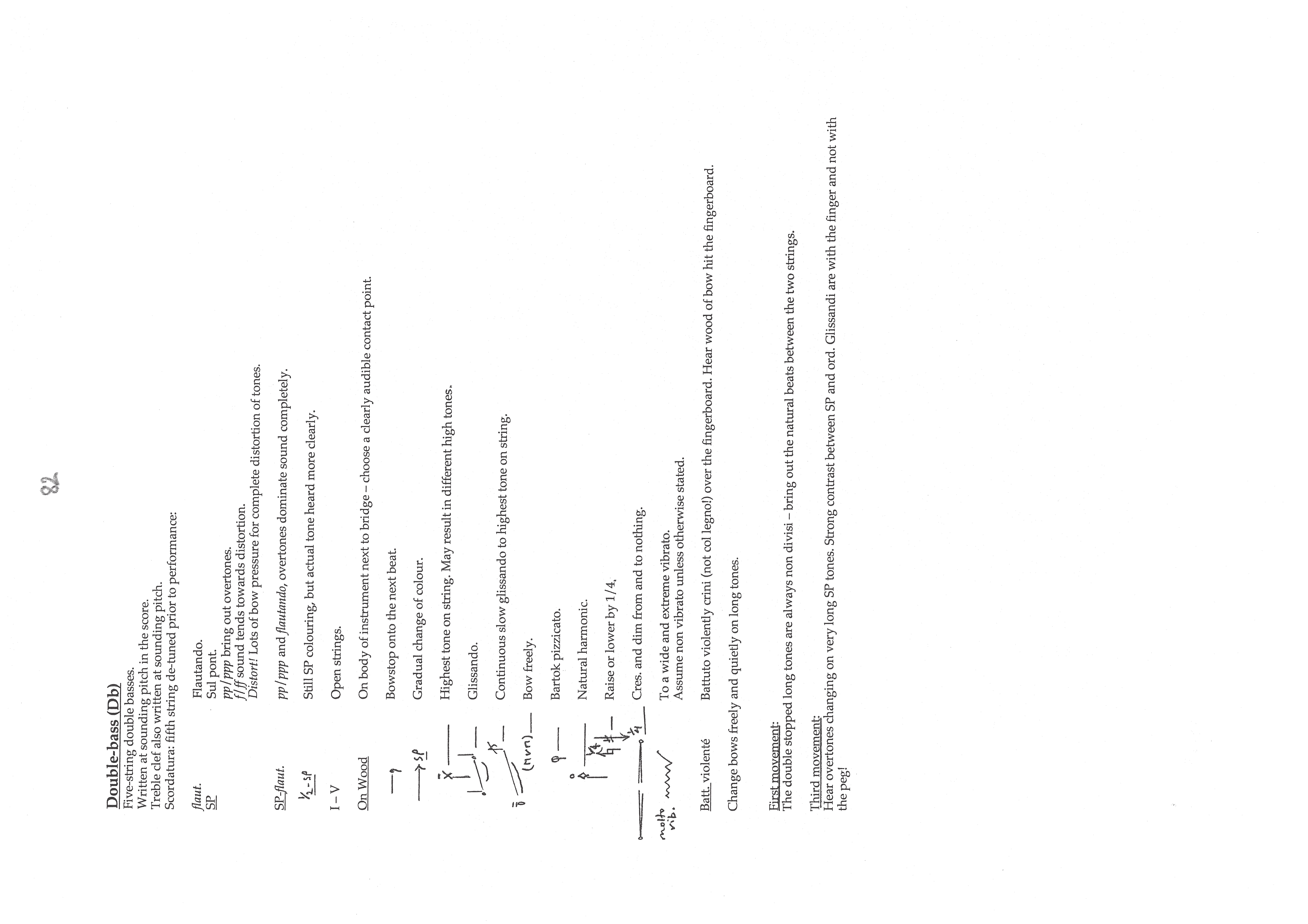
for Accordion solo, Piano solo, Orchestra and Choir Rebecca Saunders
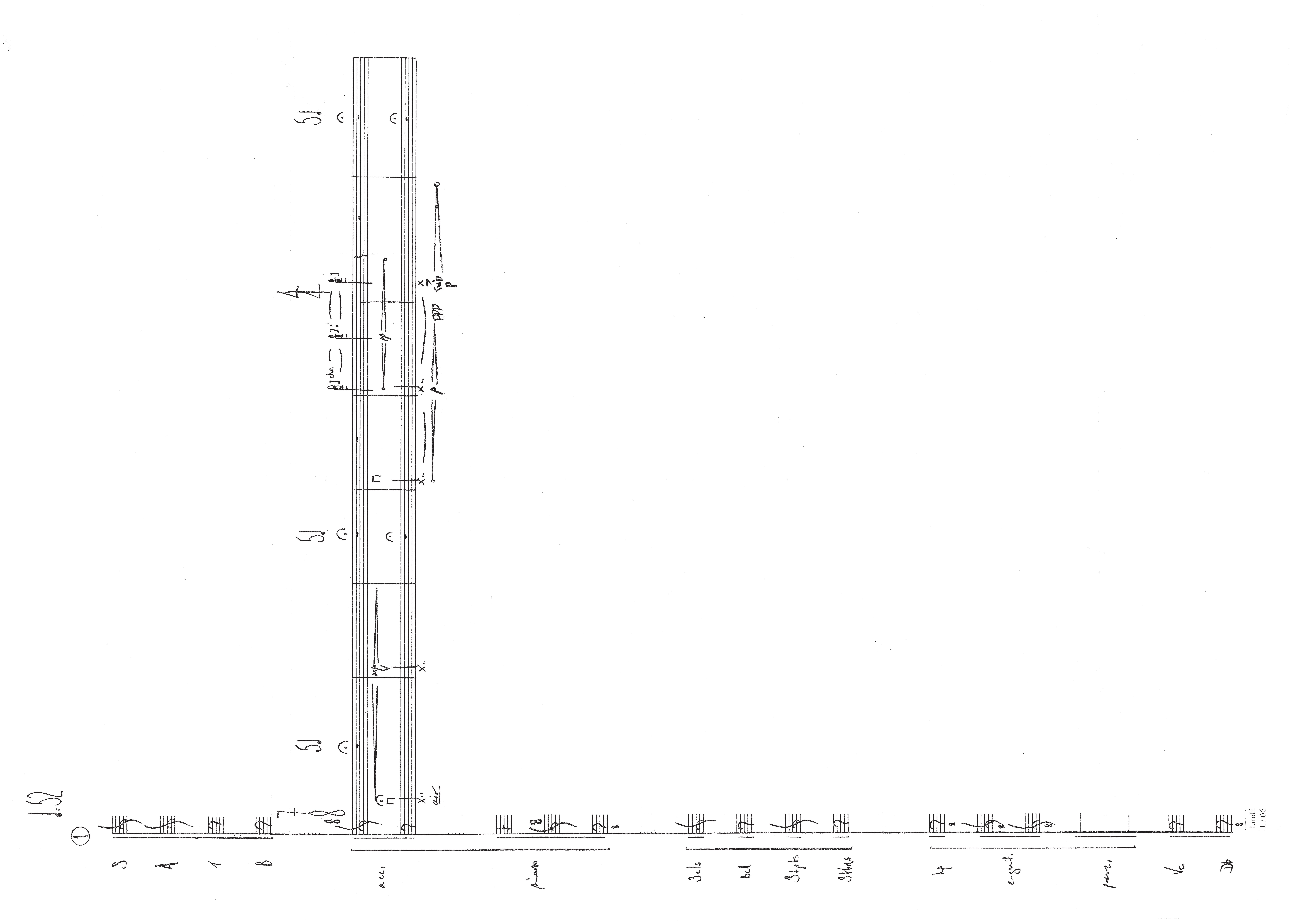
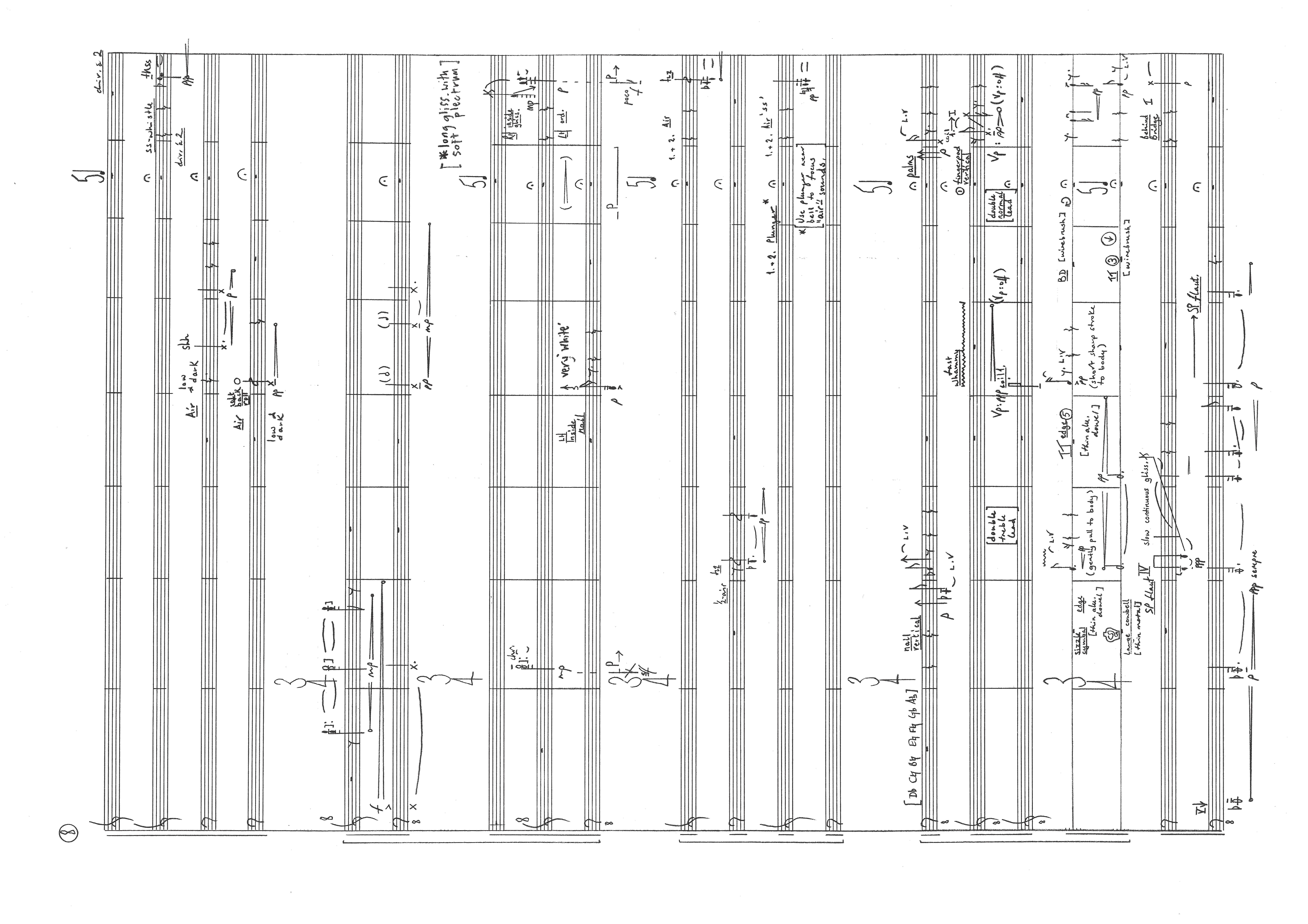
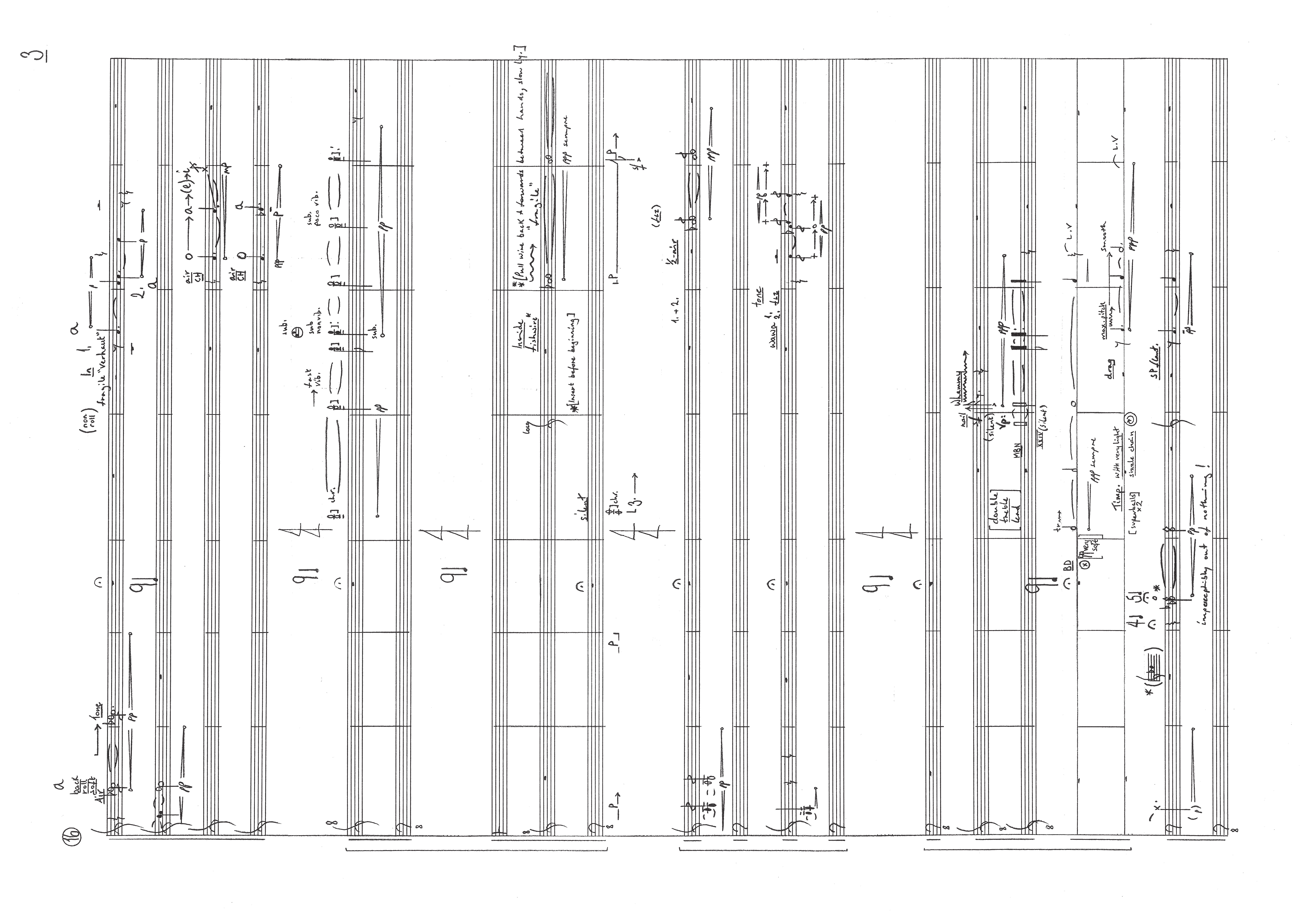

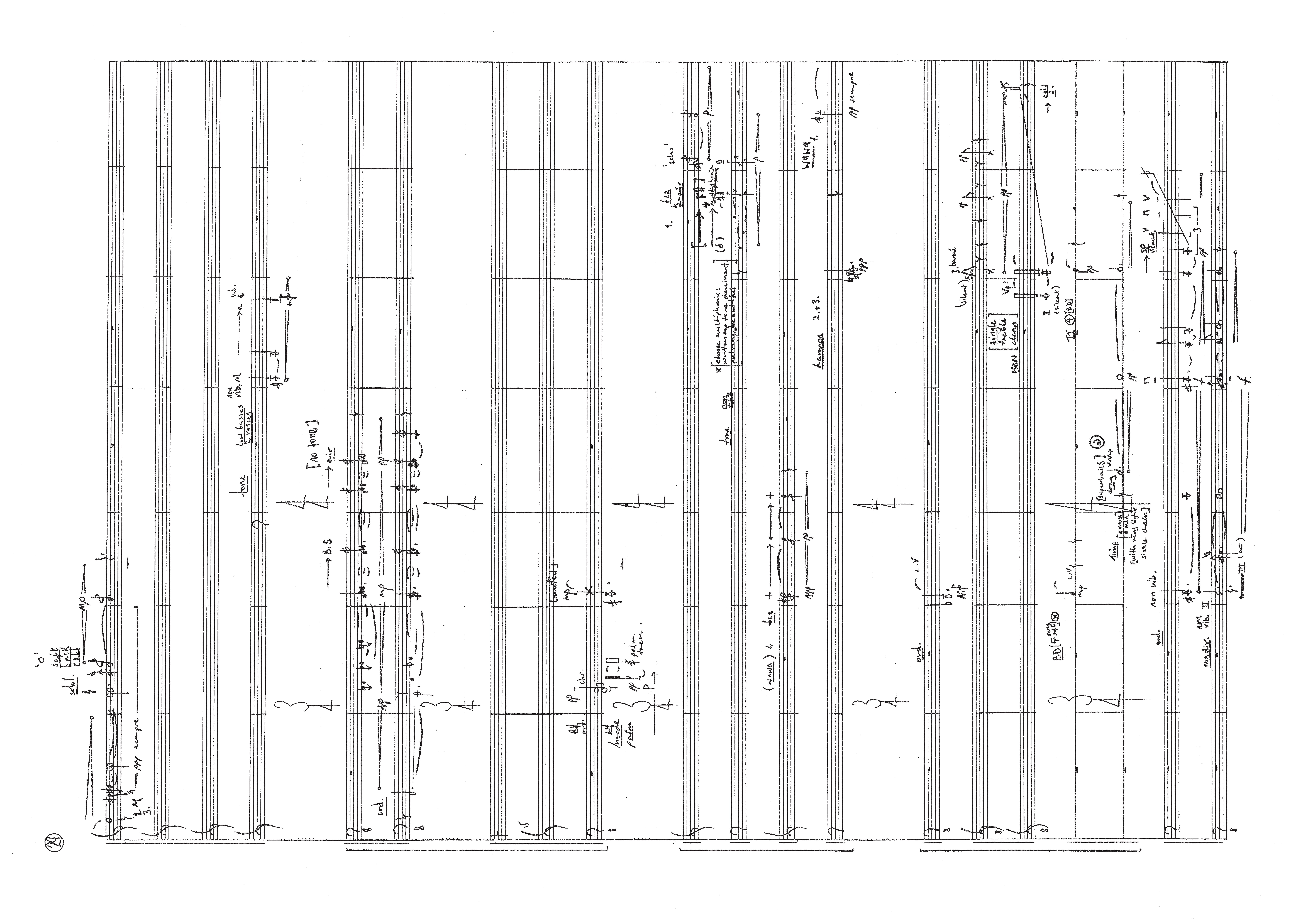
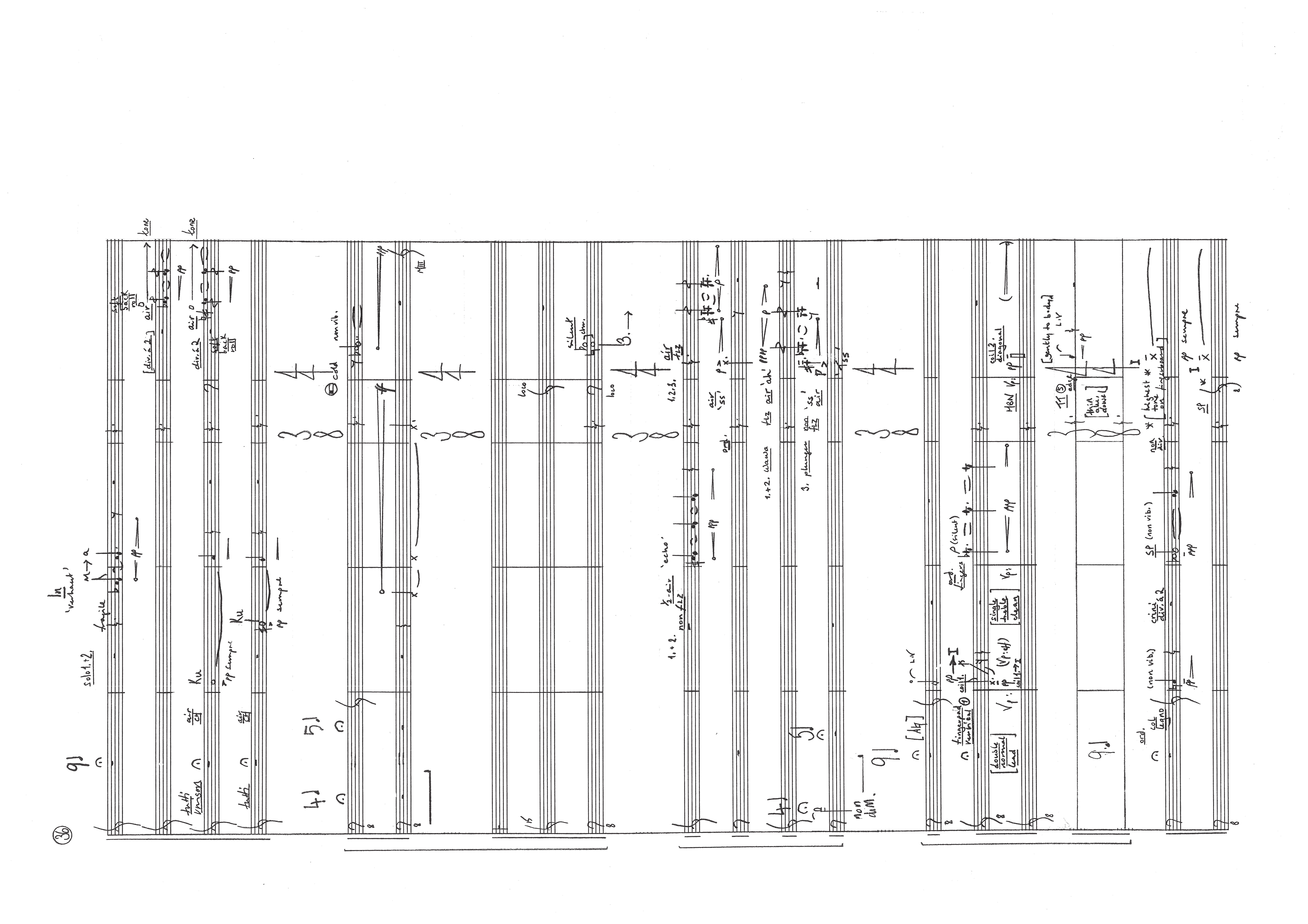
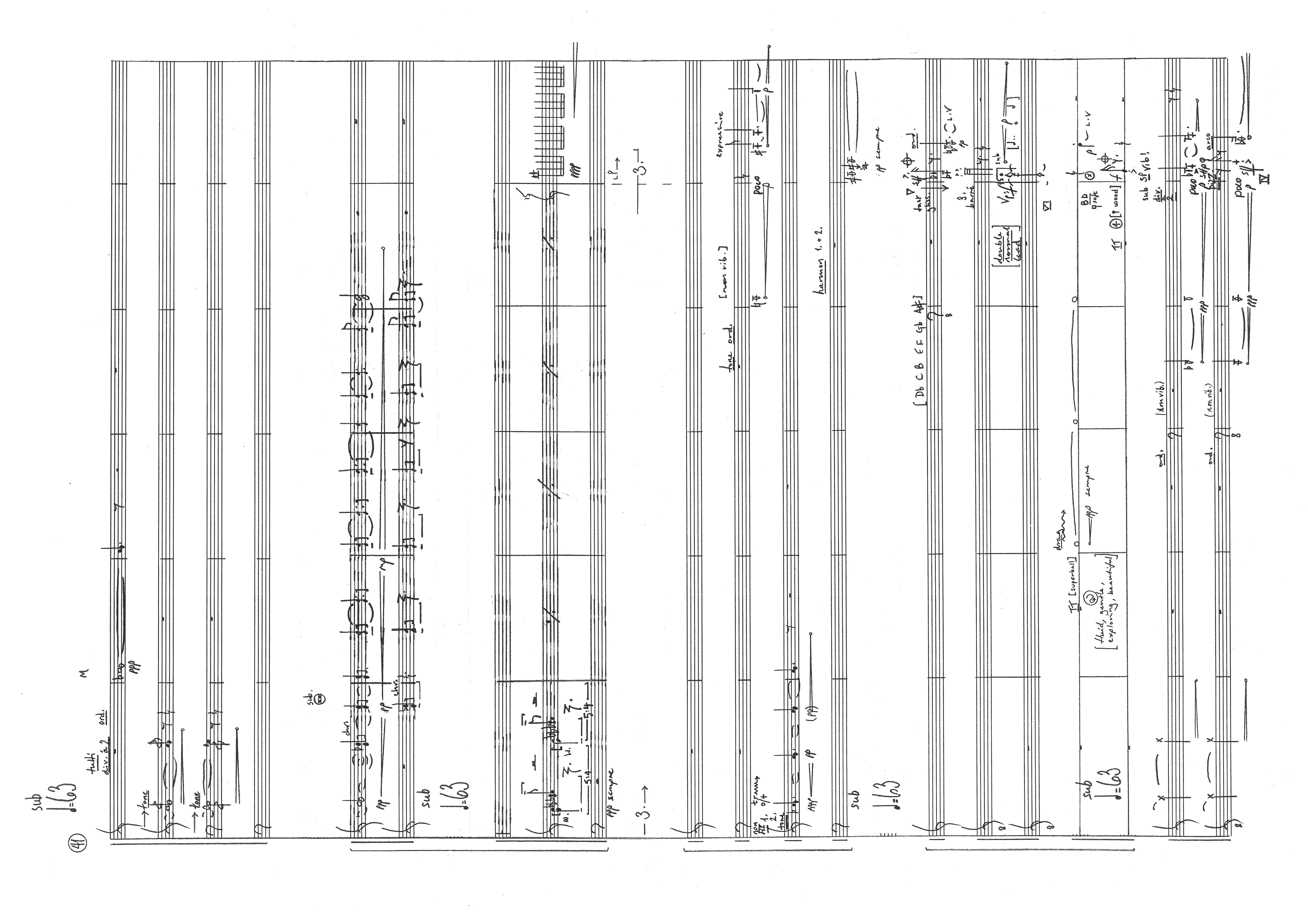
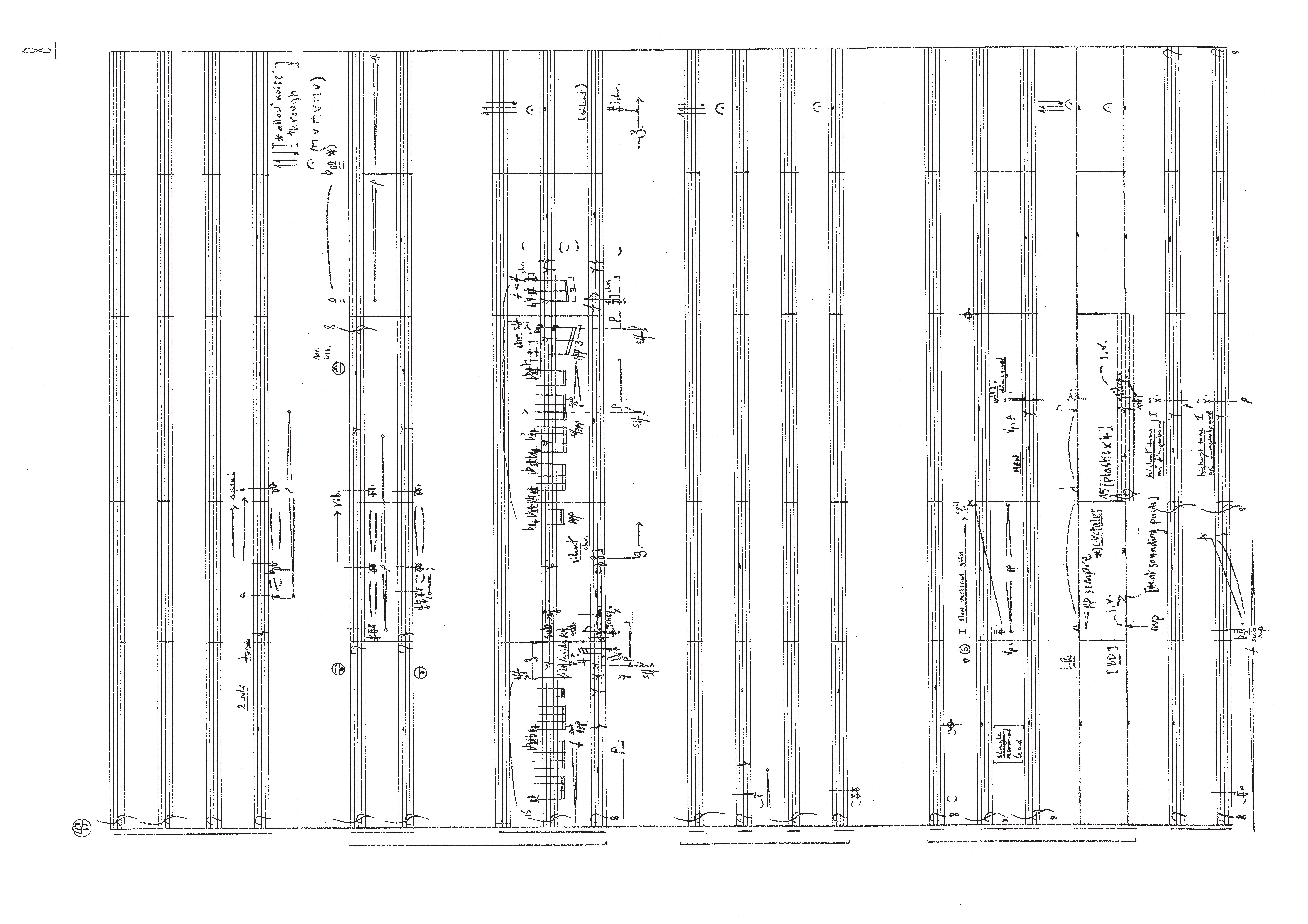
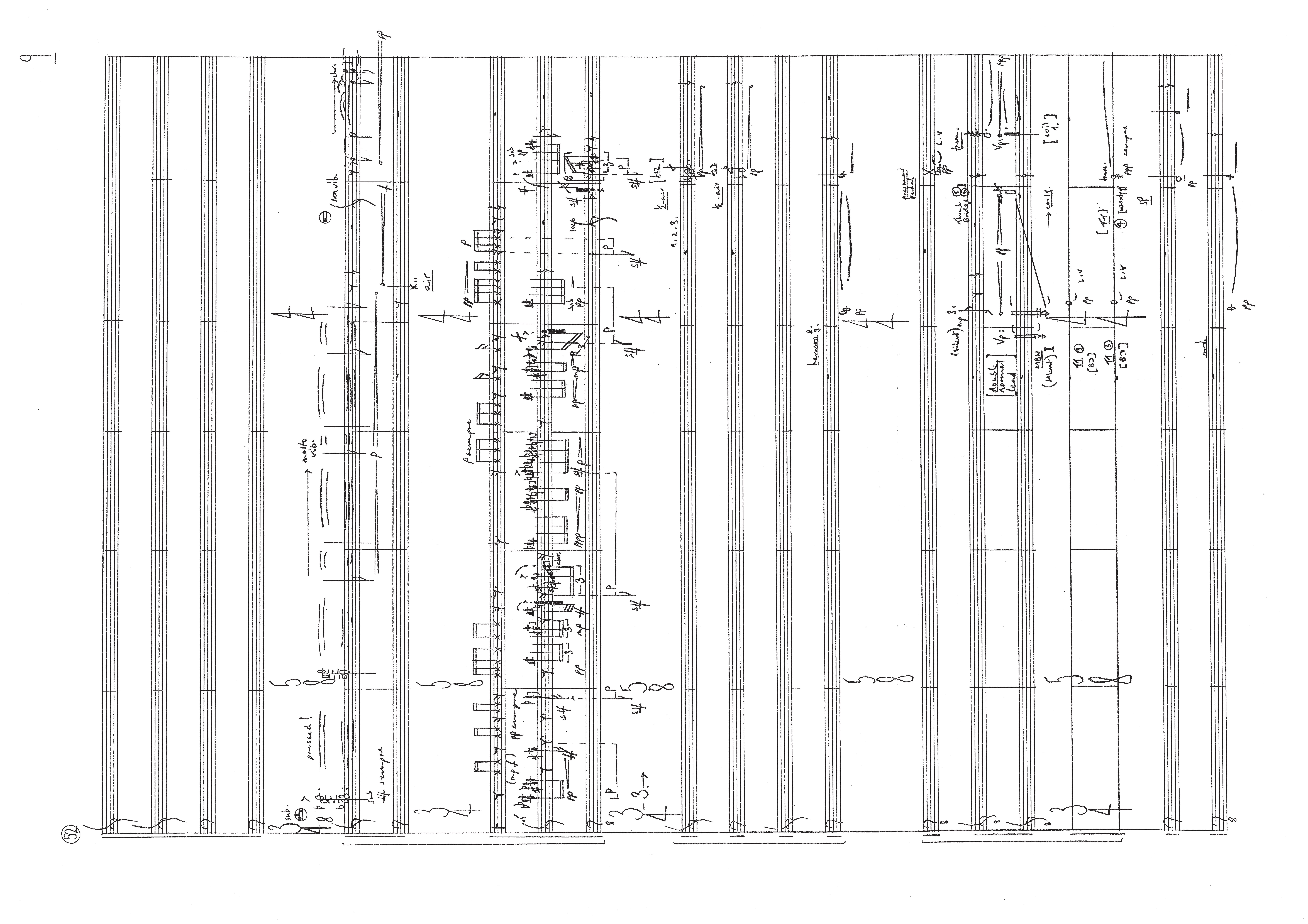
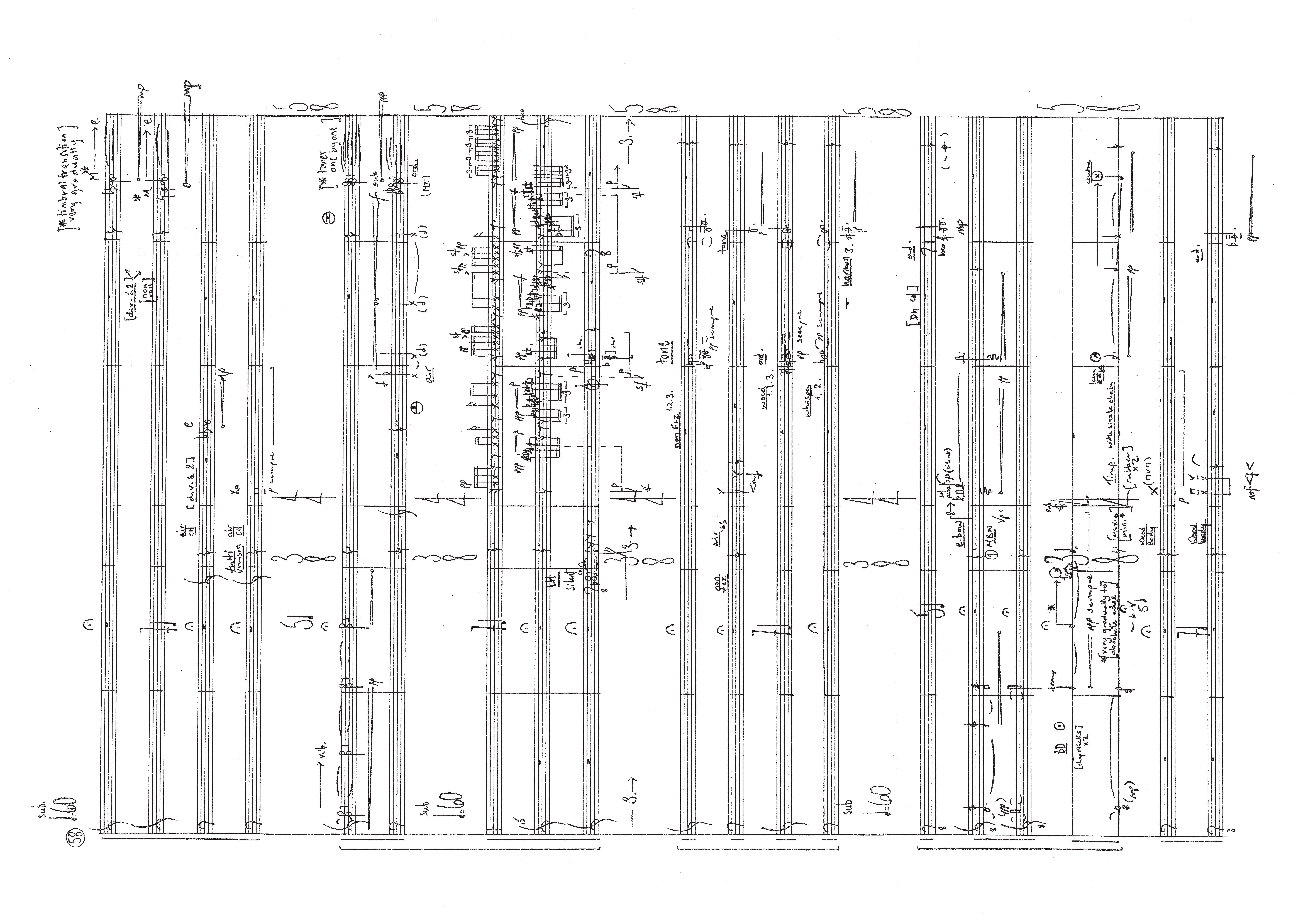
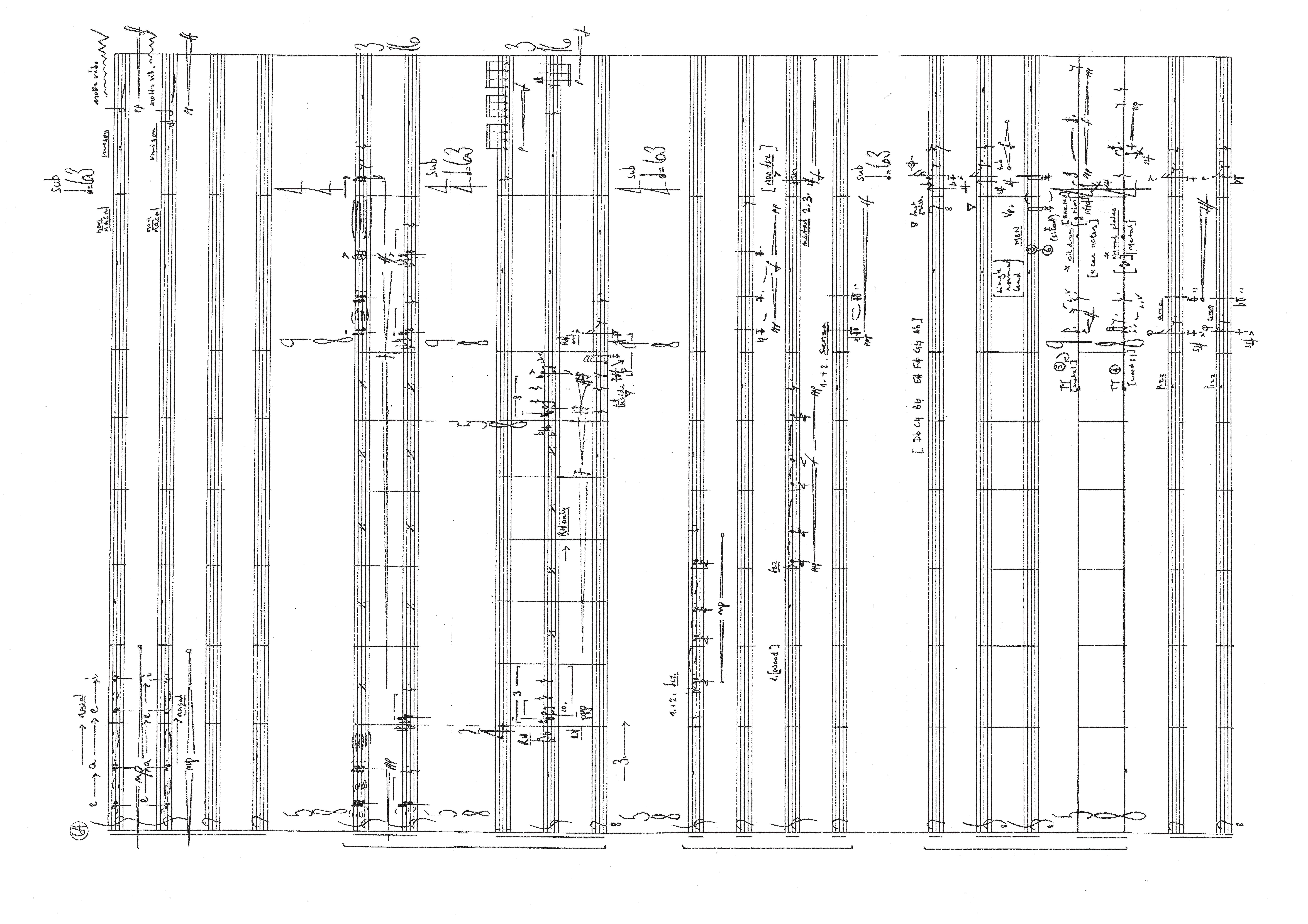
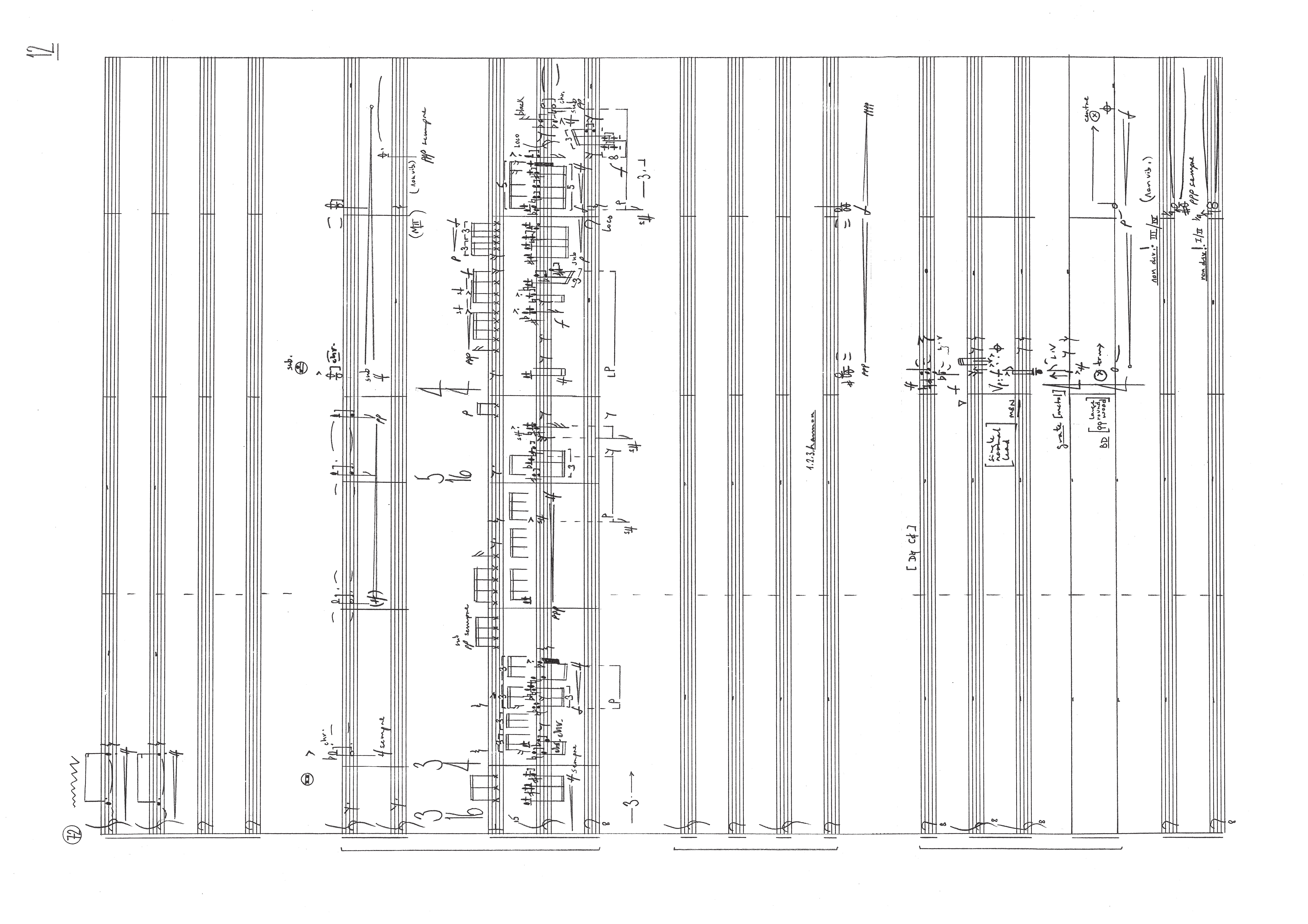

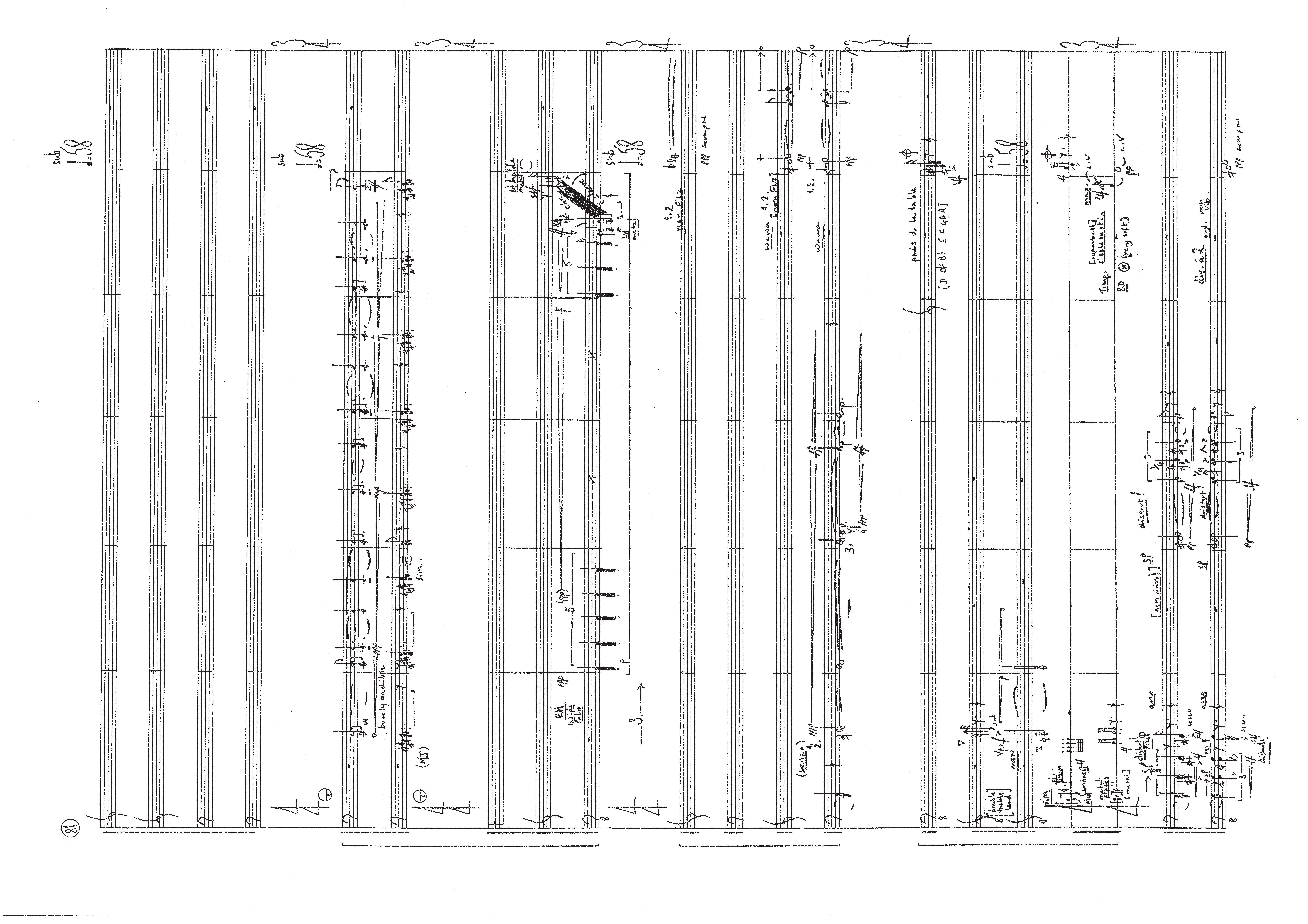
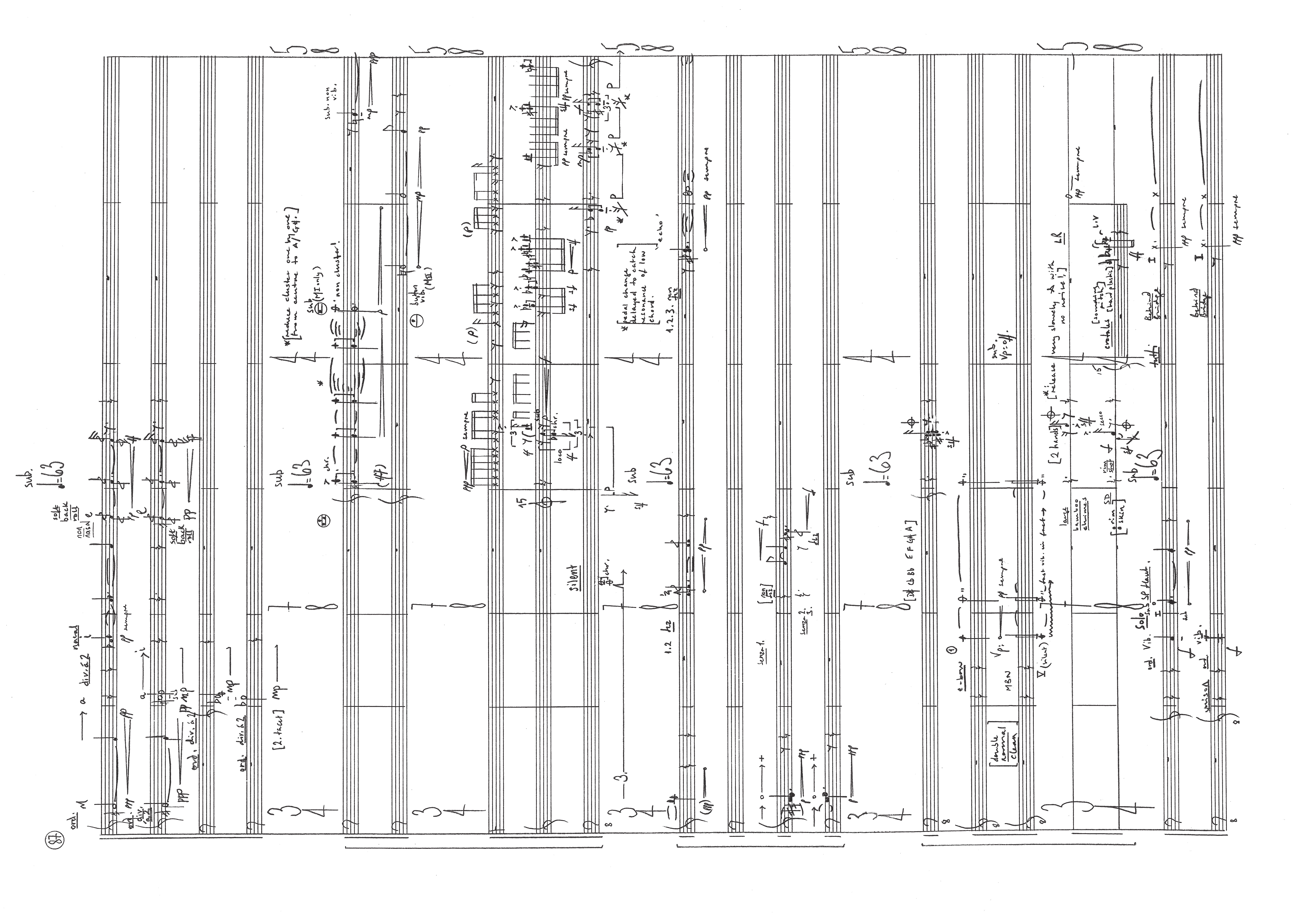
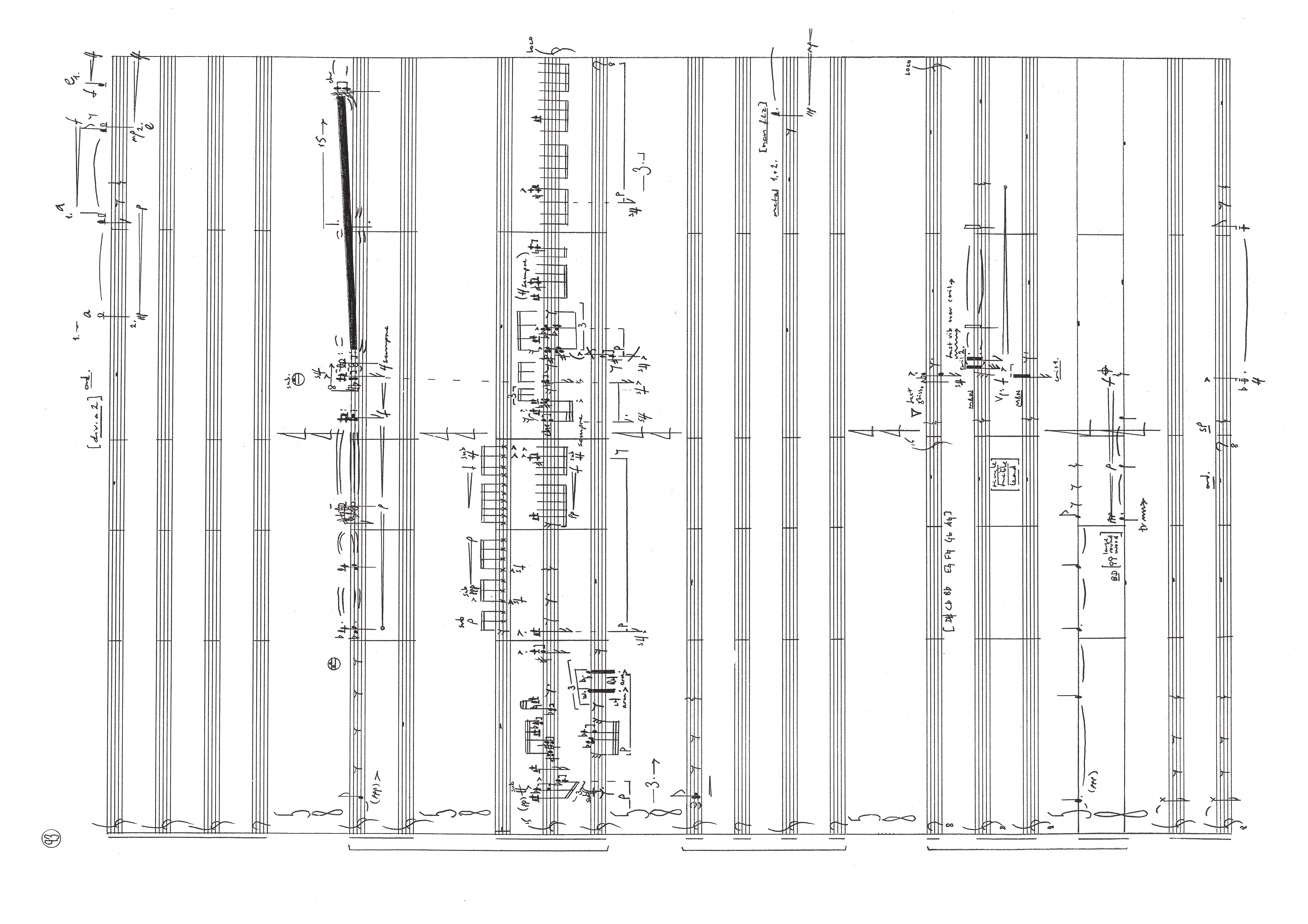
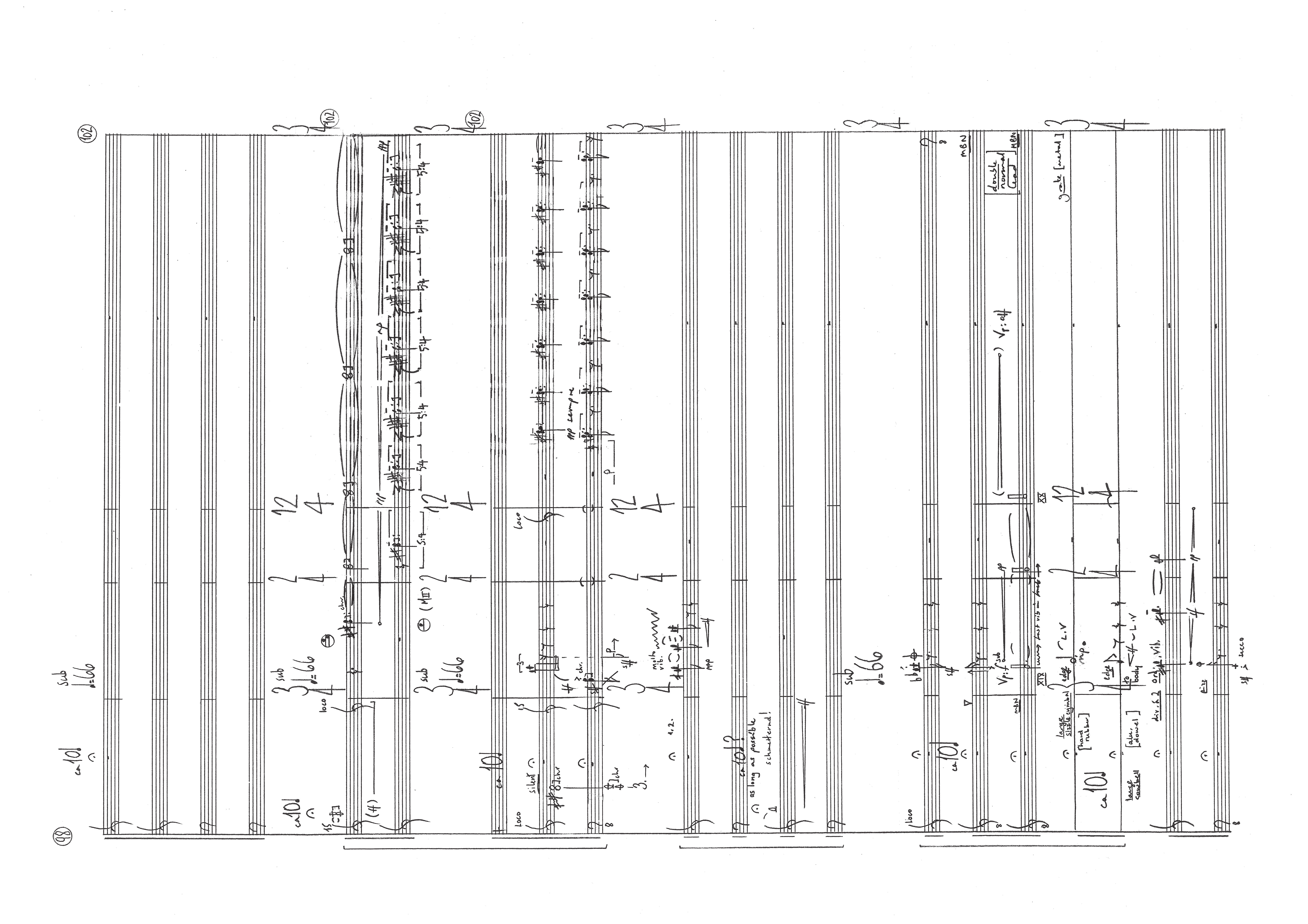
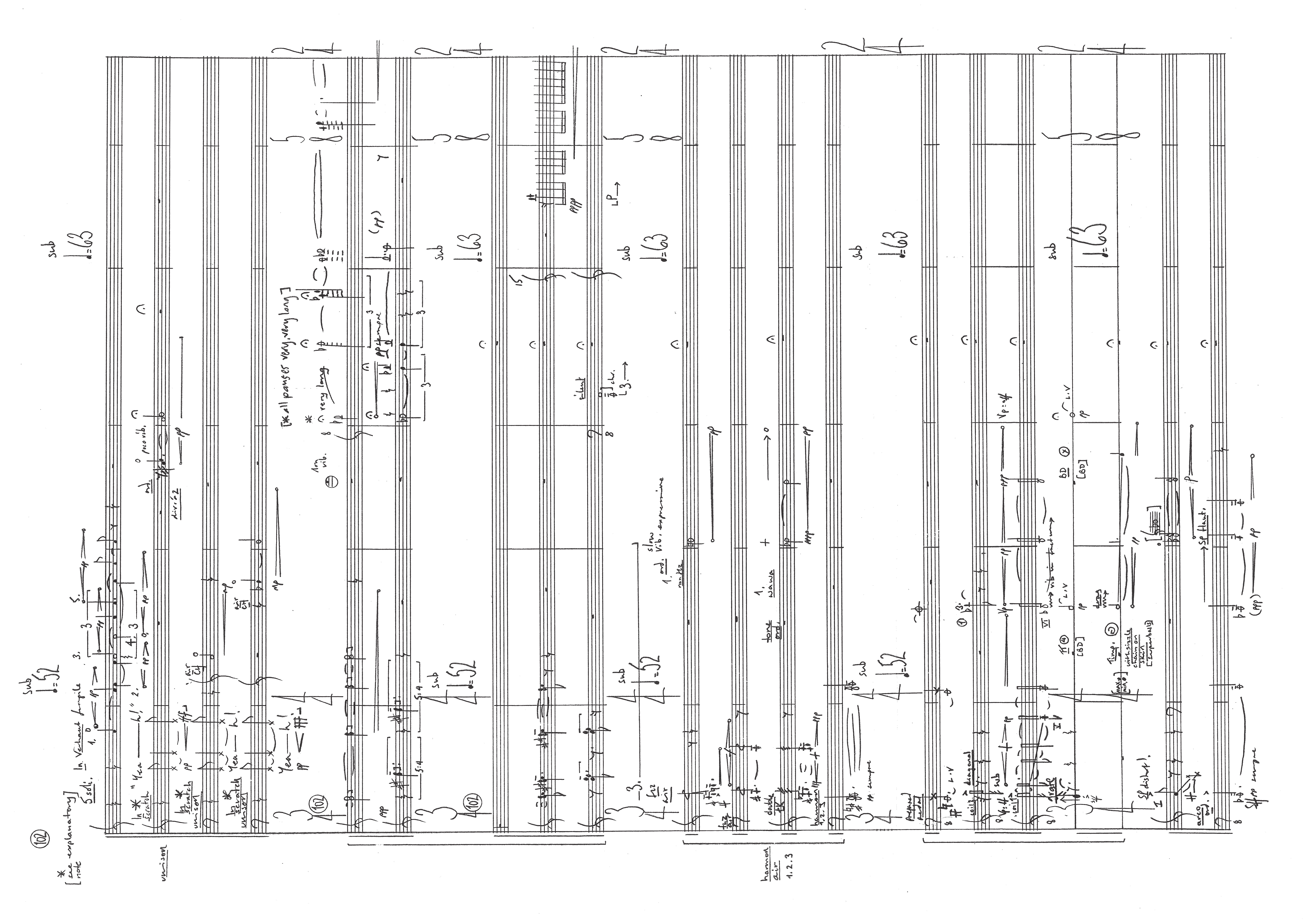
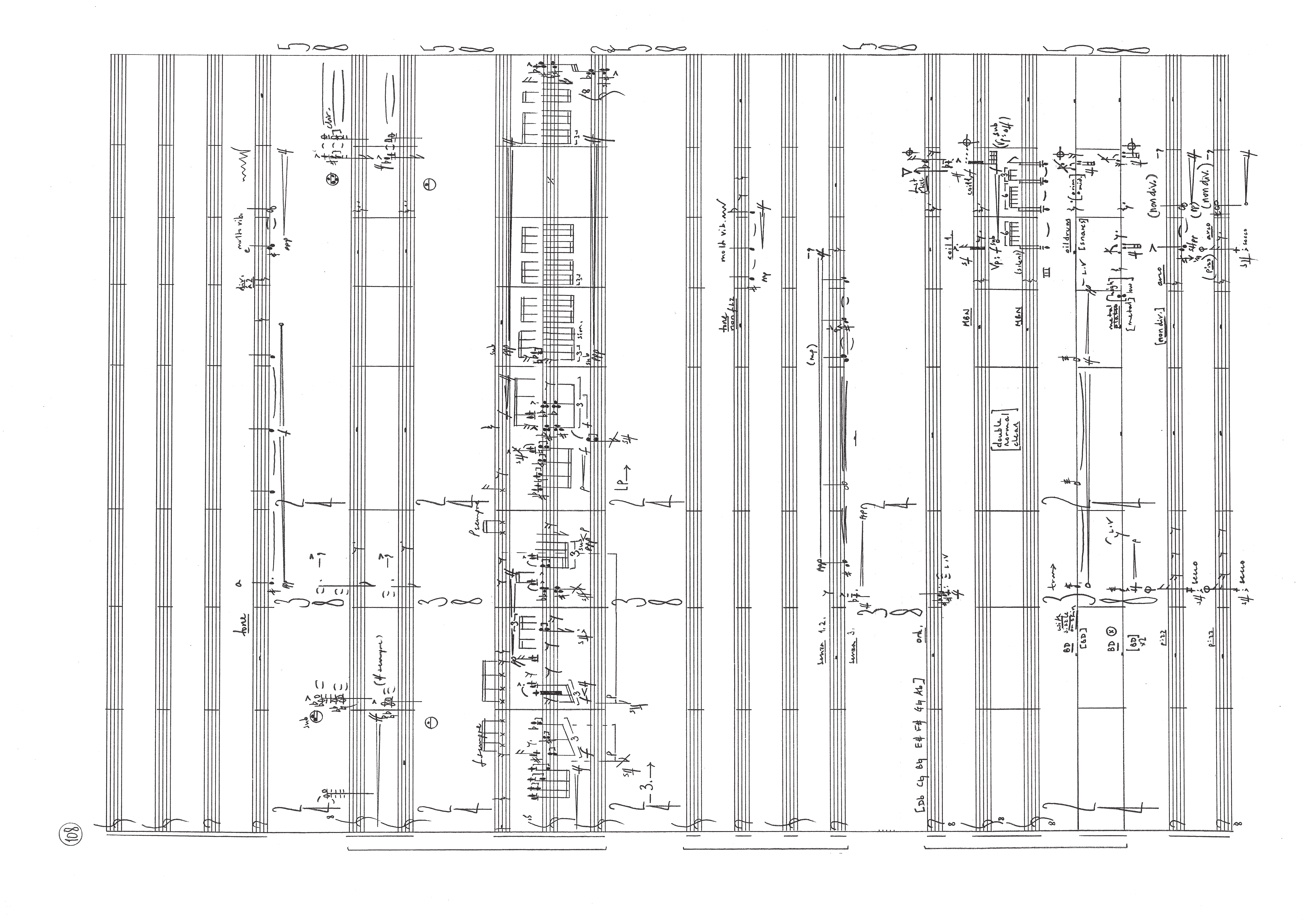
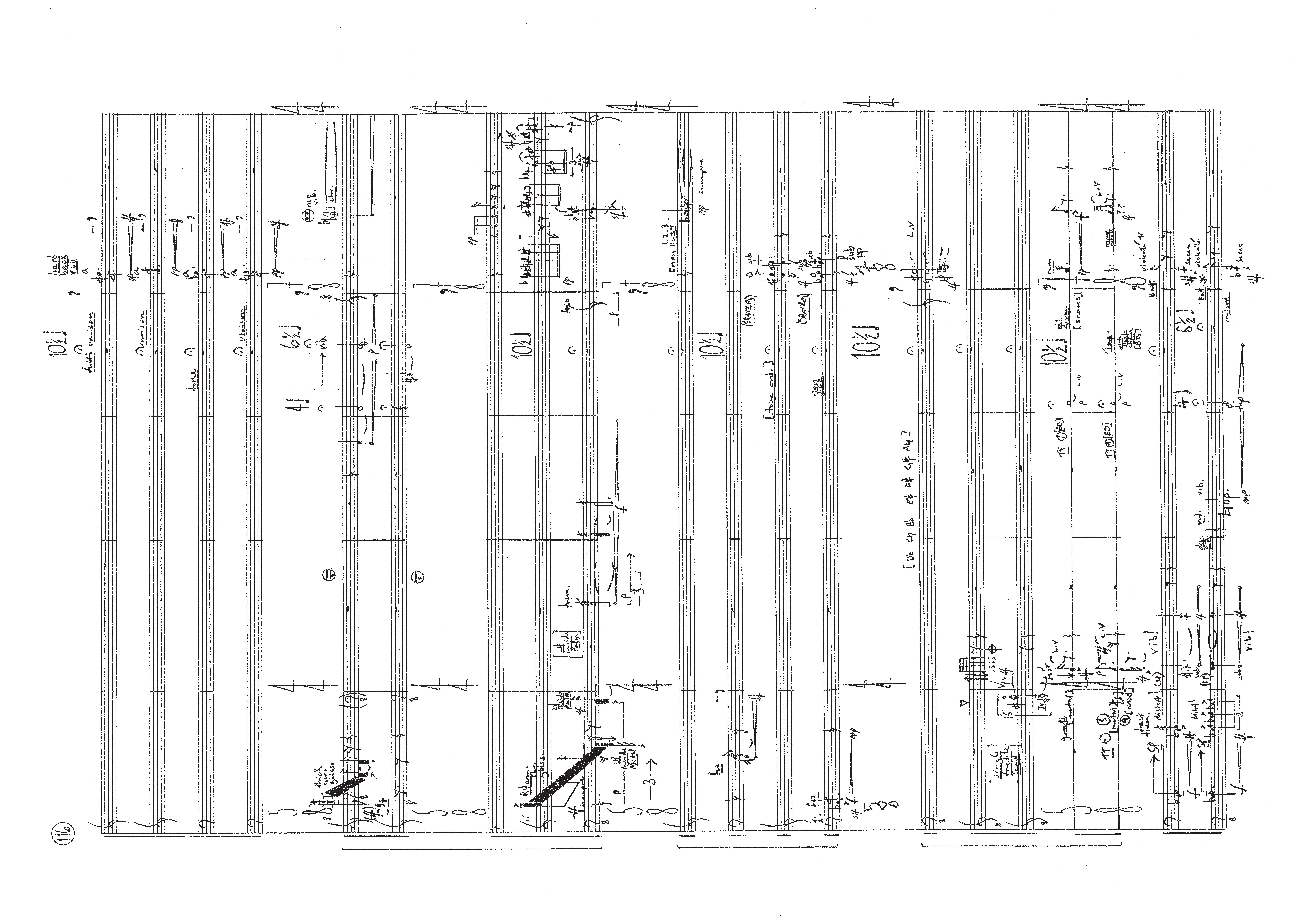


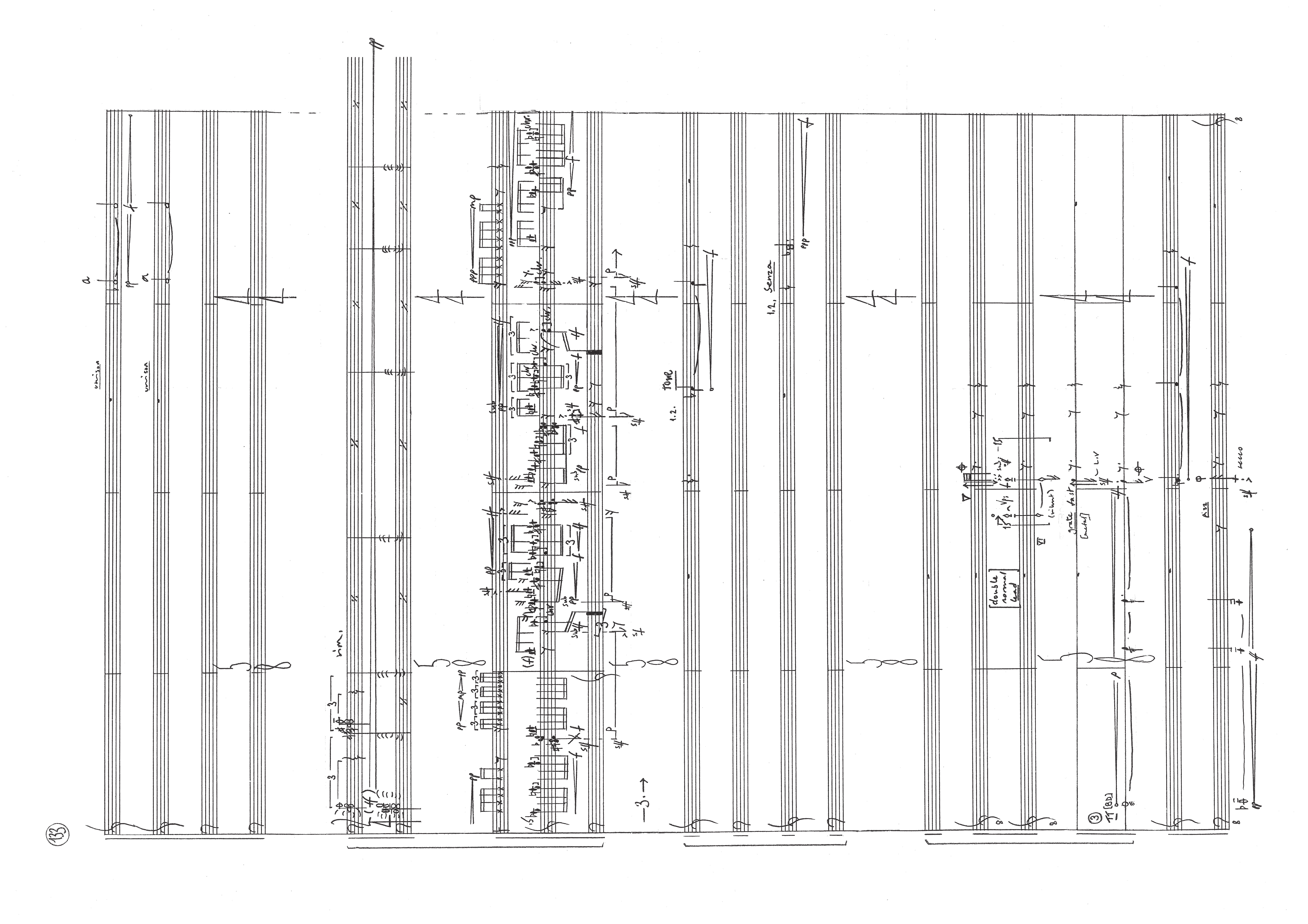
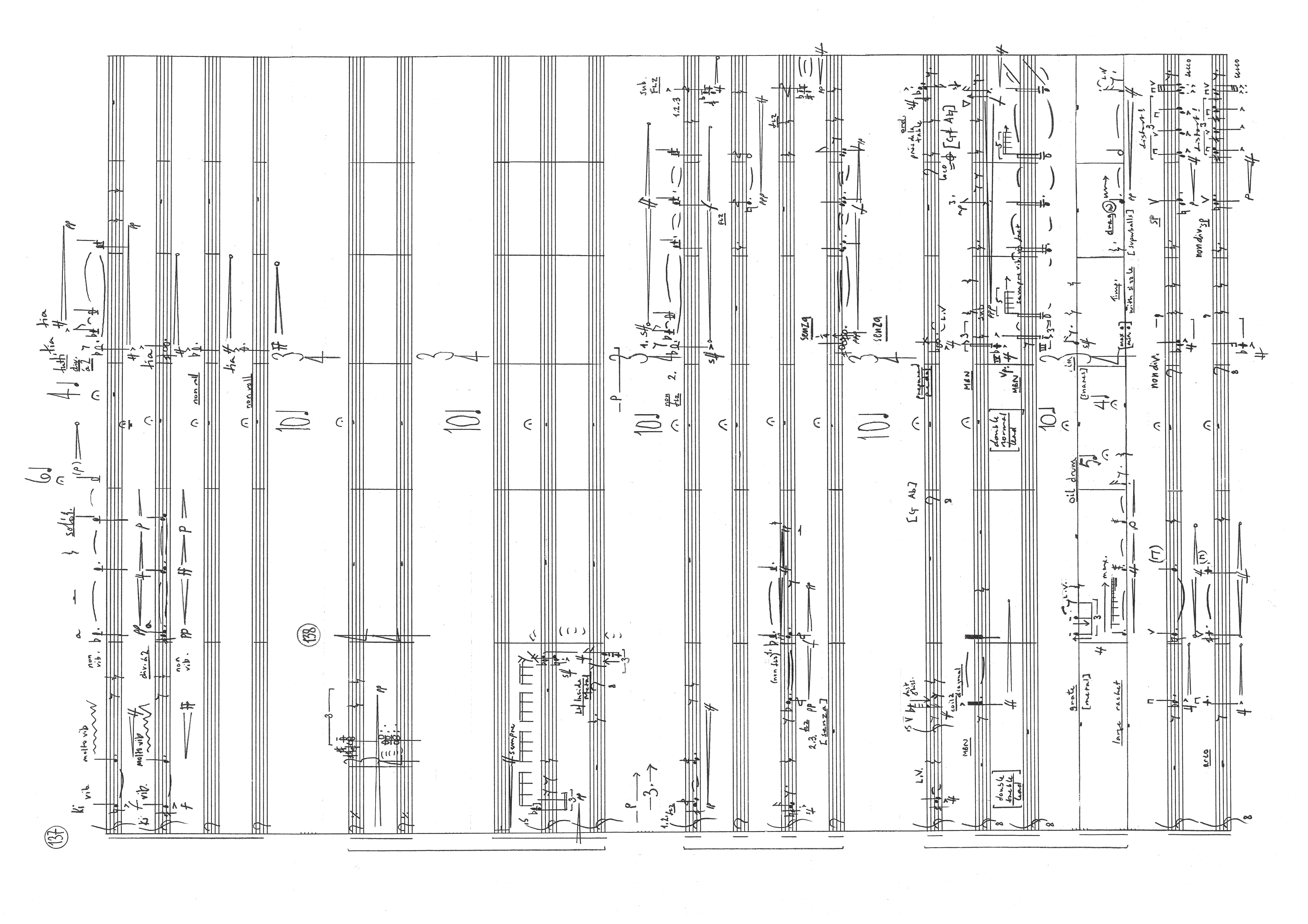
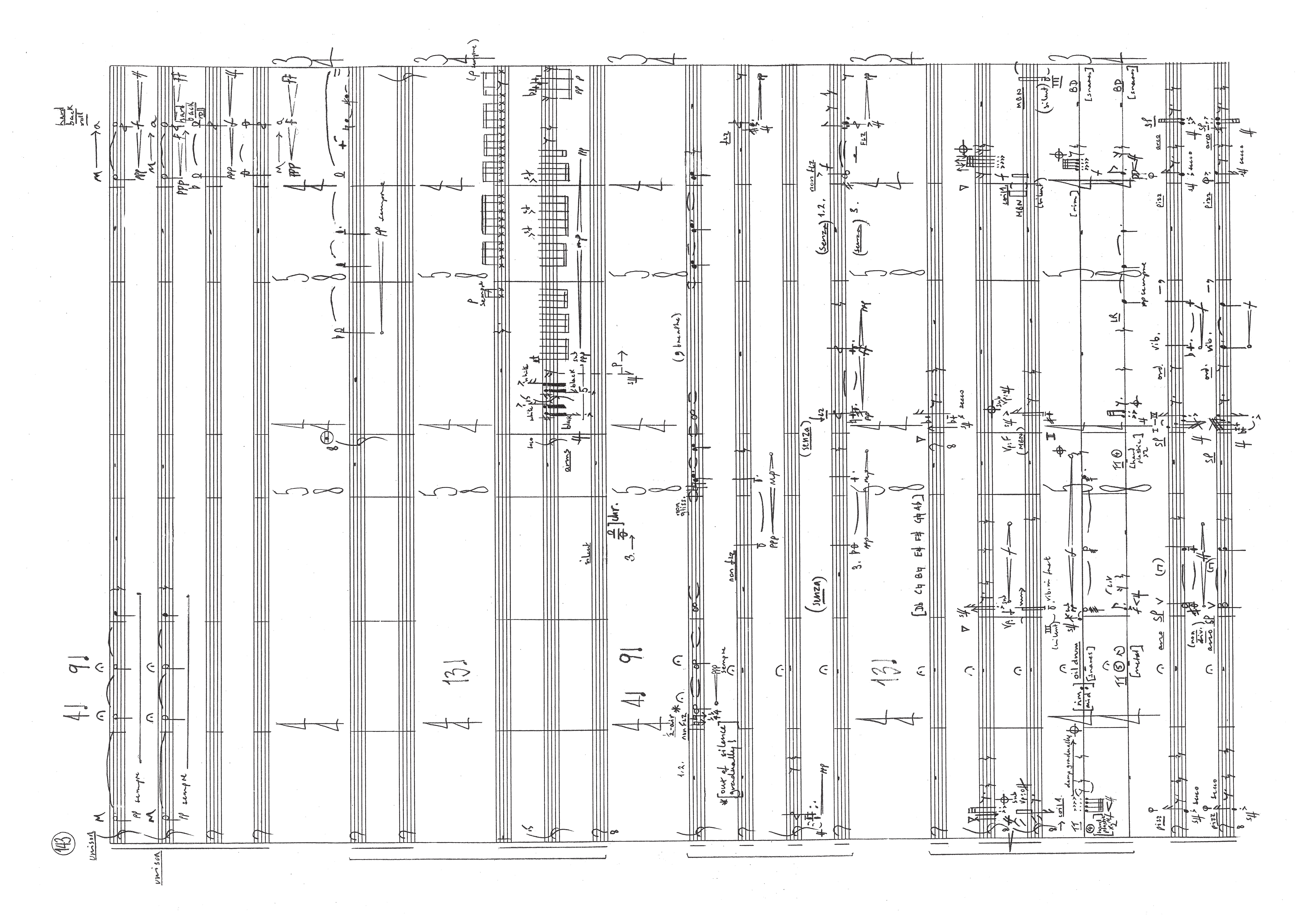
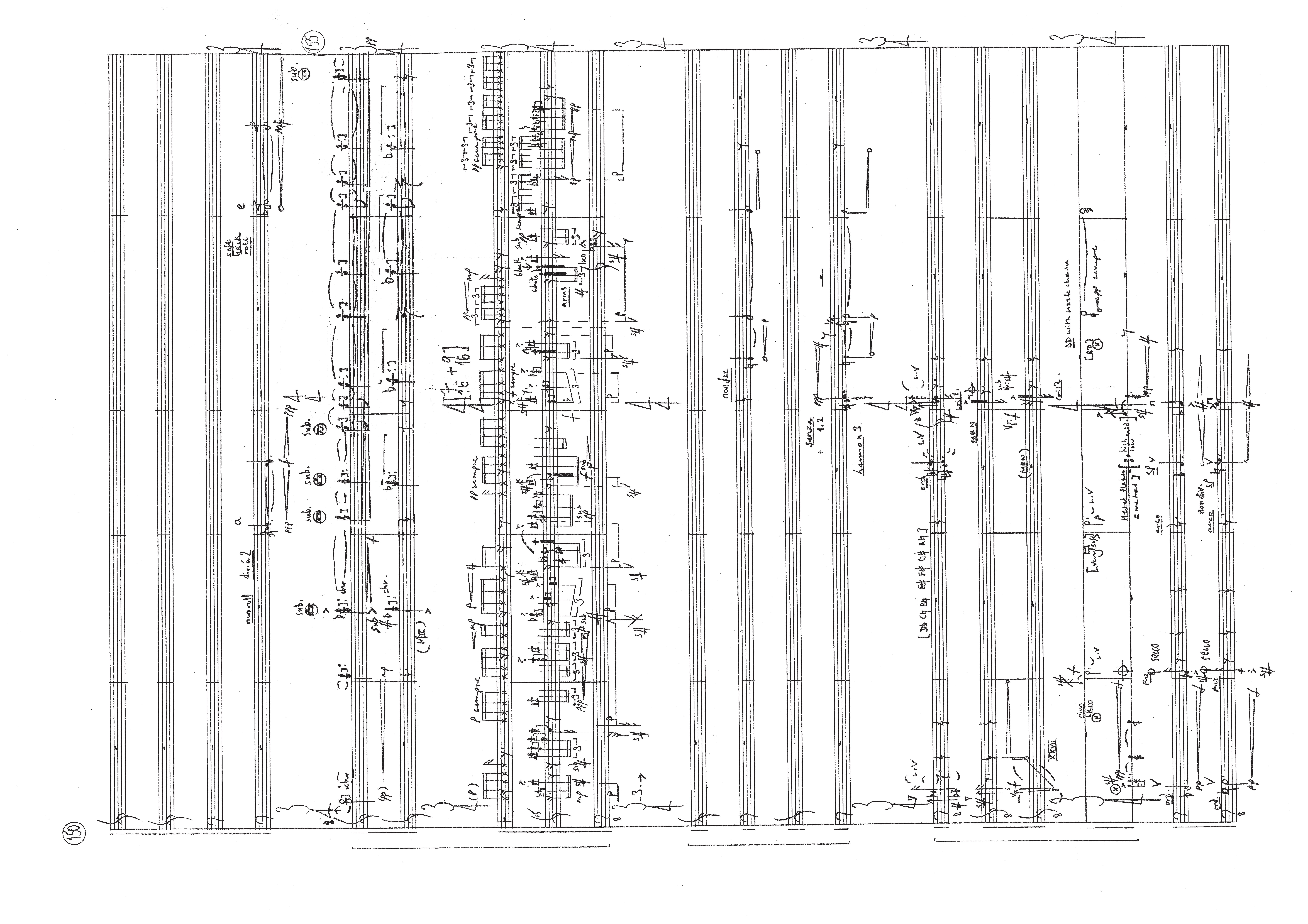
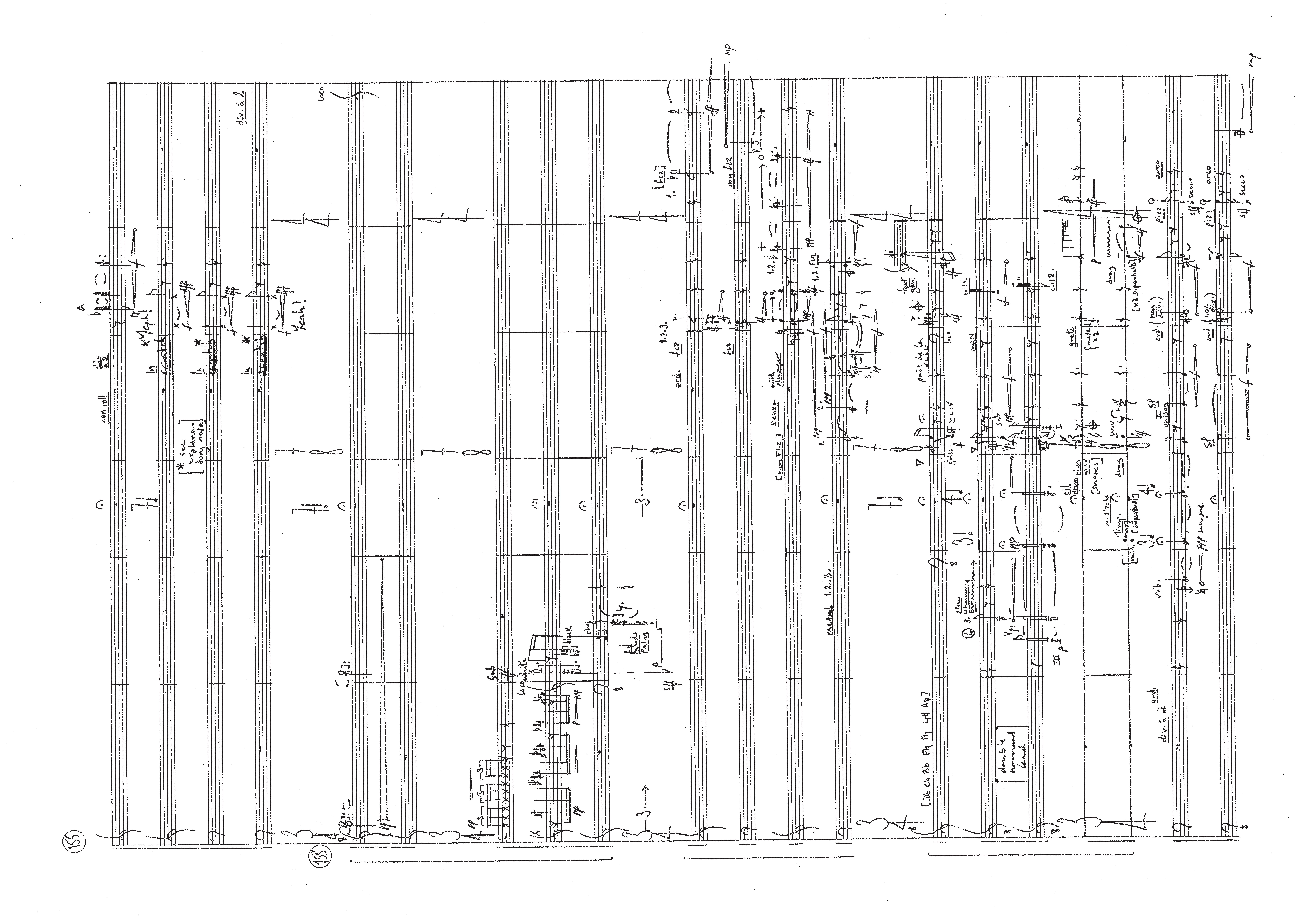
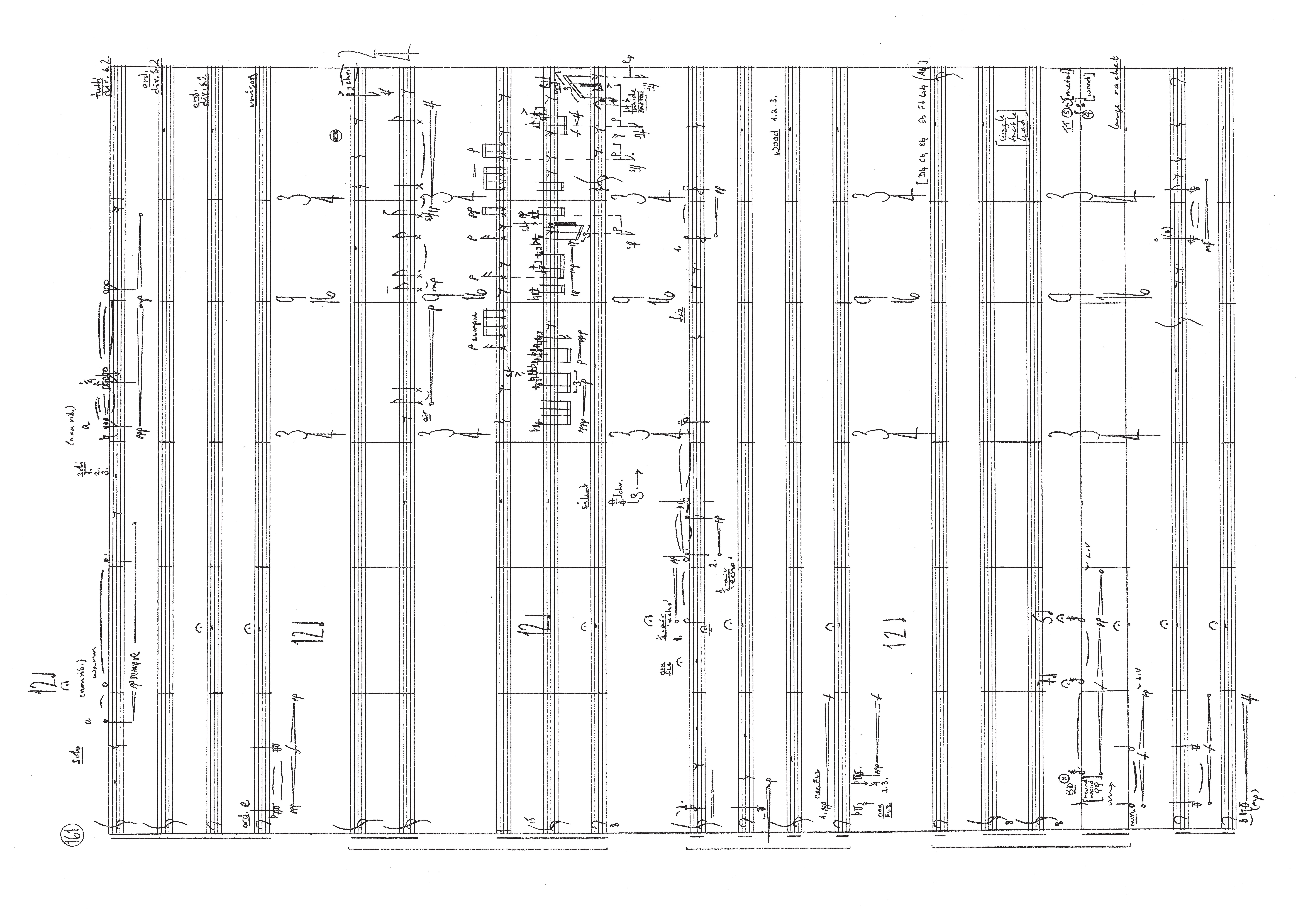
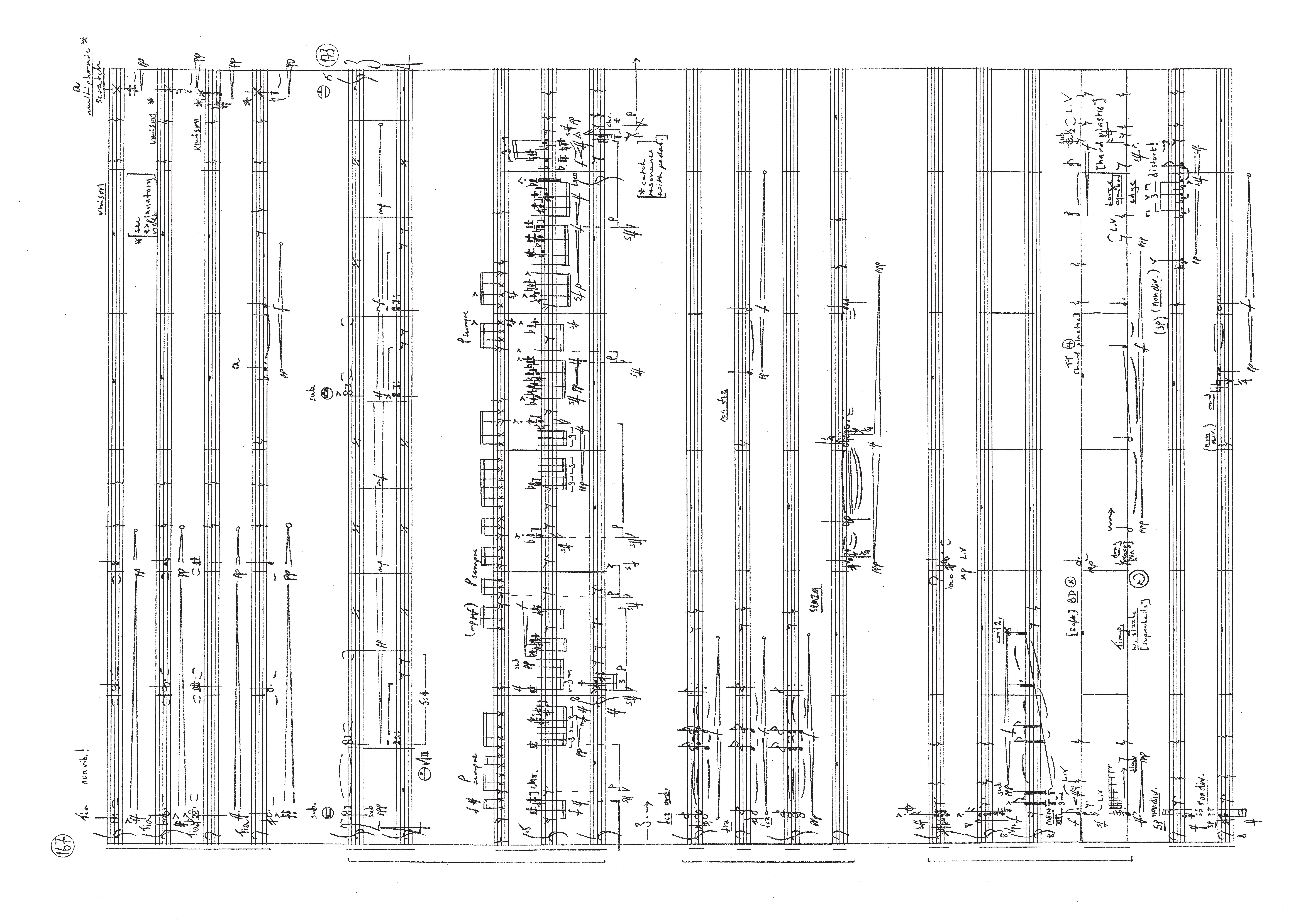
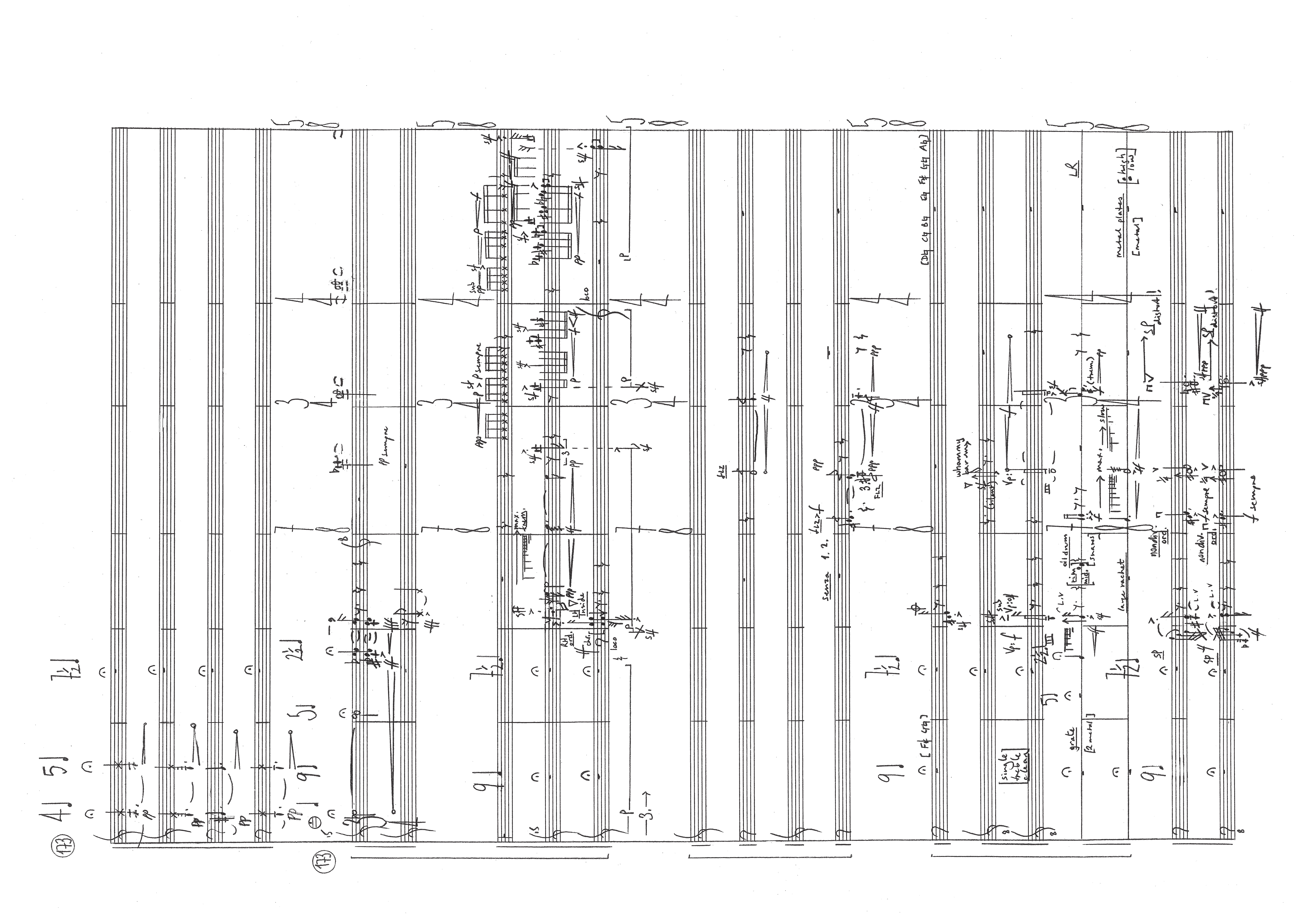
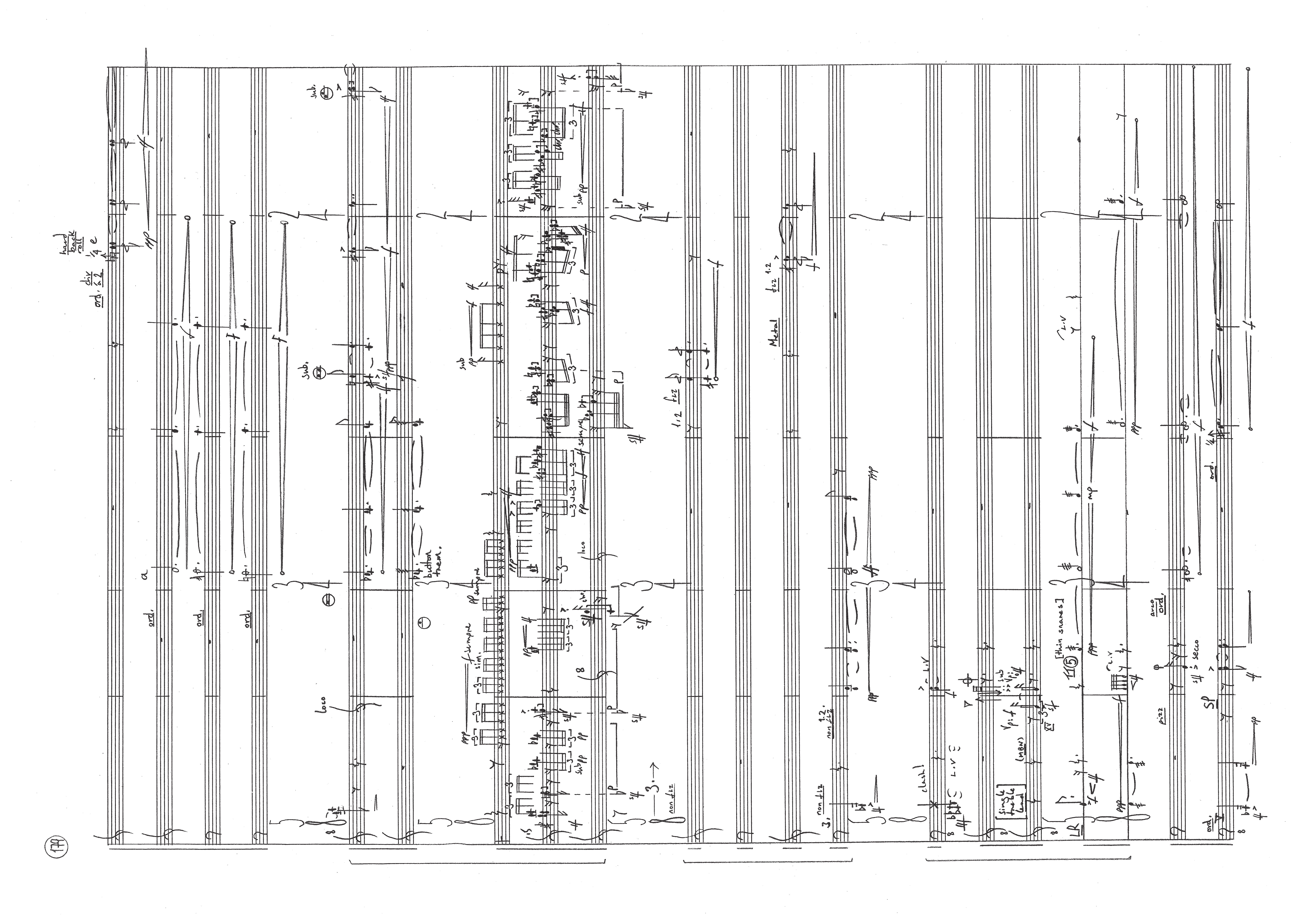
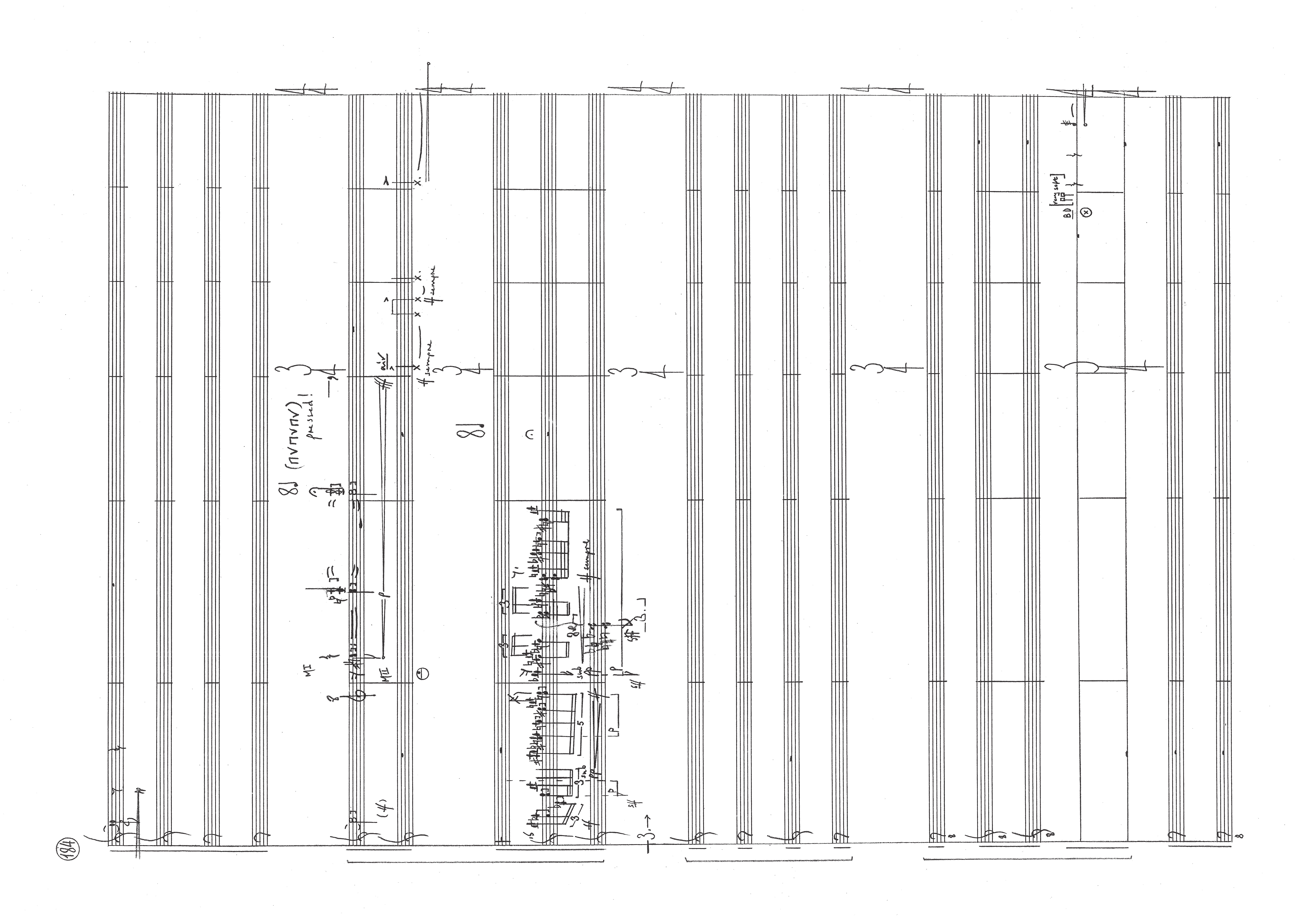
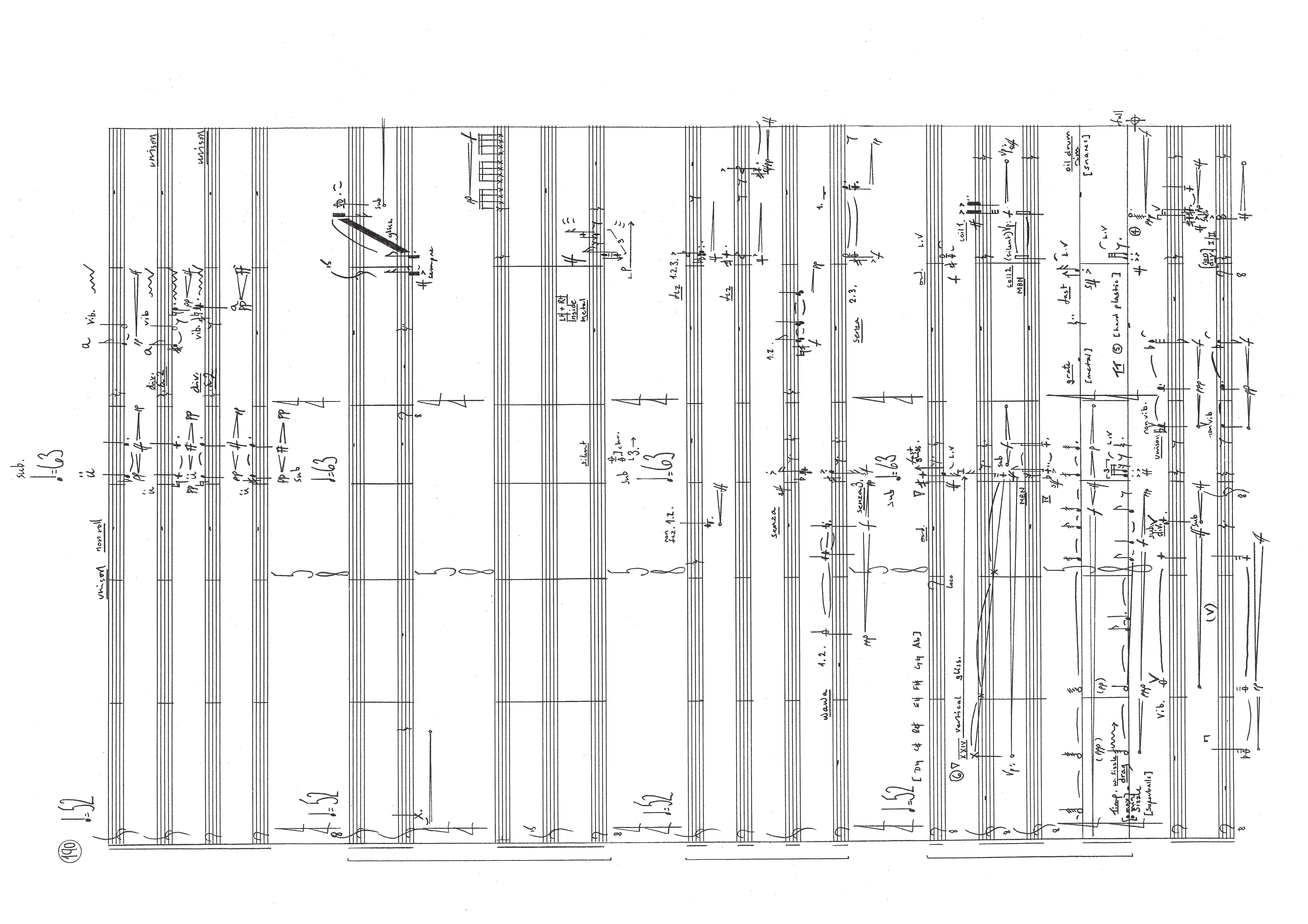
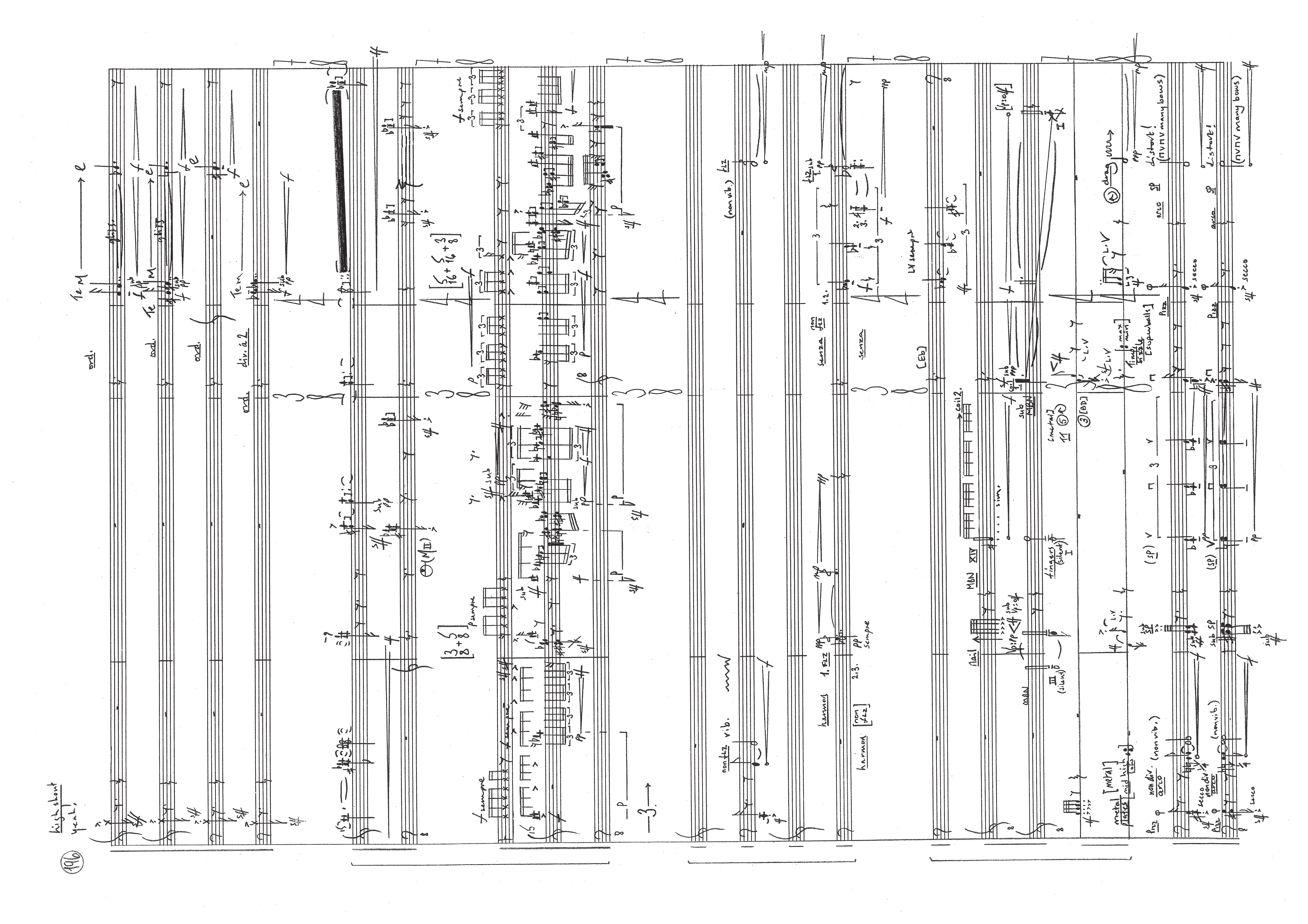
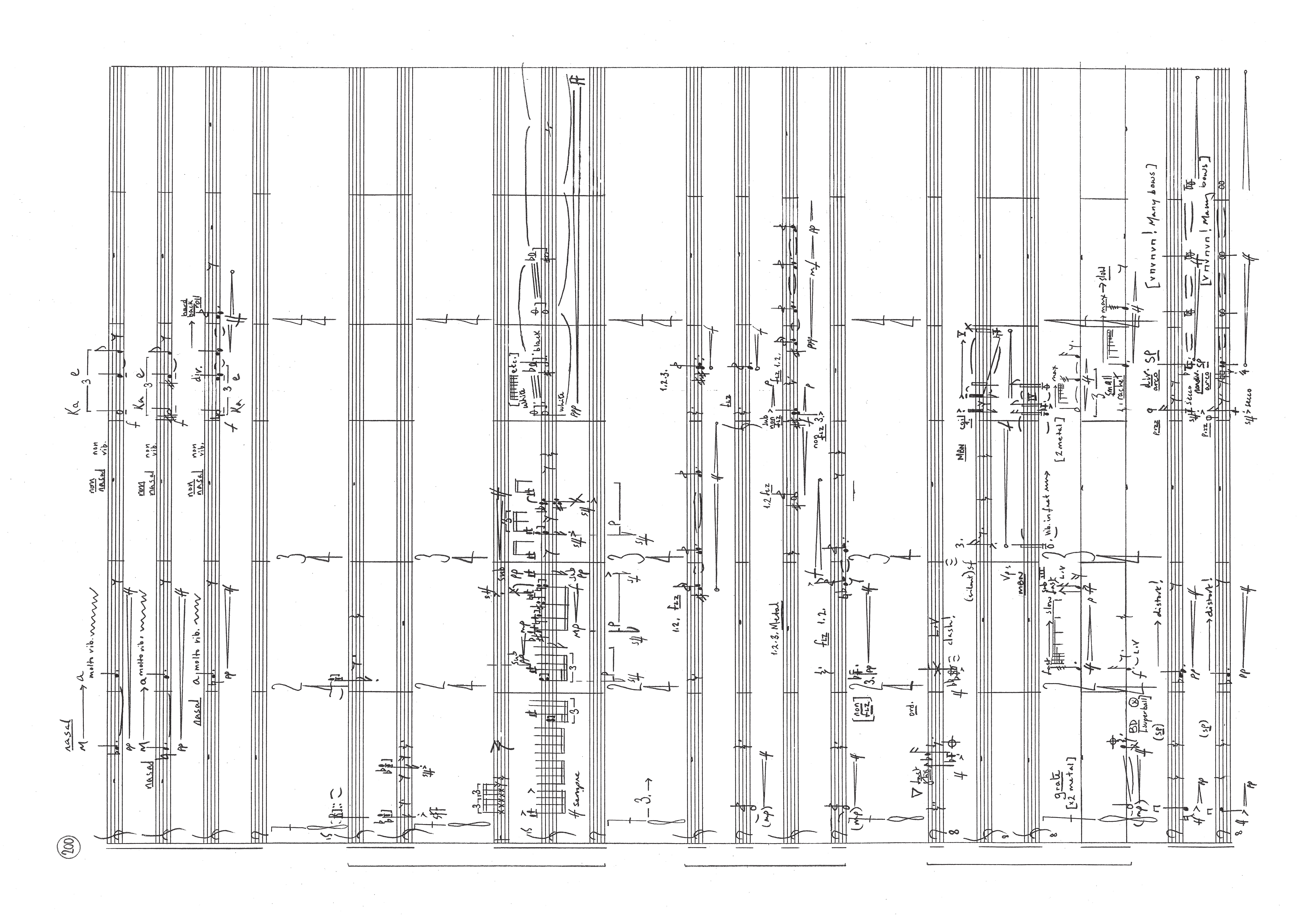
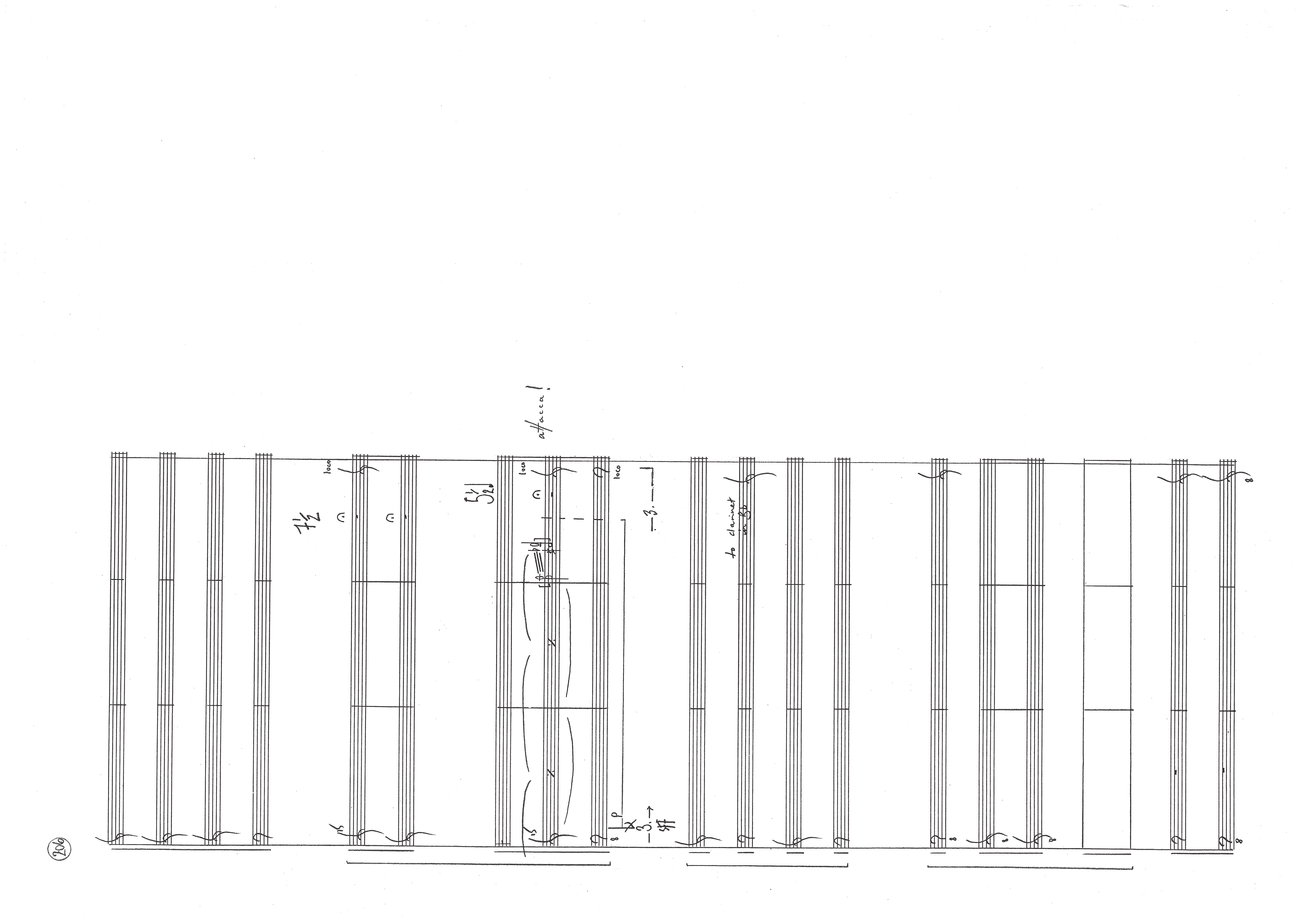
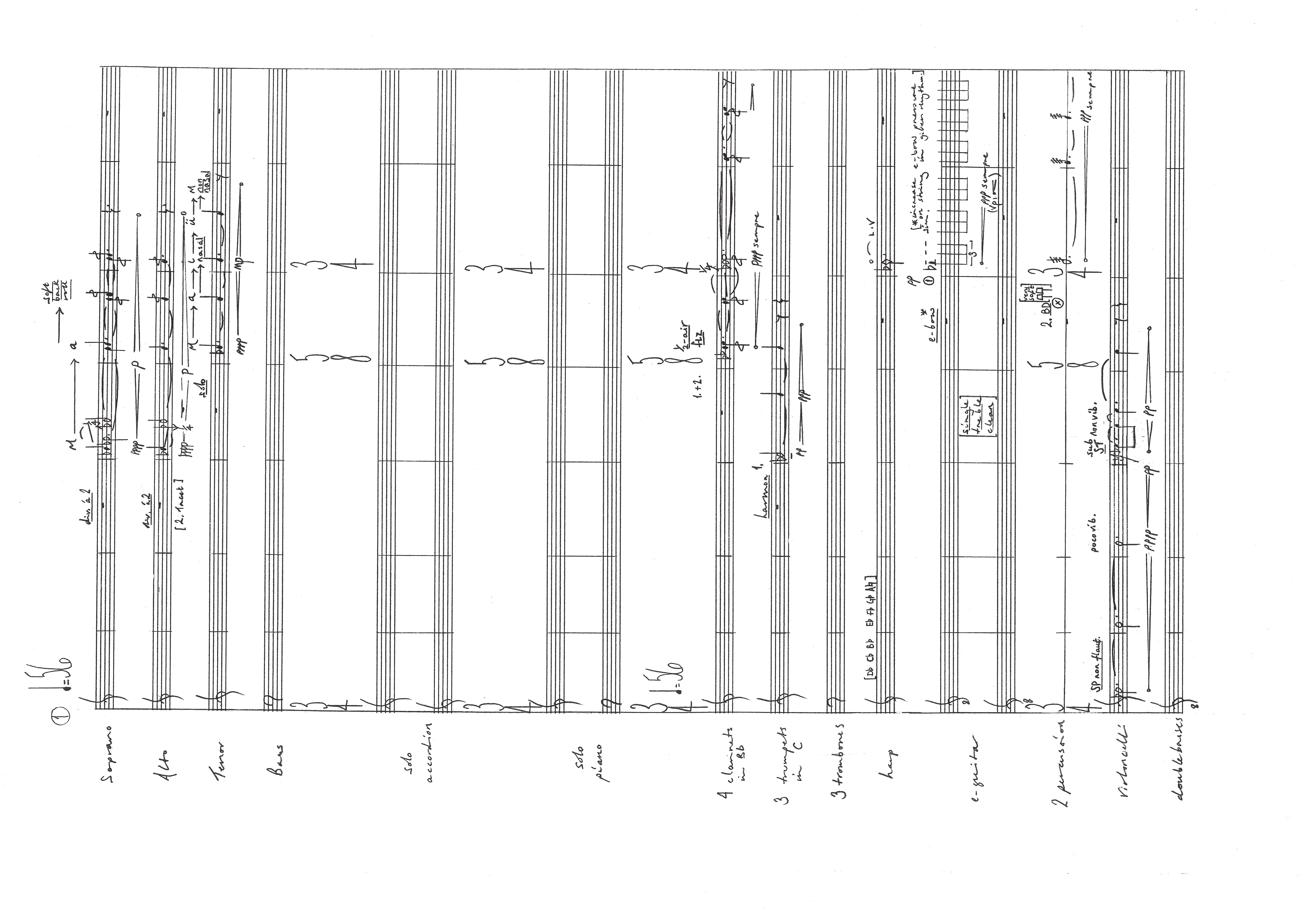
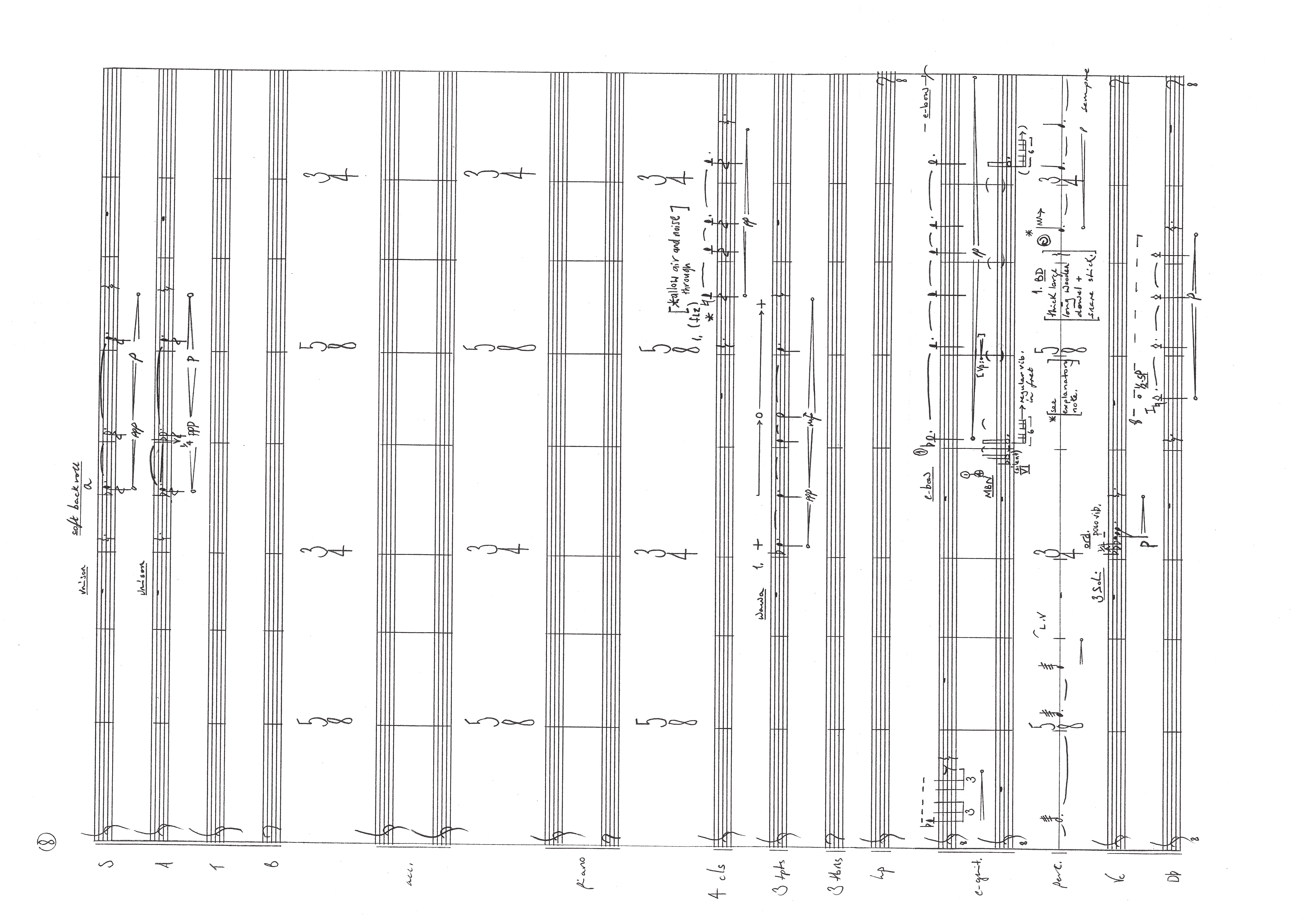
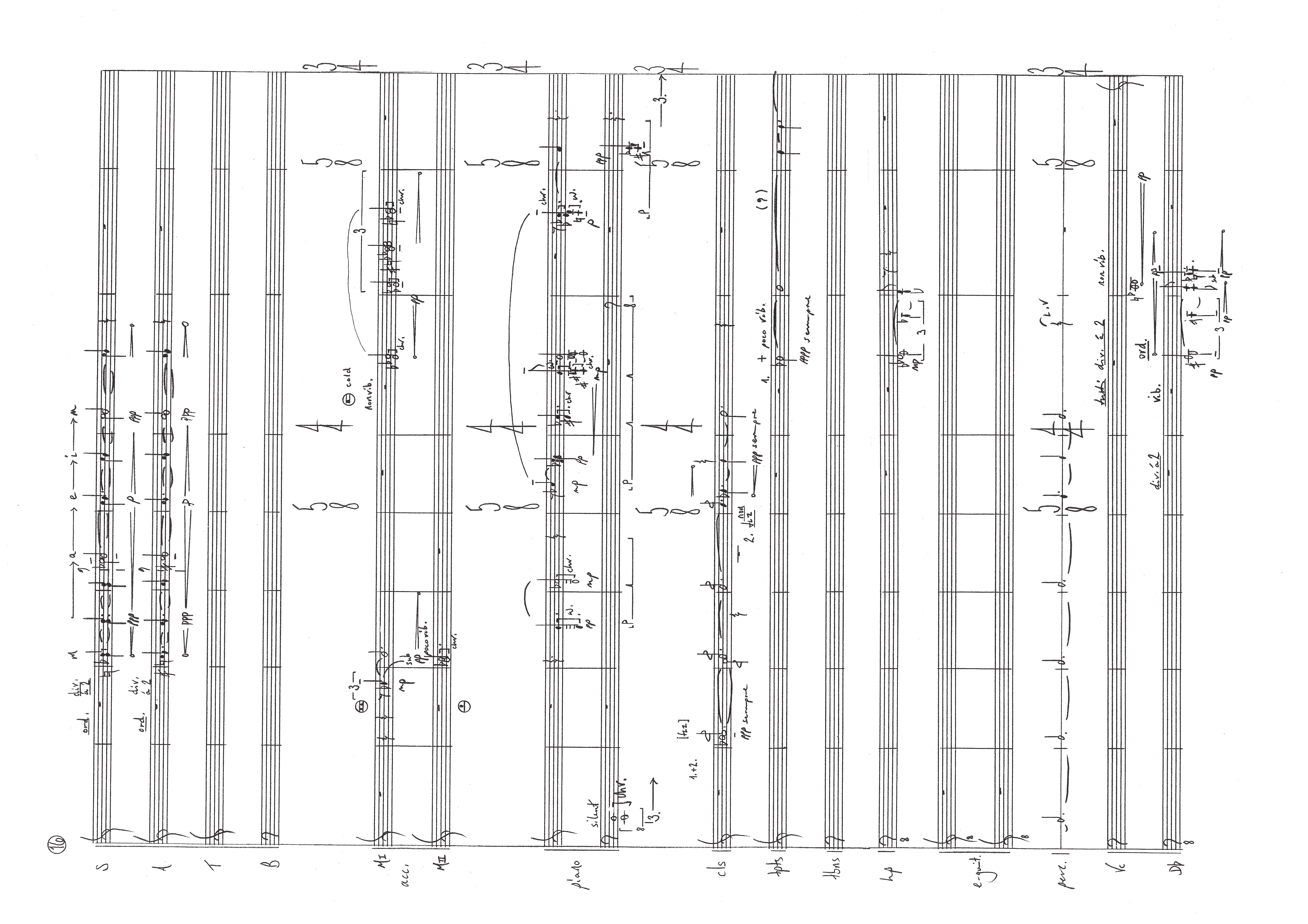
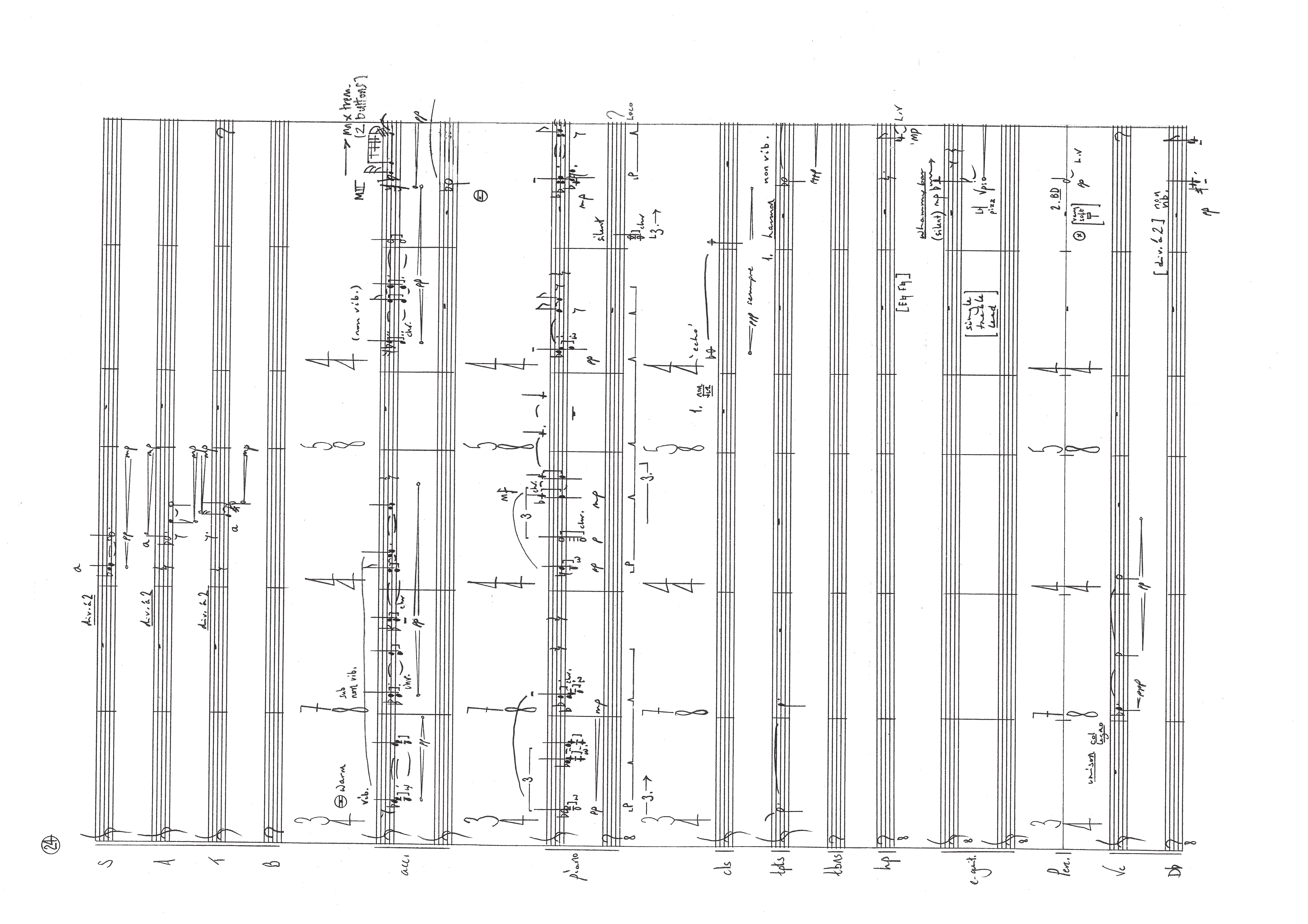
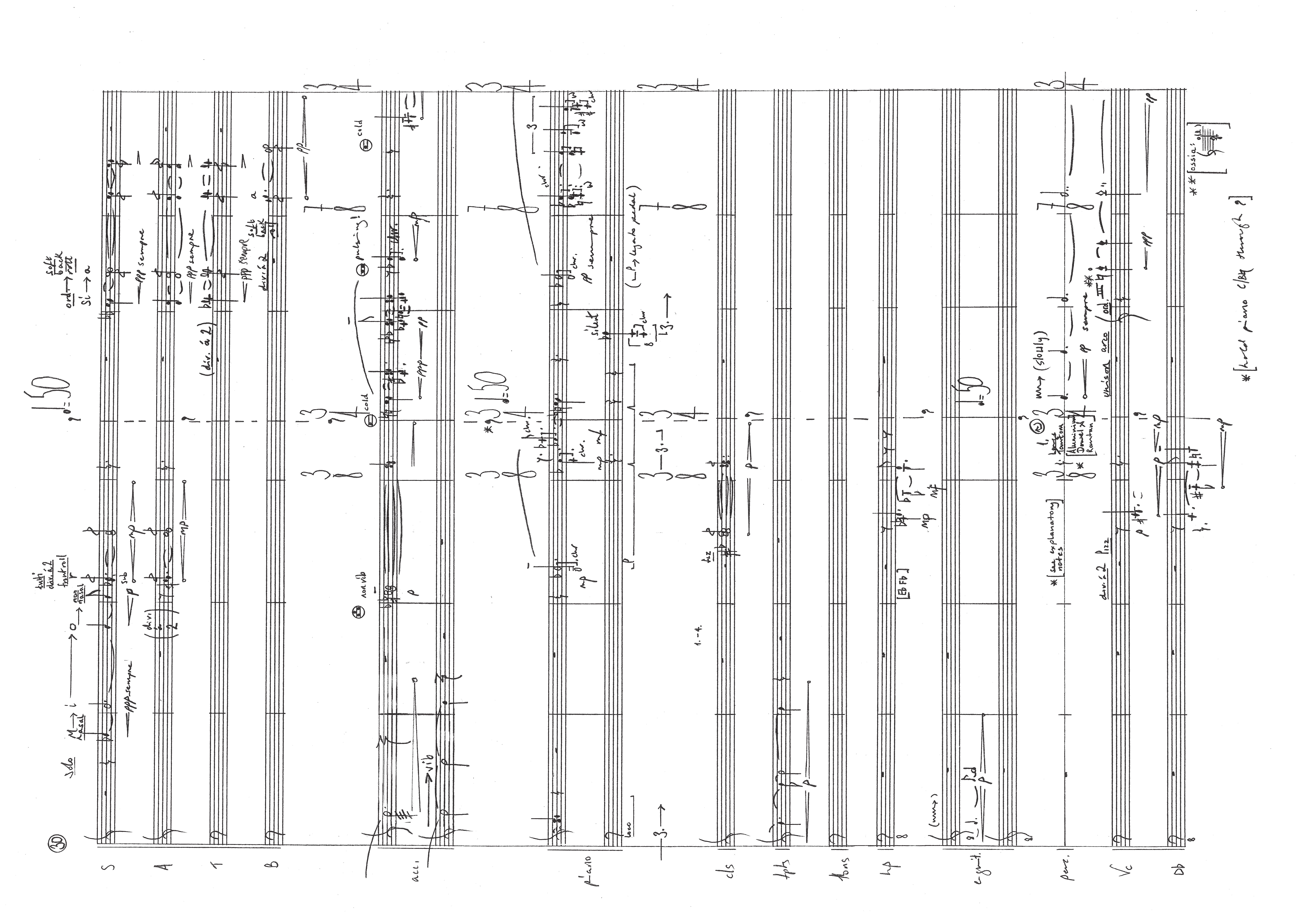

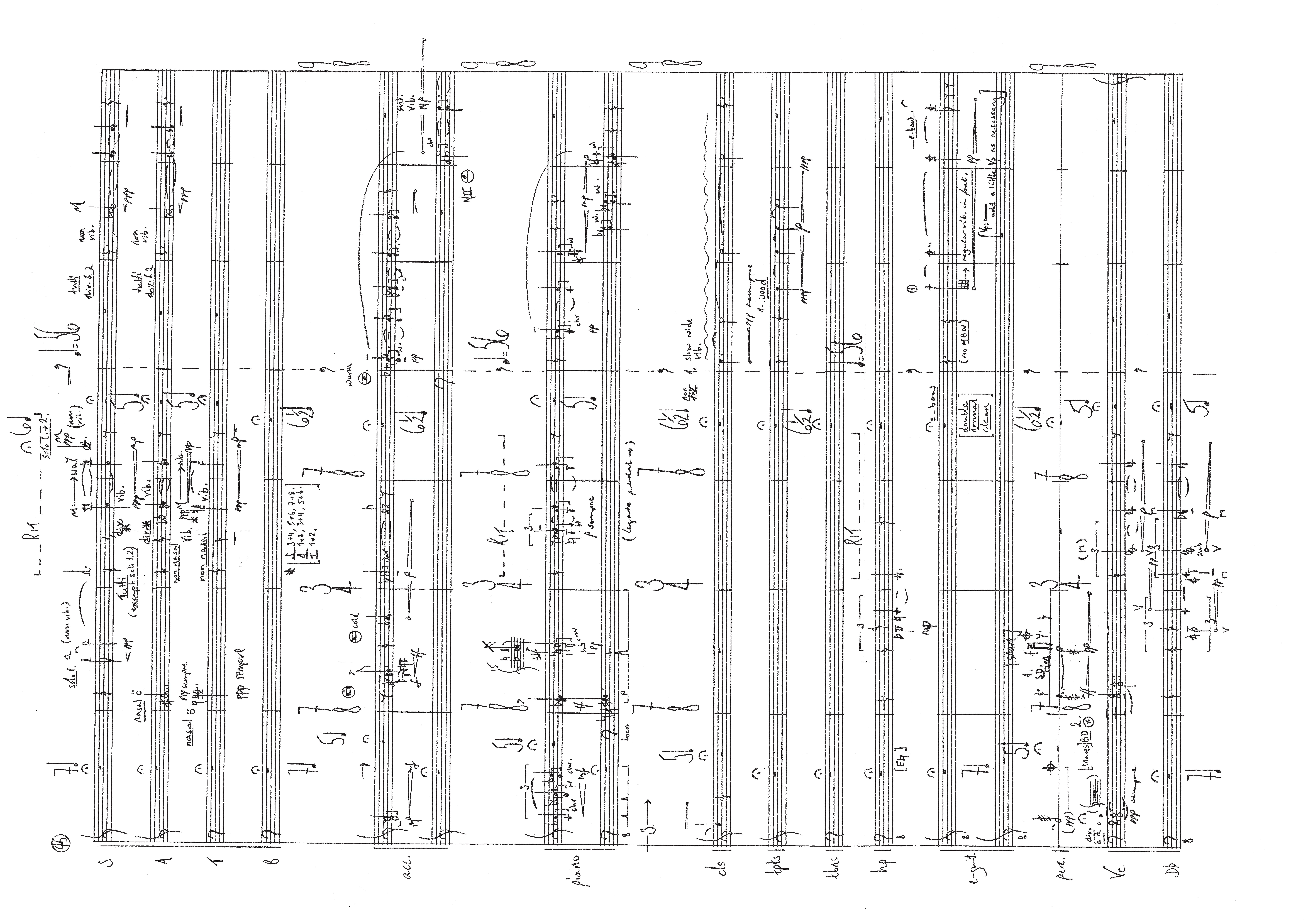


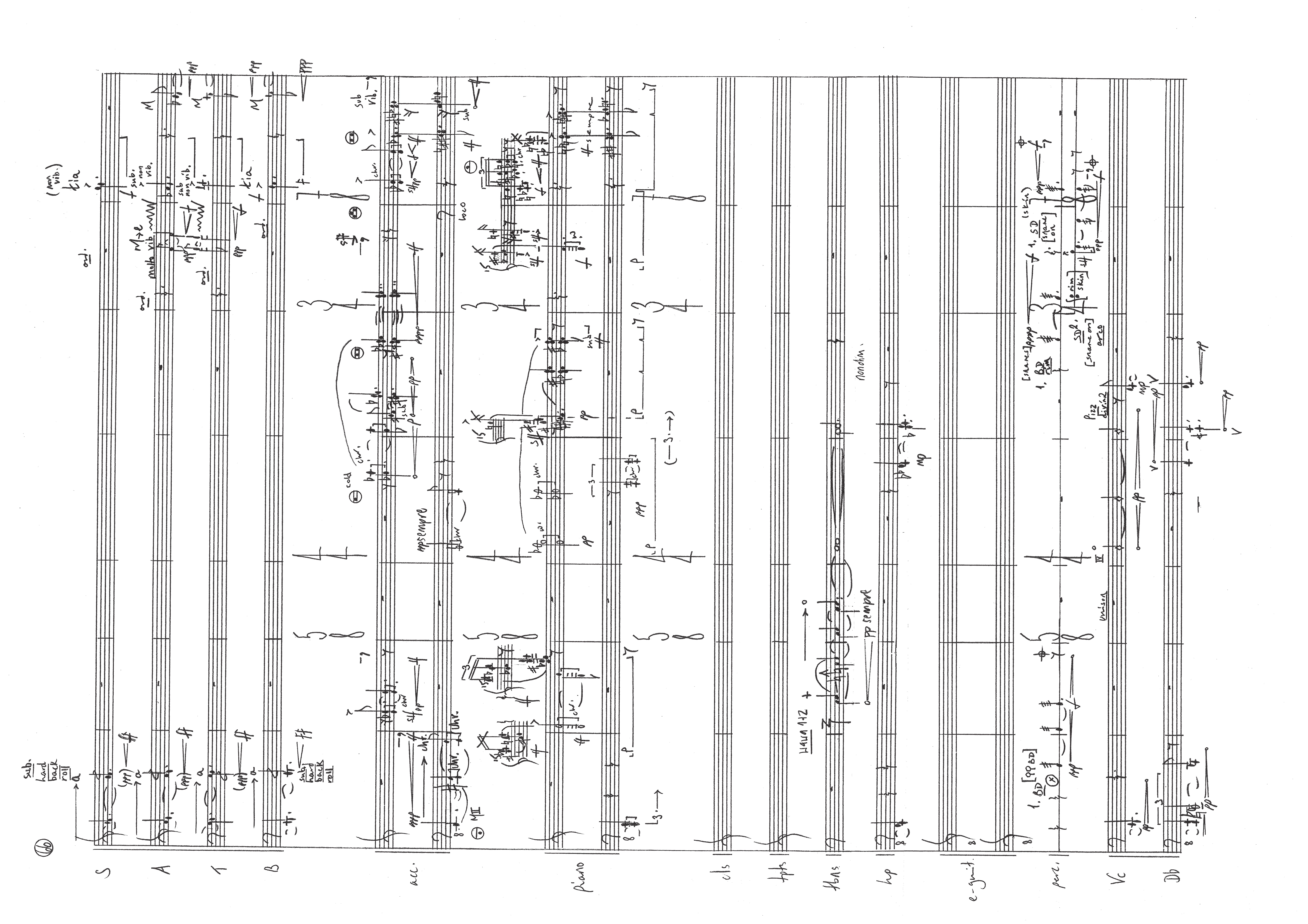
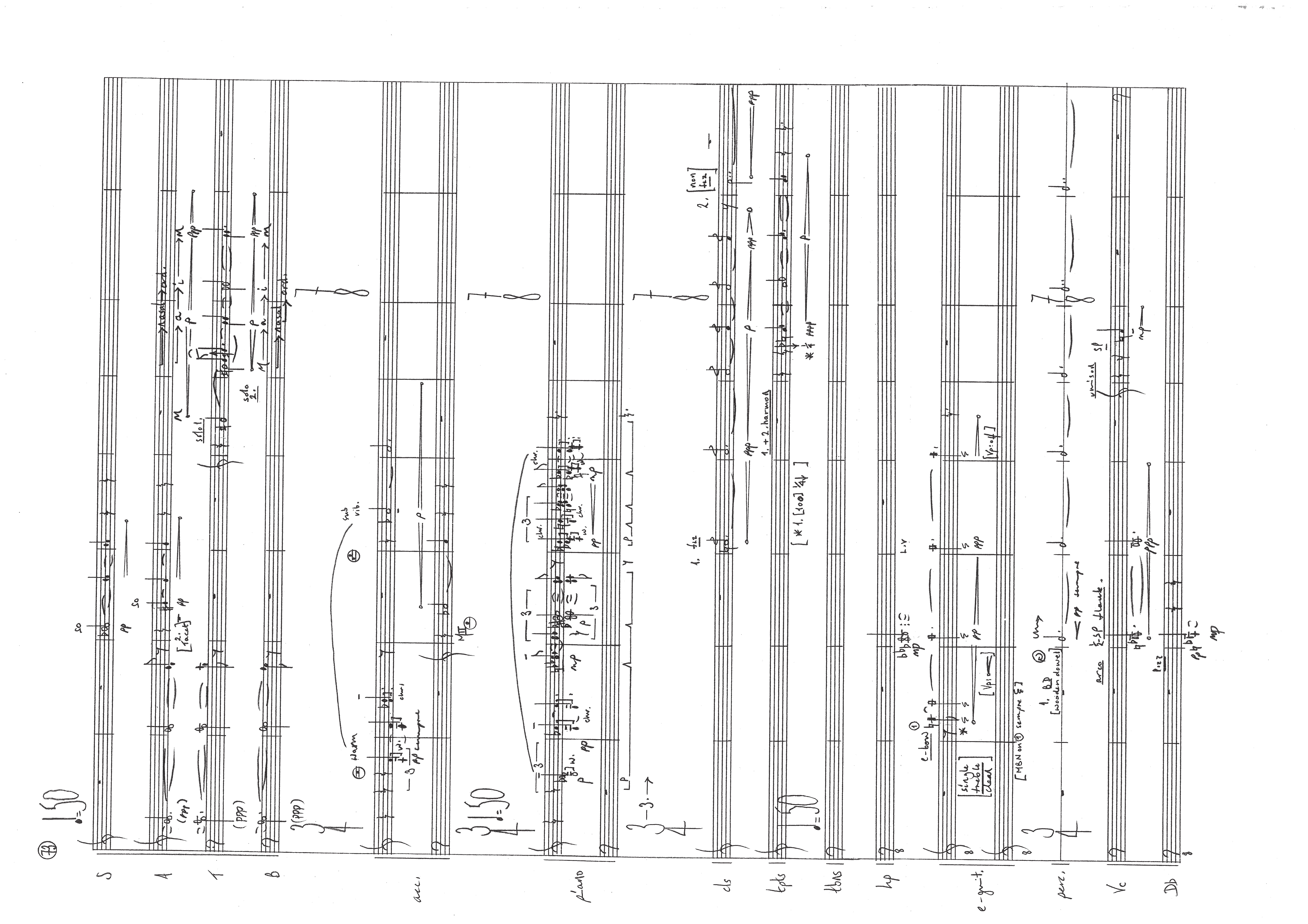

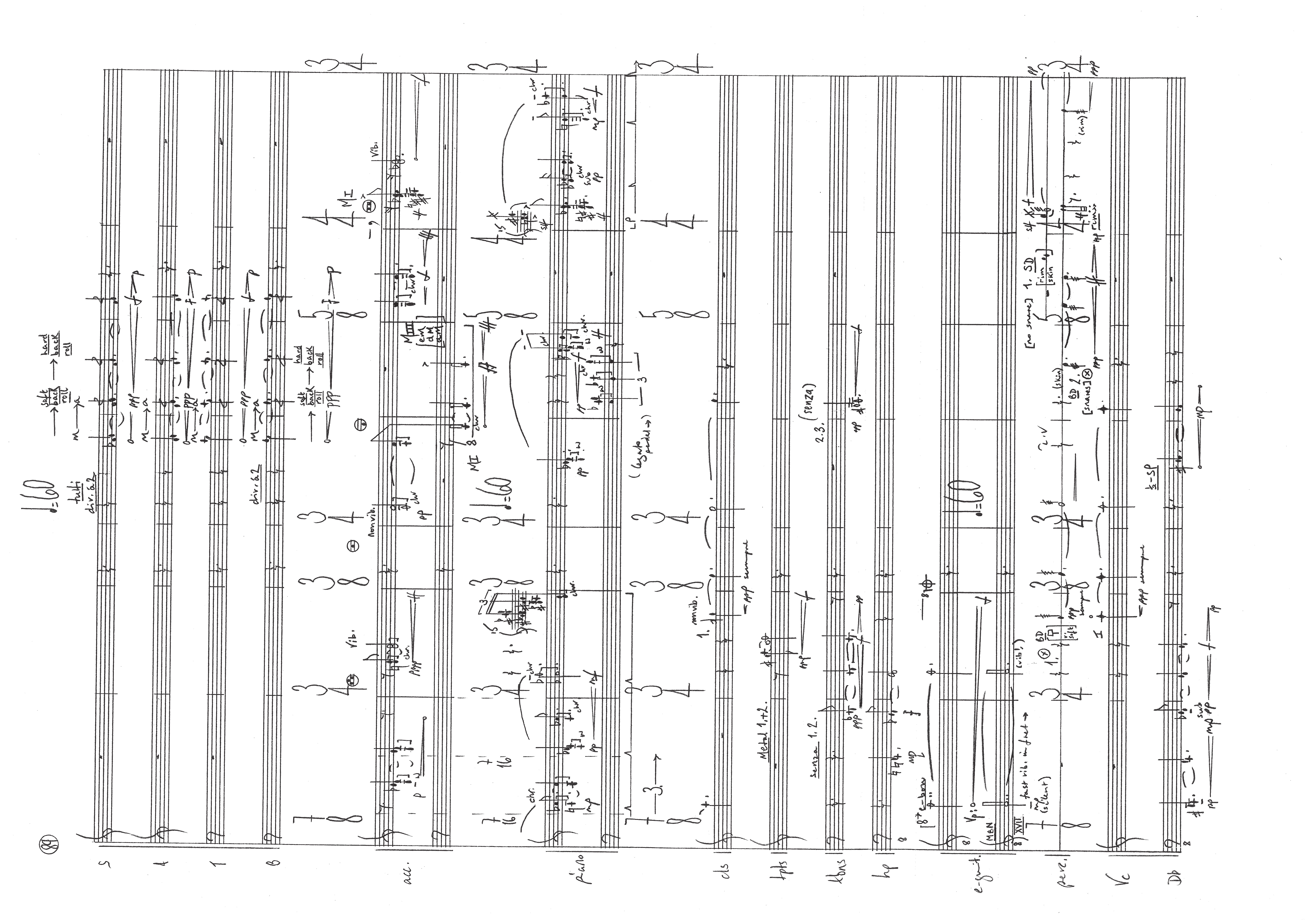
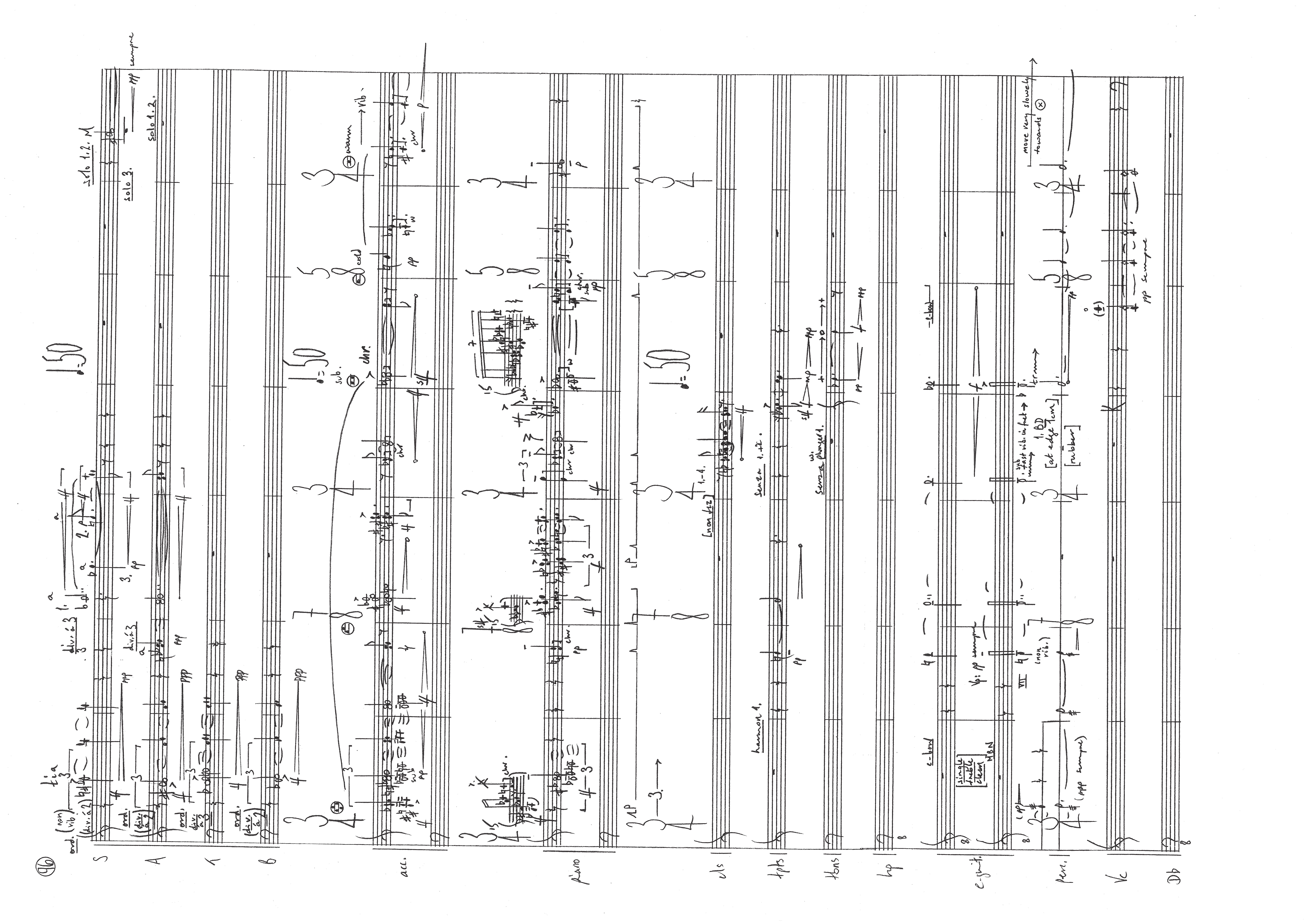
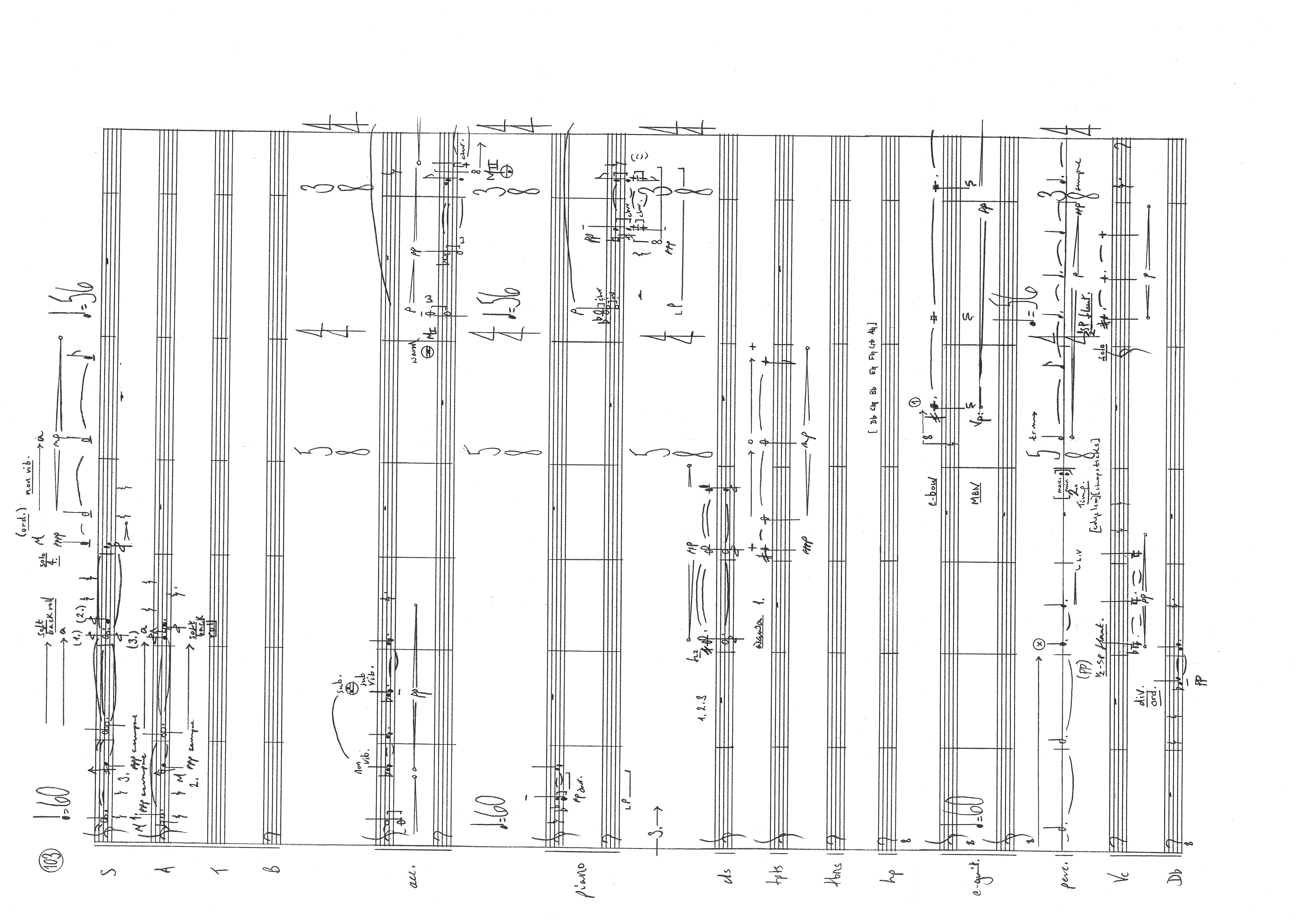
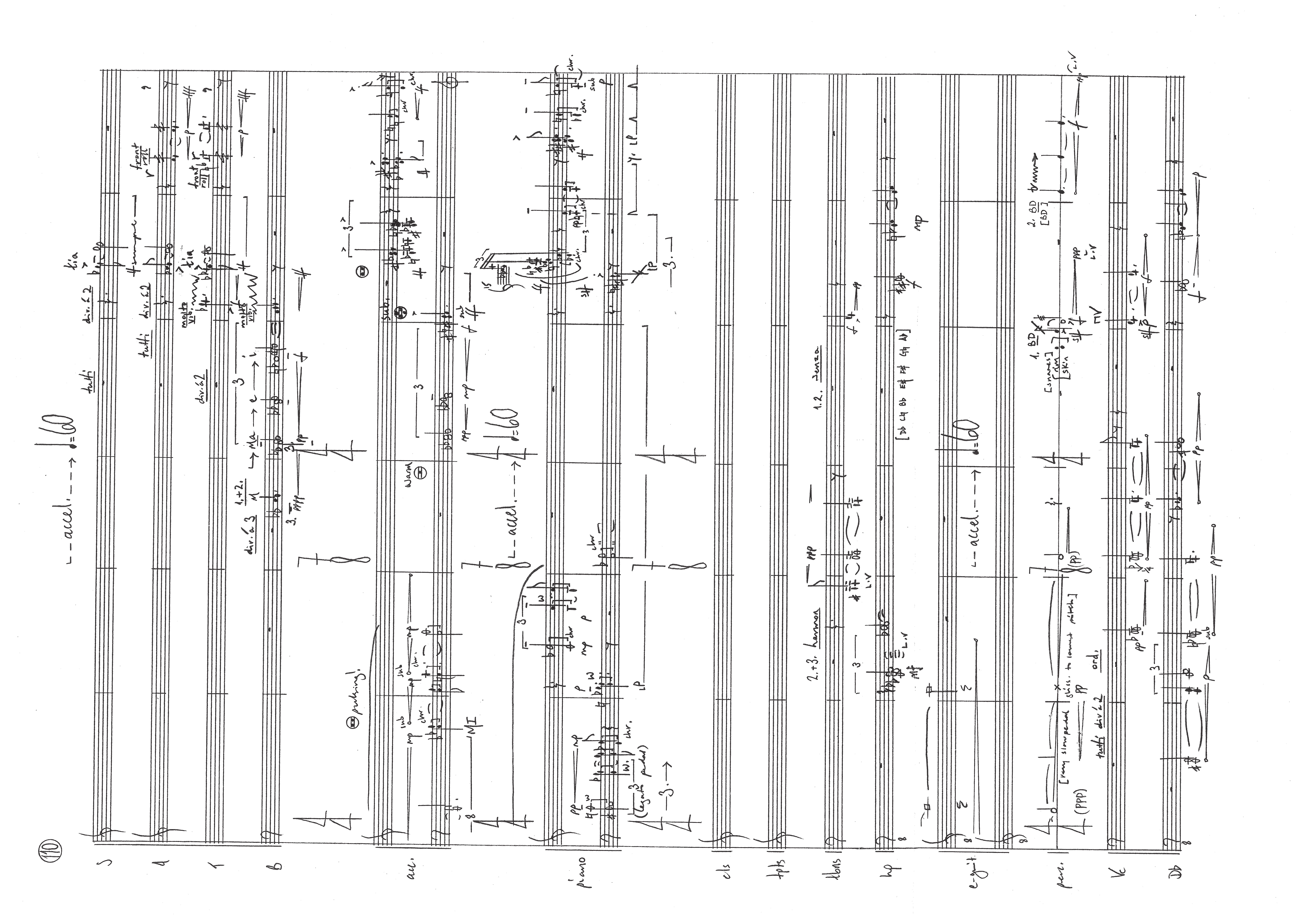

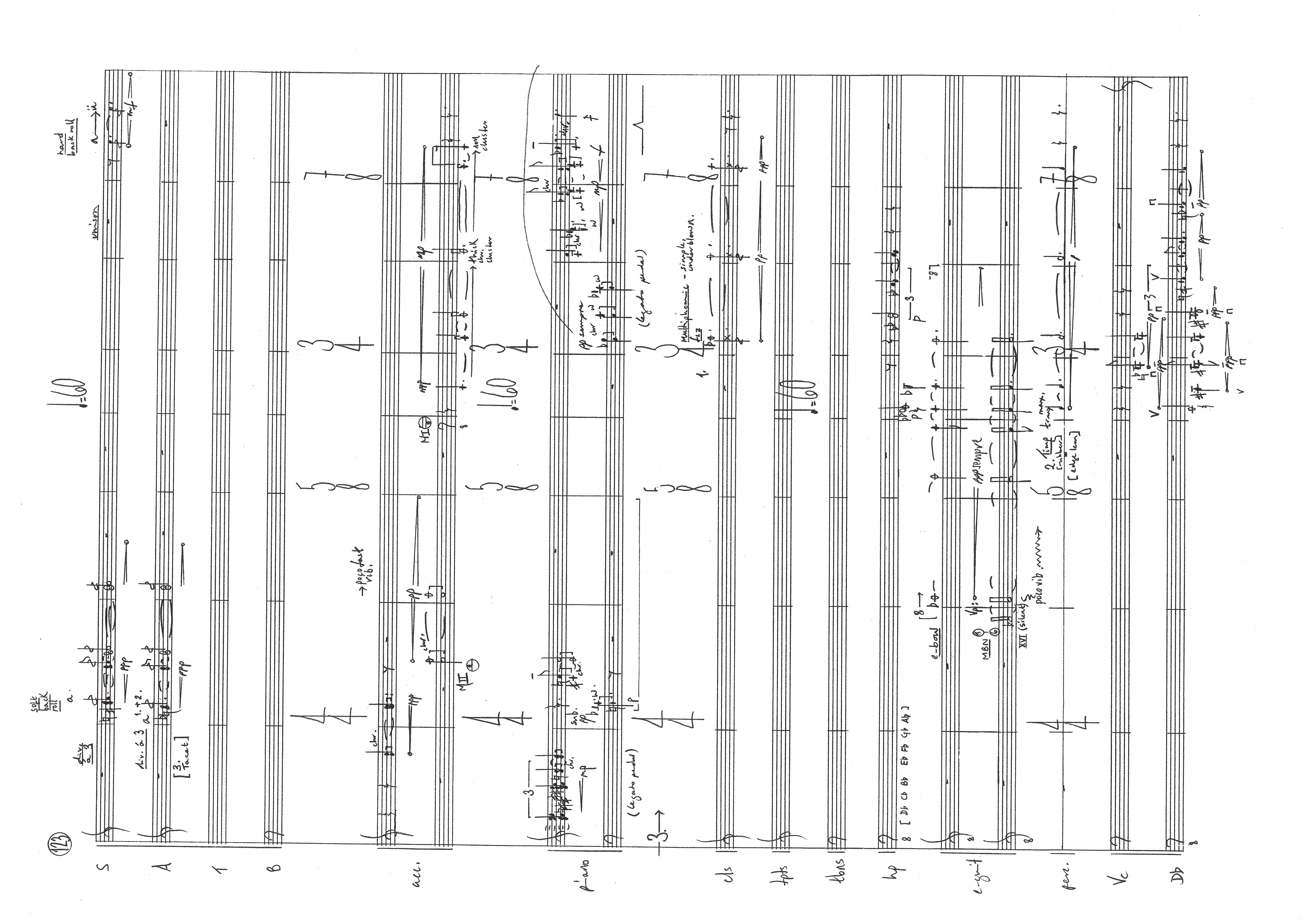
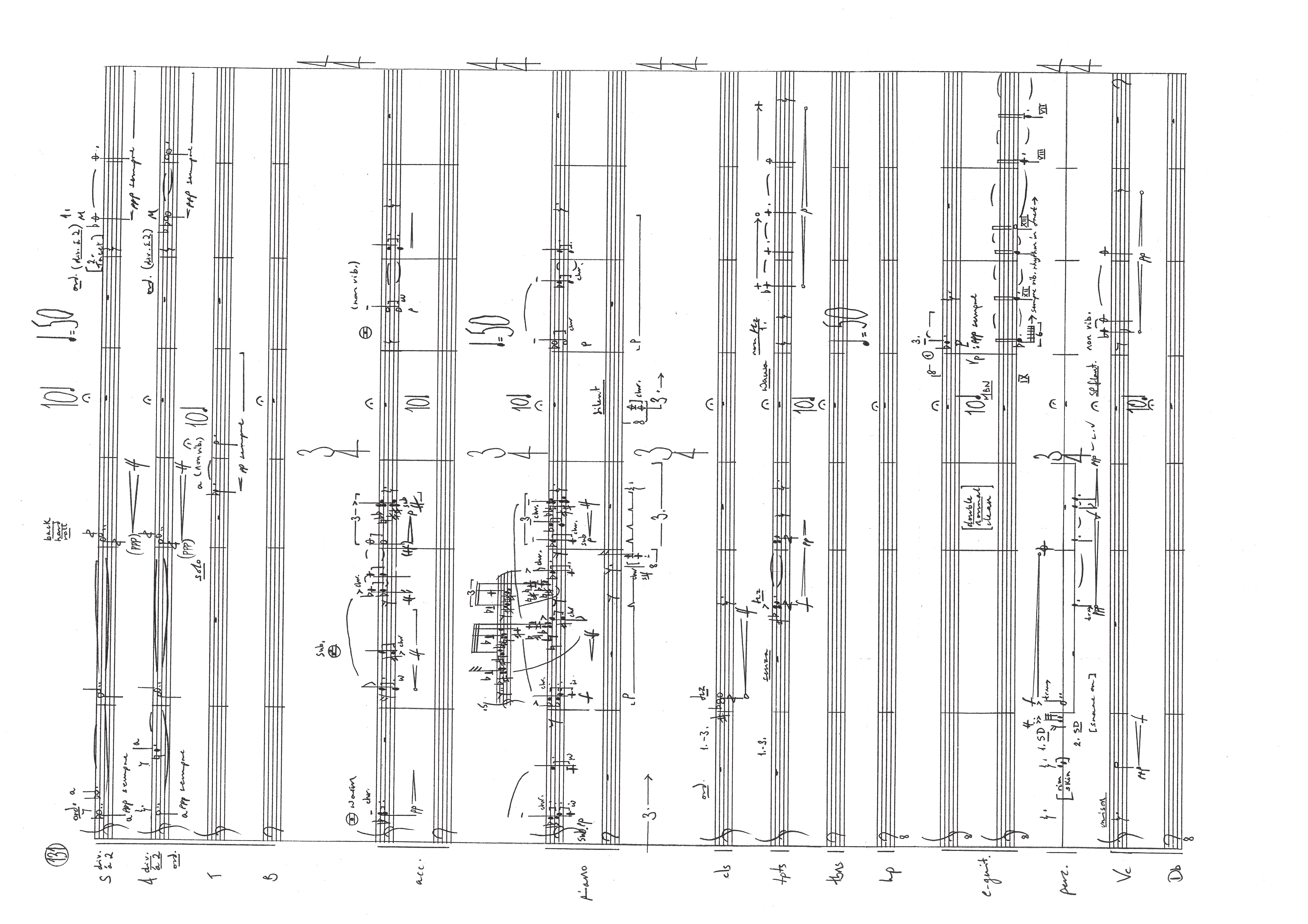
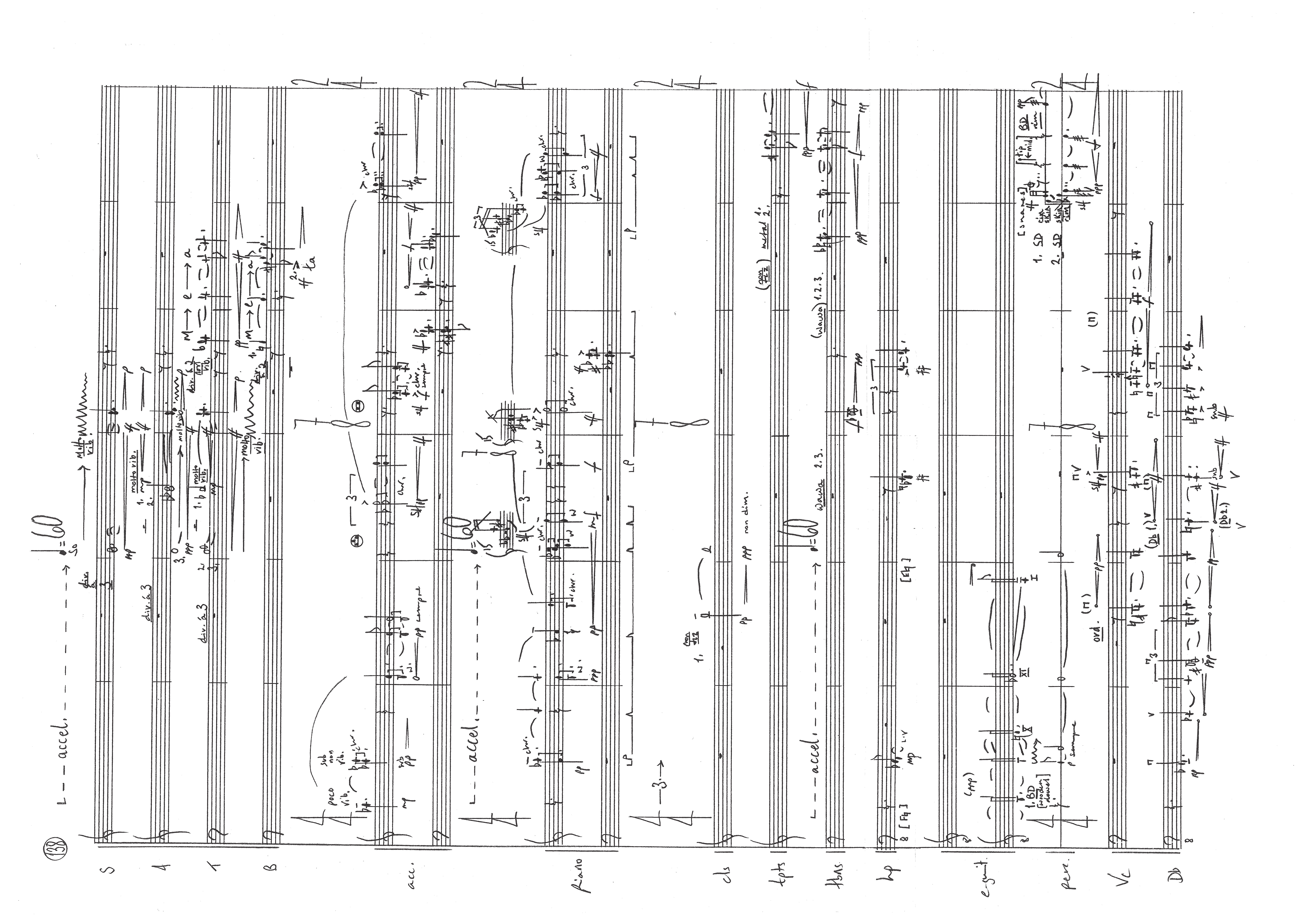
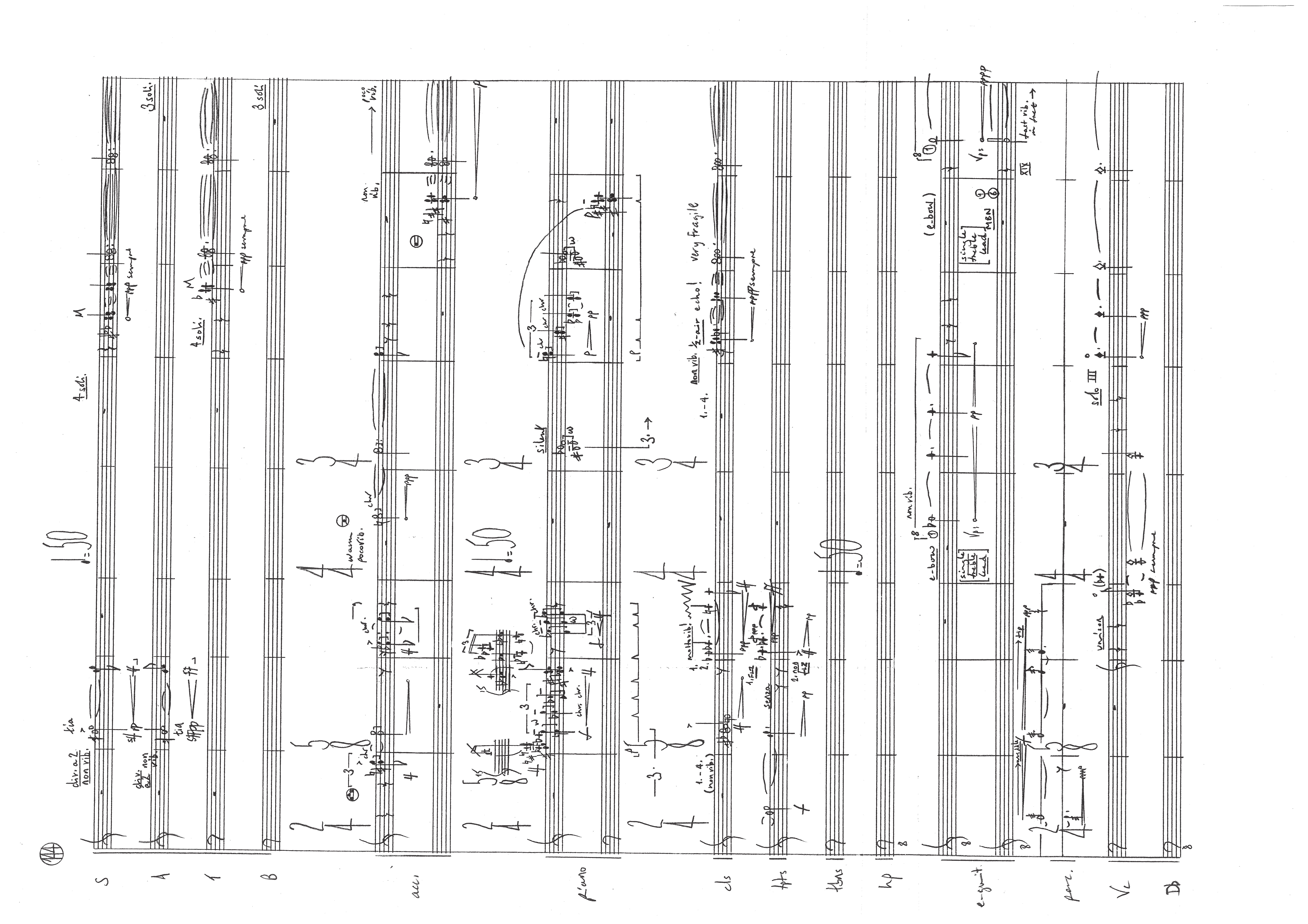
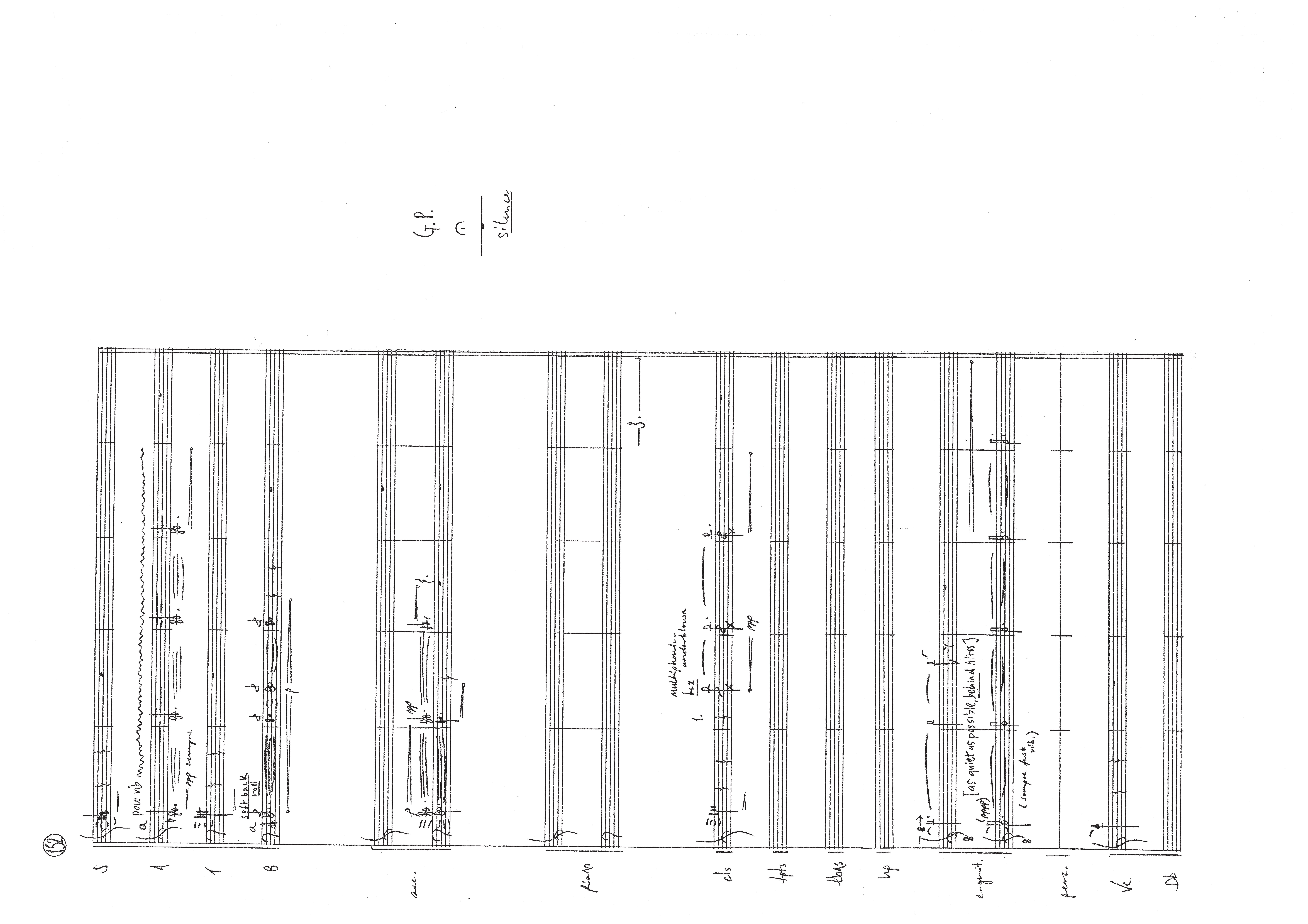

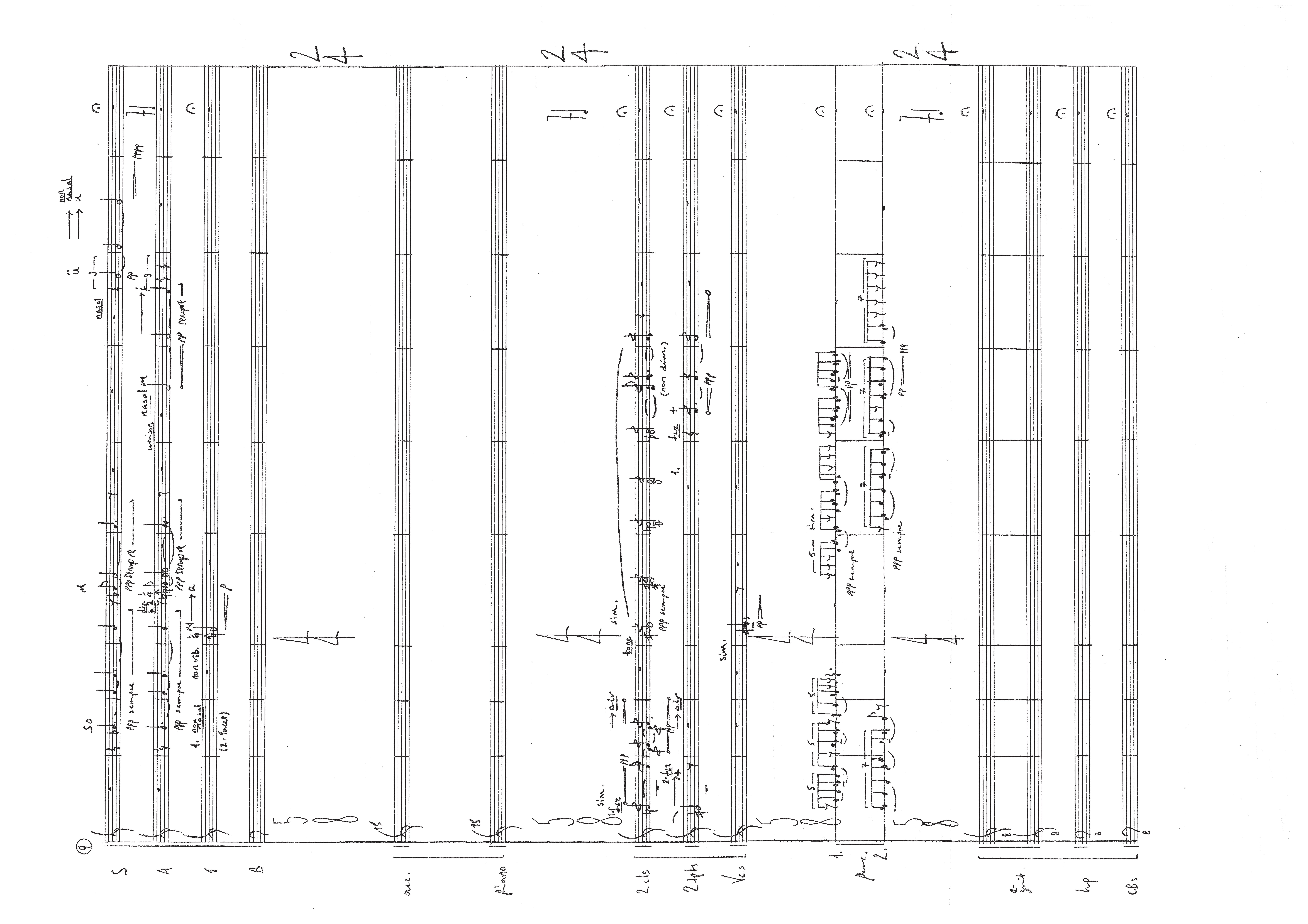

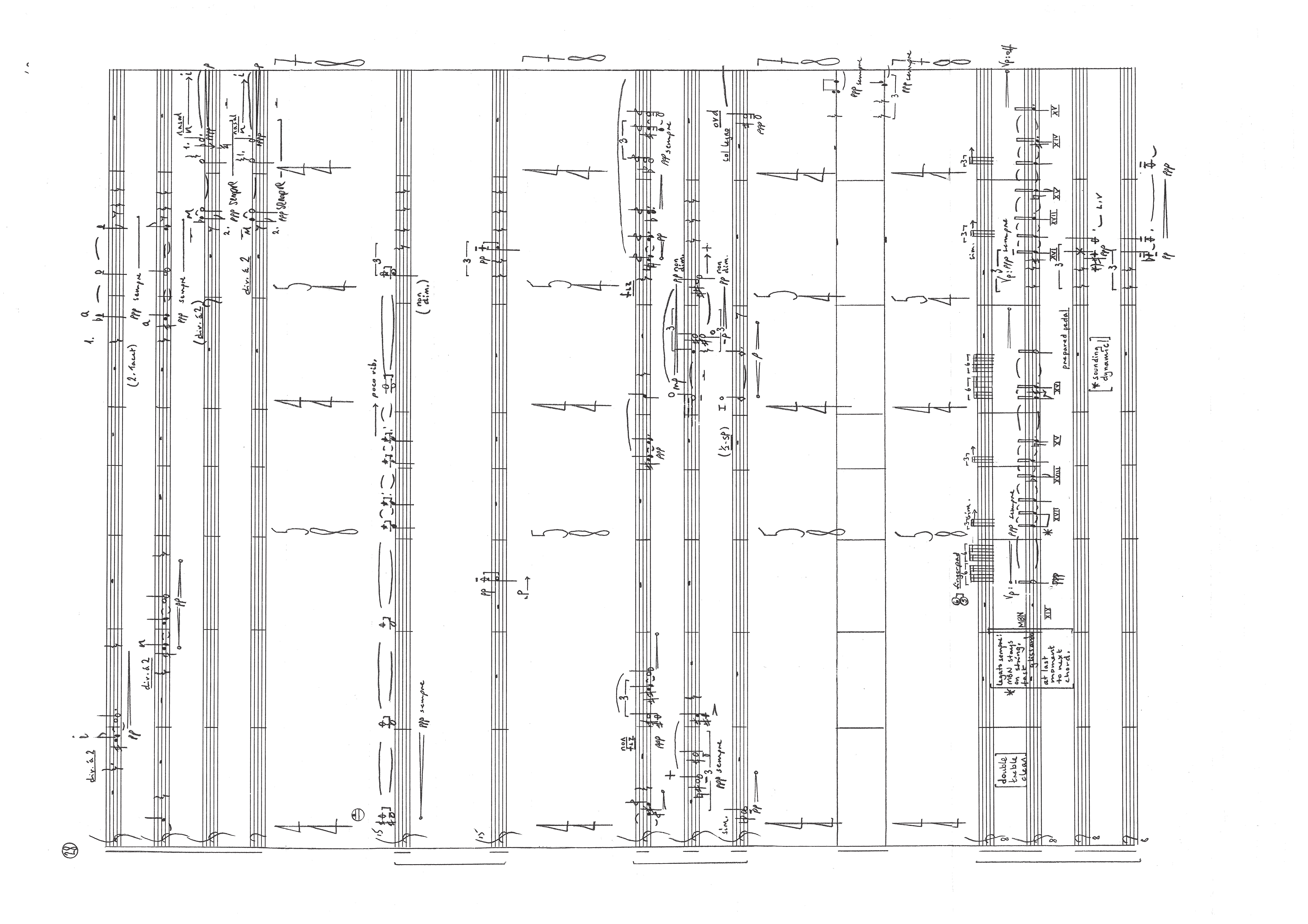
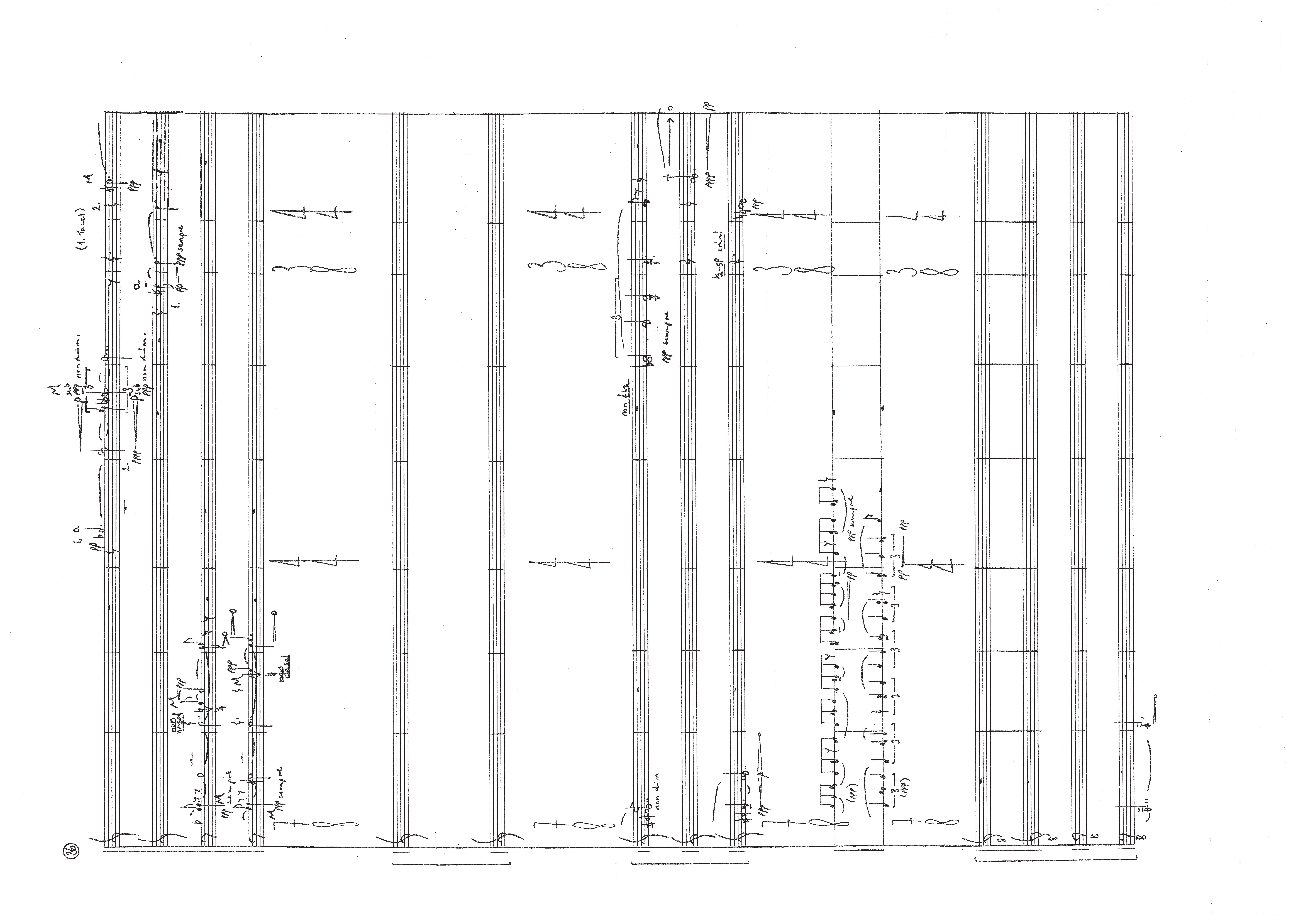
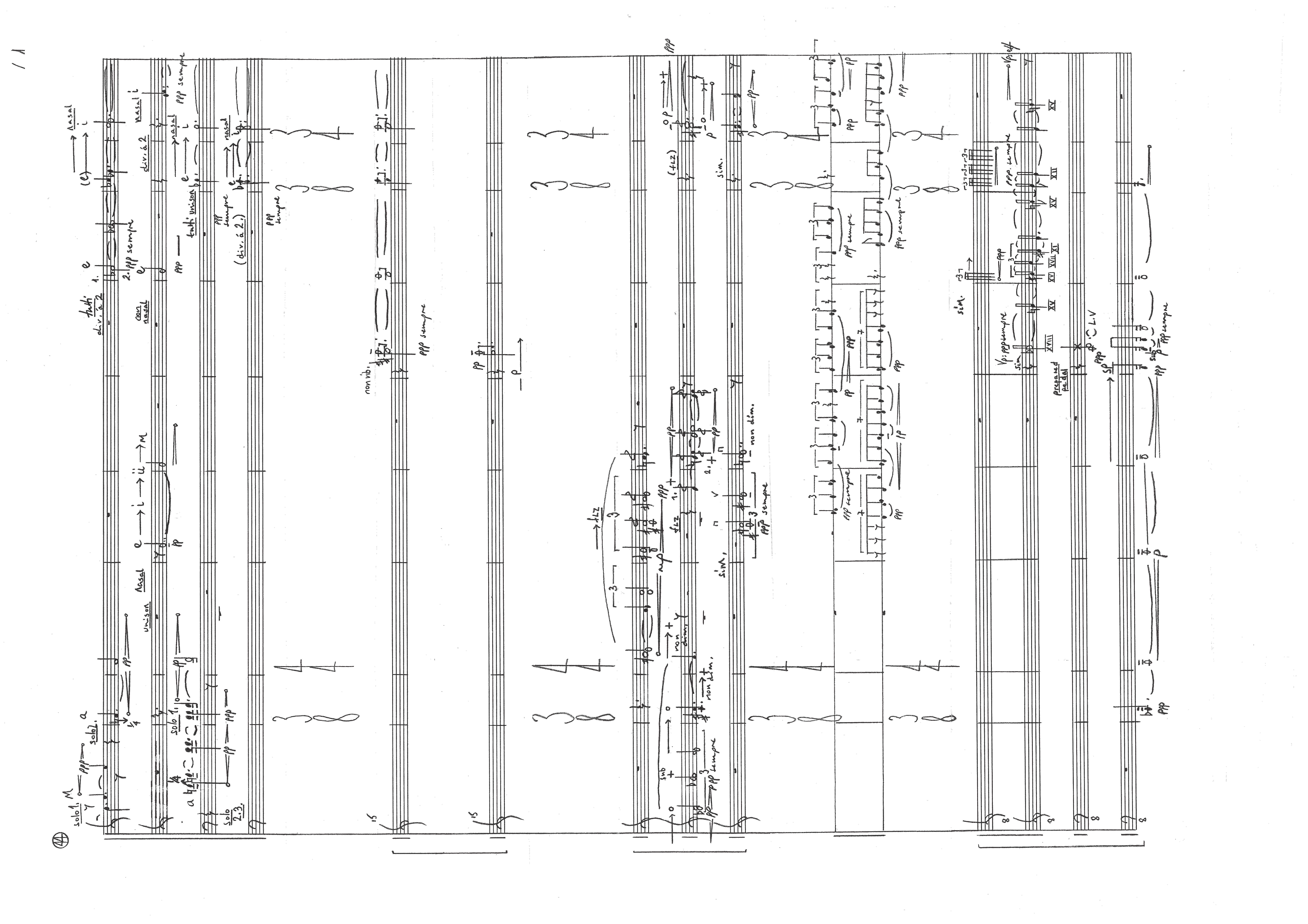
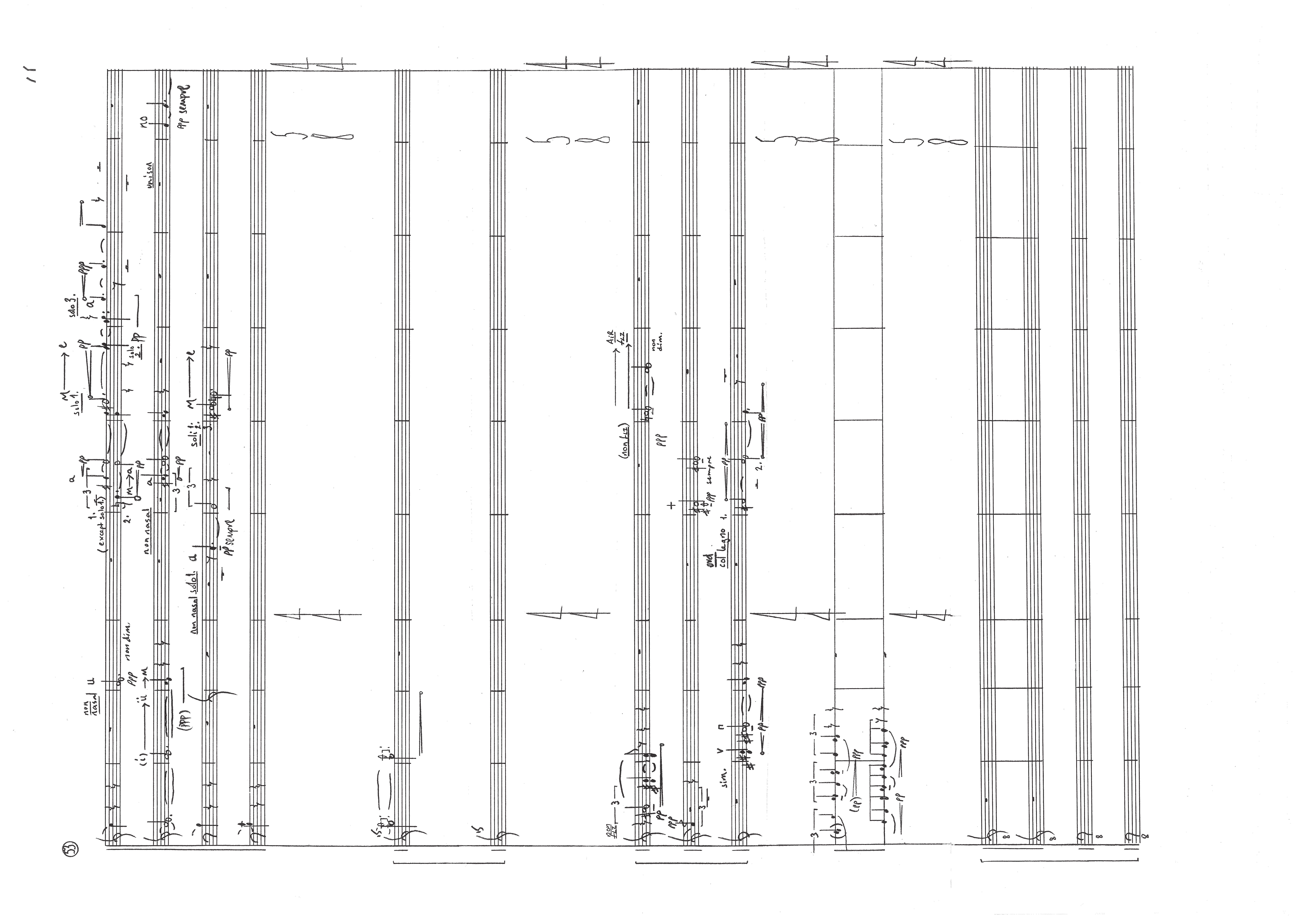
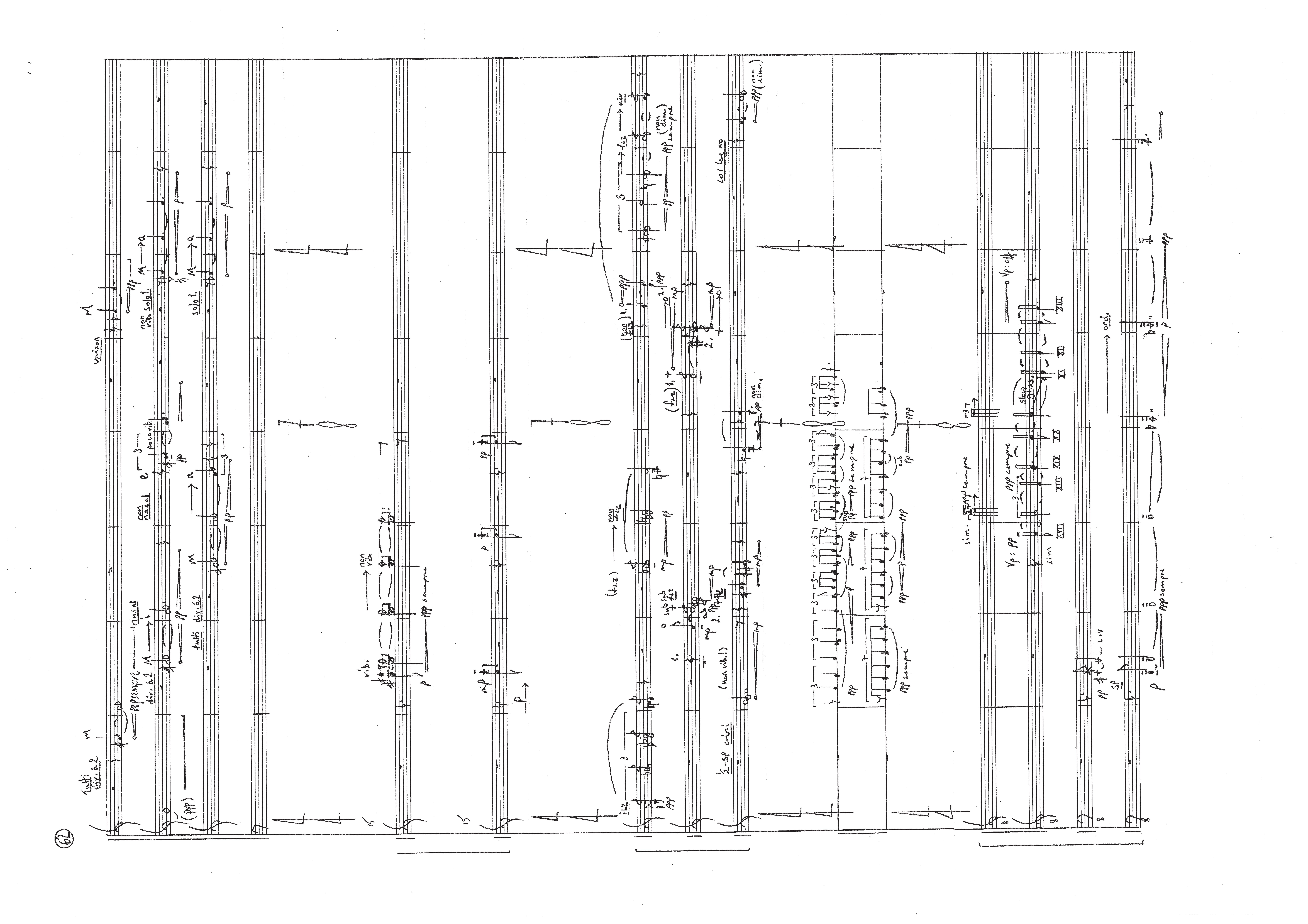
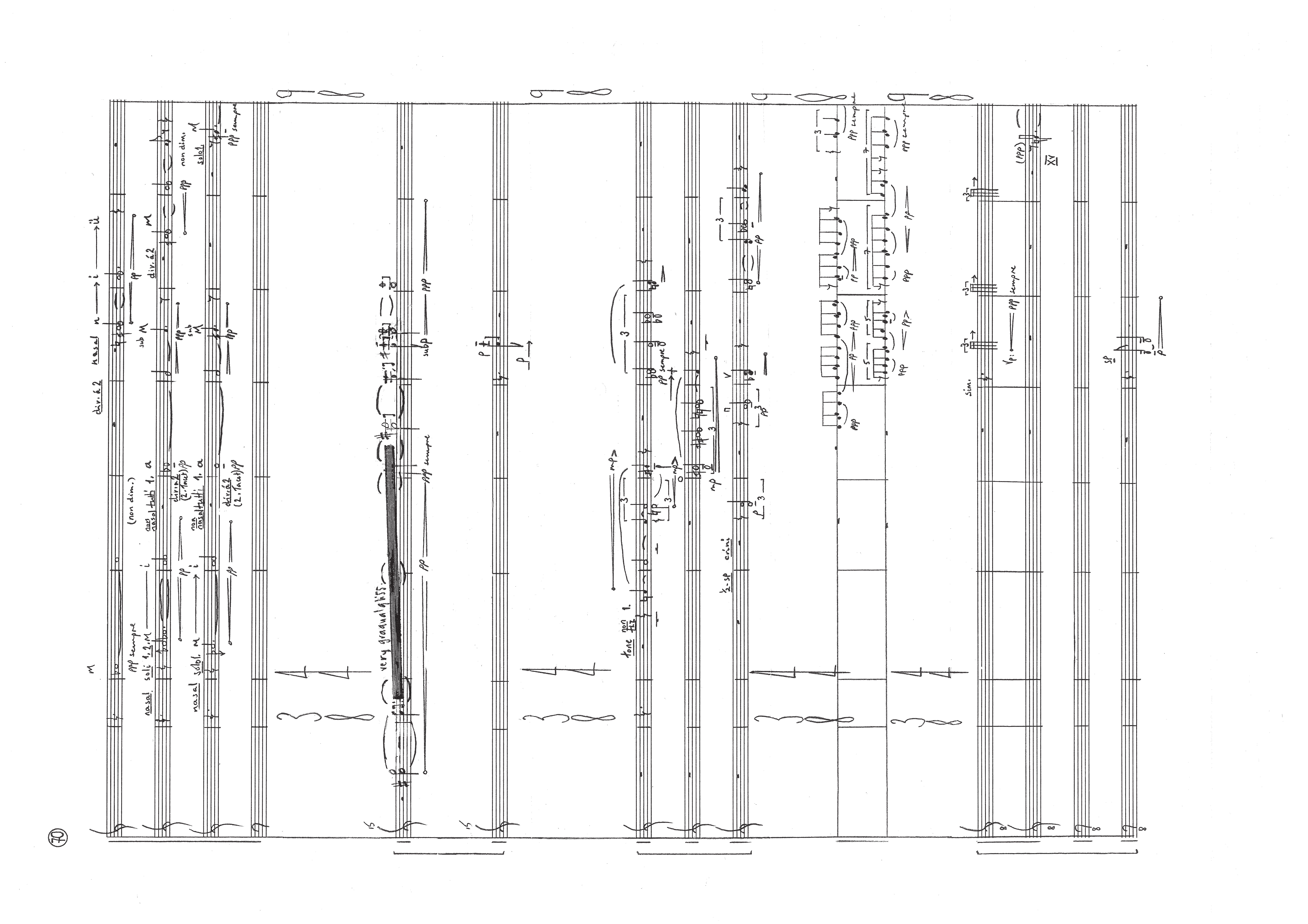
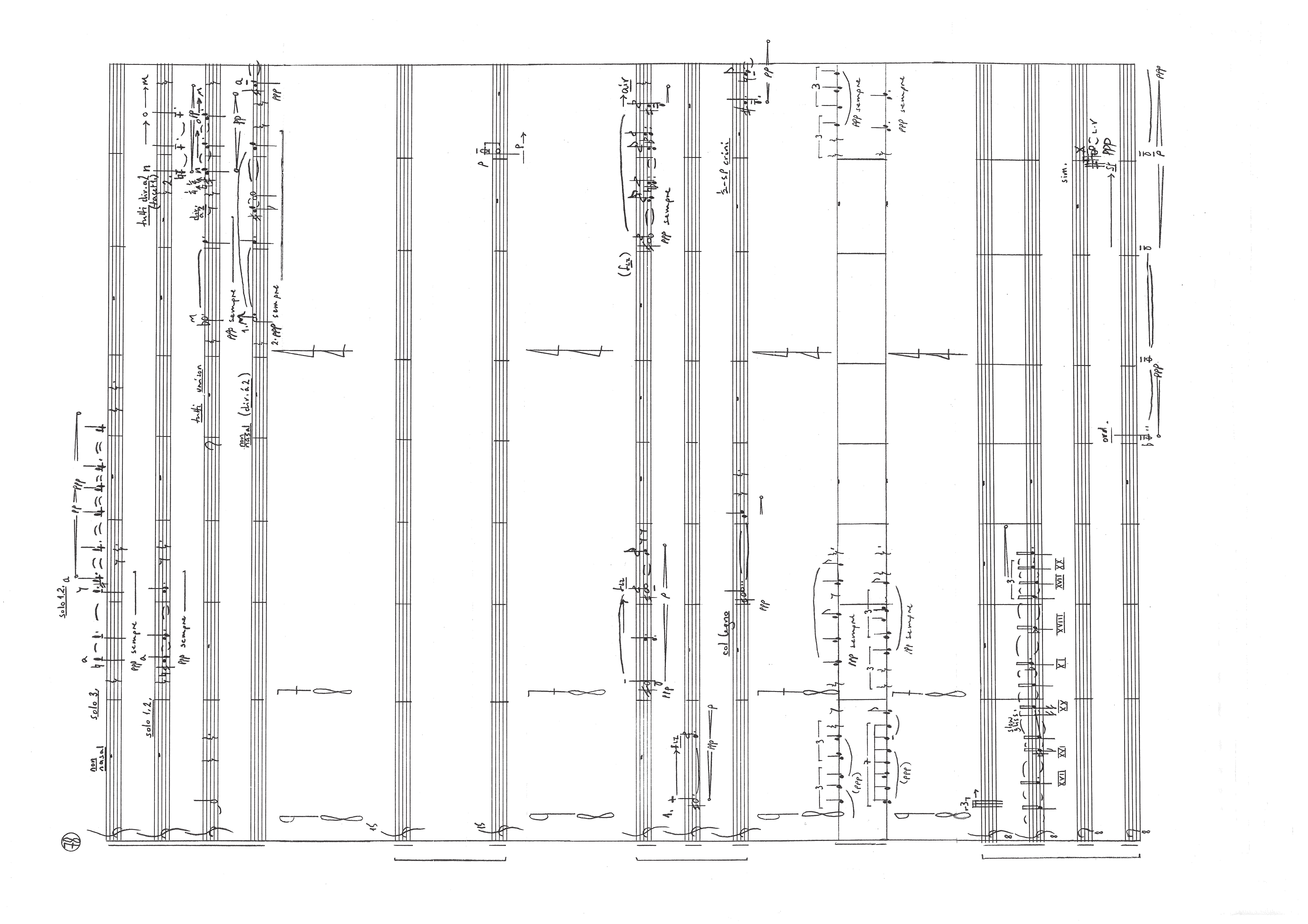
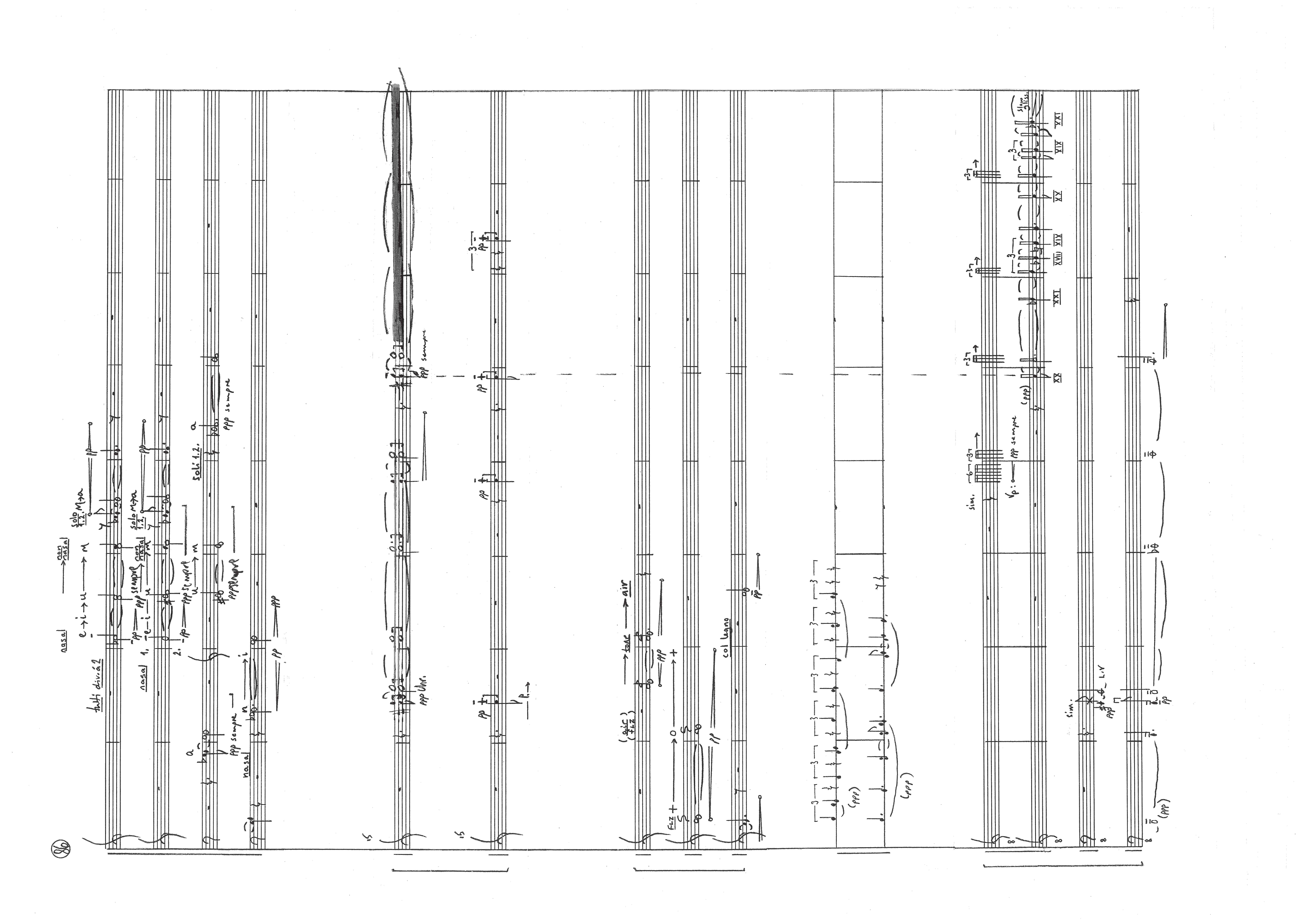
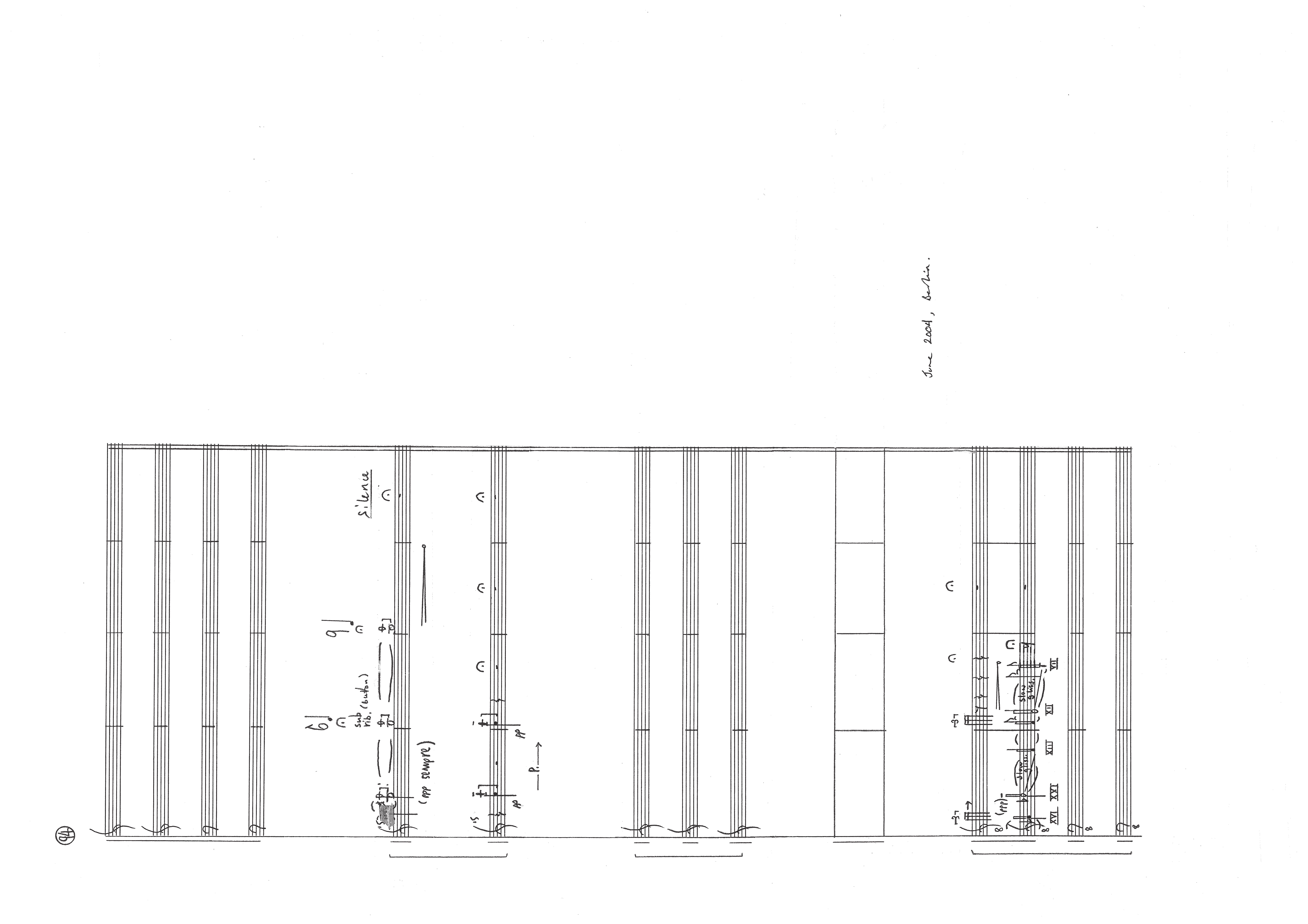
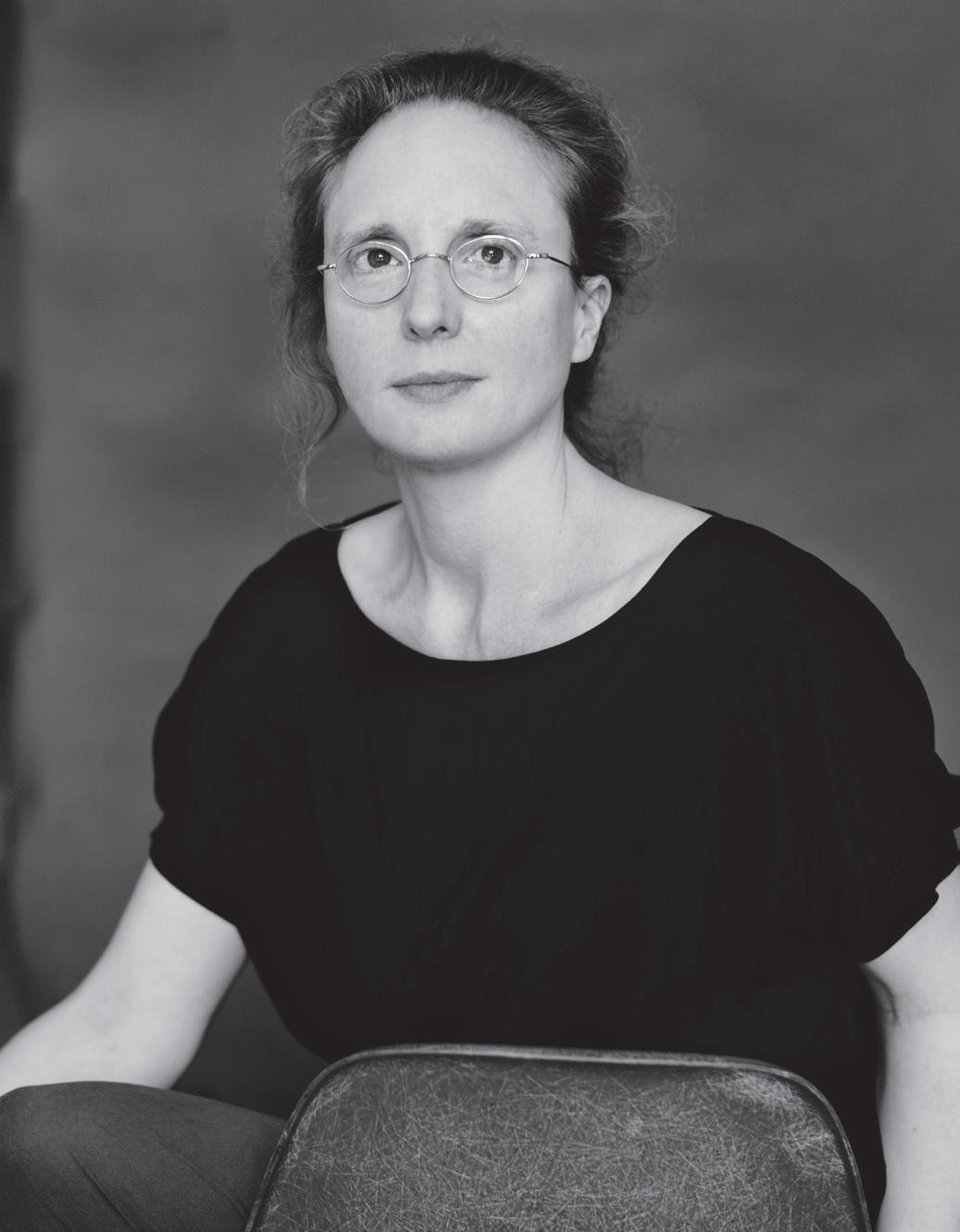
Rebecca Saunders (b. 1967) studied with Wolfgang Rihm at the Musikhochschule in Karlsruhe, Germany, and for a doctorate in composition with Nigel Osborne at Edinburgh University. She lives in Berlin. Saunders’ numerous composition prizes include three Royal Philharmonic Society Music Awards, two BASCA British Composer Awards and the 2019 Ernst von Siemens Music Prize. Her works have been performed at festivals including the Huddersfeld Festival, the Berlin Biennale and the Darmstadt International Summer Course. In 2009 she became a member of the Berlin Academy of Arts. Saunders’ works include chroma, for chamber groups distributed throughout the performance space; void, a concerto for percussion duo and orchestra; and Yes, a spatial performance for soprano, 19 soloists and conductor.
Rebecca Saunders (*1967) studierte Komposition bei Wolfgang Rihm an der Musikhochschule Karlsruhe und promovierte an der Edinburgh University bei Nigel Osborne. Sie lebt in Berlin. Saunders wurde für ihr Schaffen vielfach ausgezeichnet, u. a. mit drei Royal Philharmonic Society Music Awards, zwei BASCA British Composer Awards sowie mit dem Ernst von Siemens Musikpreis 2019. Ihre Werke erklangen bei zahlreichen Festivals, wie dem Huddersfeld Festival, der Berliner Biennale und den Darmstädter Ferienkursen für Neue Musik. 2009 wurde sie zum Mitglied der Berliner Akademie der Künste ernannt. Zu ihren Werken zählen chroma für räumlich verteilte Kammergruppen, ein Konzert für Schlagzeugduo und Orchester mit dem Titel void sowie die Raumperformance Yes für Sopran, 19 Solisten und Dirigent.